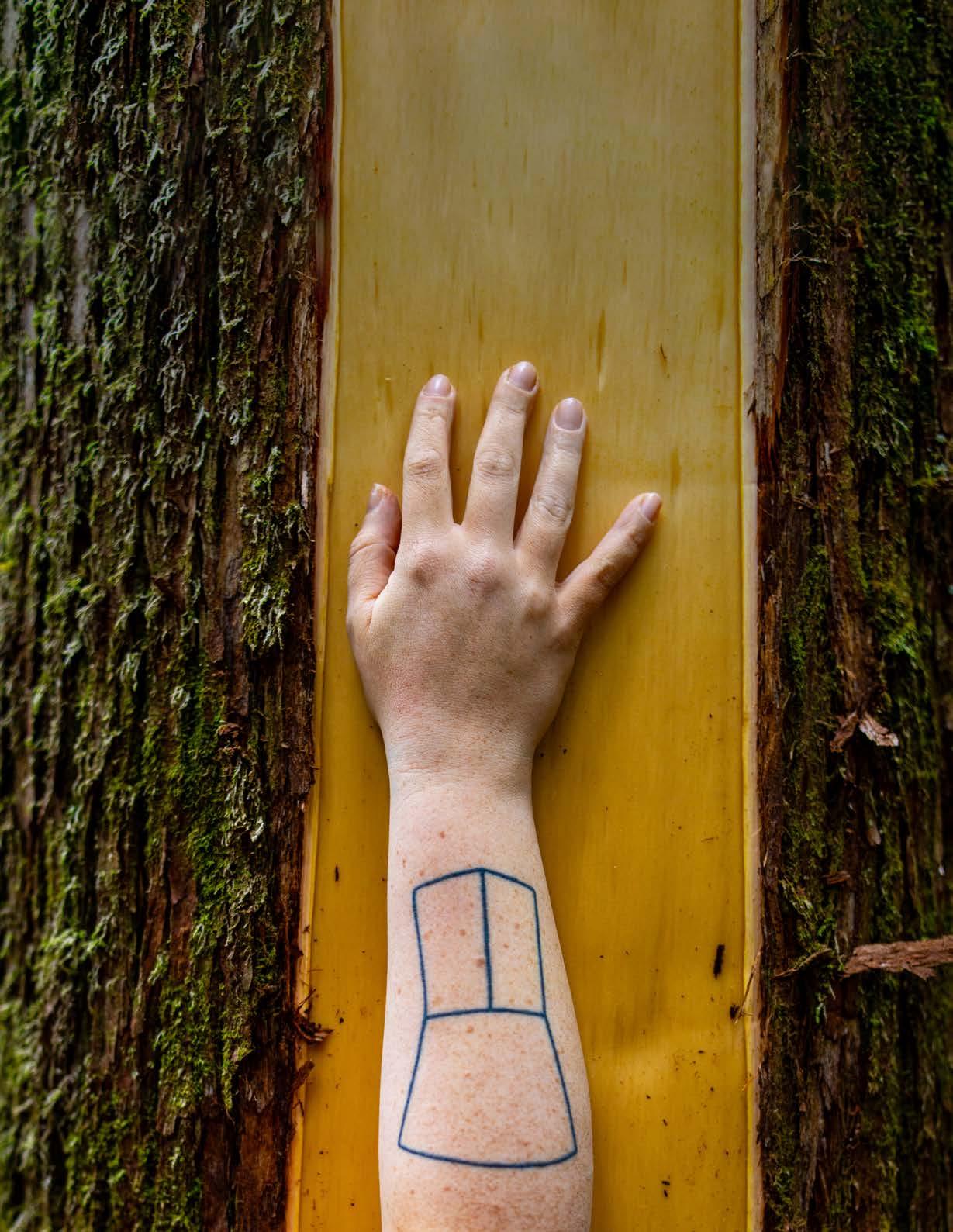
Aasgutuyík Tuwa.aa
ch
Peoples & Place ISSUE 01 / 2024
x
We Hear the Sound of the Forest SOUTHEAST ALASKA
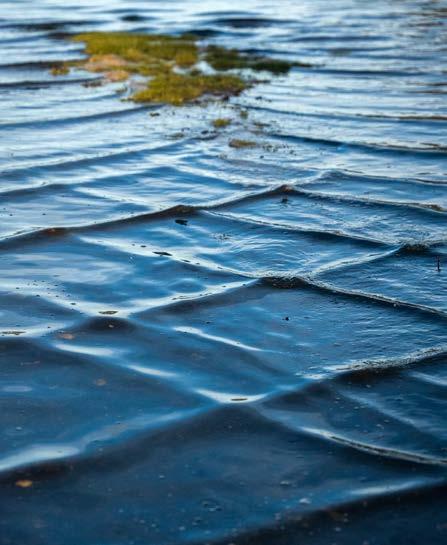
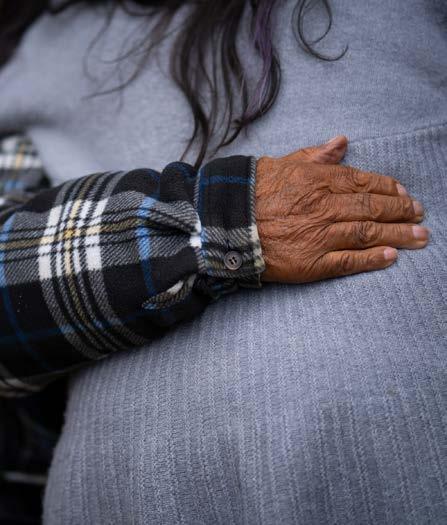
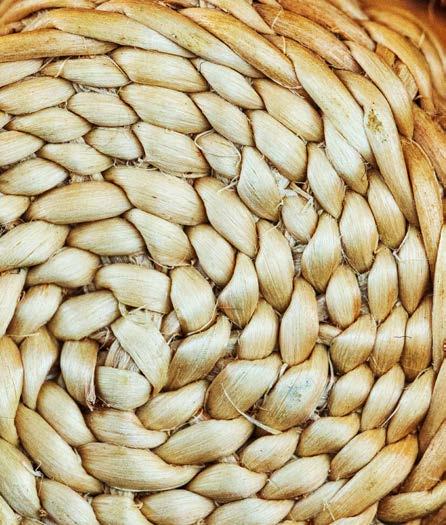
“Alone, as warps and wefts, we are fragile.
Woven together, we are strong enough to lift our communities.”
—Marina
CREATIVE TEAM
Bethany Sonsini Goodrich | Editor, project direction, content contributions
Lee House | Design, layout, content contributions
Shaelene Grace Moler | Planning, logistics, content contributions
Cover Photo: Marina Anderson rests her arm against a section of cedar where the bark has been carefully removed for weaving during a workshop with Tribal governments, artists, the United States Forest Service, Sitka Conservation Society, and Sealaska. Her tattoo is an outline of a Tin'aa or copper shield.
Photo: Bethany Sonsini Goodrich
Anderson, Sustainable Southeast Partnership Program Director
Peoples & Place
ISSUE 1 / 2024
Aasgutuyík Tuwa.aaxch
We Hear the Sound of the Forest
All it takes is one morning walk along a salmon stream, one dance at a Culture Camp where the box drum thumps your core, one commute home as the alpenglow erupts across the mountains, to know that Southeast Alaska is spectacular. Our home is unlike anywhere on earth.
These are the homelands of the Lingít, Haida, and Tsimshian Peoples who continue to care for, steward, and honor the lands and waters that sustain all Southeast Alaskans. This rainforest is intact and abundant. These towering old growth forests store the carbon equivalent of six million cars a year while producing a quarter of all the salmon in the Pacific Northwest. Our communities practice a unique way-of-life that is rapidly disappearing across the globe. By caring for this region, we care for the world.
The Sustainable Southeast Partnership is a dynamic collective uniting diverse skills and perspectives to strengthen cultural, ecological, and economic resilience across Southeast Alaska.
These are our stories.
WOVEN 1
Stories Matter
Stories help us understand what is possible. They evoke pride and empathy and can help us better understand our neighbors. With time, the stories we tell about ourselves and our communities have the power to shape us. They introduce us to new ideas, challenge unjust systems, and expose us to healthier practices. They can hold institutions and policy makers accountable, capture important histories, and teach new skills. Stories give us hope and when done at the right scale and in the right way, they have the power to activate us.
Storytelling is the foundation of life in Southeast Alaska where Lingít, Haida, and Tsimshian communities have honored its significance for over ten thousand years. This is why, when the Sustainable Southeast Partnership (SSP) came together nearly a decade ago, before we could even articulate our mission or values, we agreed that storytelling would be a foundational tenet to our work.
For the past decade, we have used solutions storytelling to connect our geographically separated communities and ideologically diverse partners — building a movement of impassioned Southeast Alaskans. As the SSP grew, so grew our investment in storytelling, from my individual position into a team of three, with a robust internship program.
Lee House, Shaelene Grace Moler, and Kaa Yahaayí Shkalneegi Muriel Reid, all whose creativity and care is found across these pages, all began as interns. Today they work full-time with partners of the SSP.
Without this growing team, ‘Woven’, a long held dream, would never be a reality. We built this publication entirely in-house from the design, to the individual stories, artwork, graphics, and photographs. That authenticity shows across this book from the ways that people share vulnerabilities with us, to the meticulous care with layout. Woven is our love letter to the SSP because as storytellers, we have seen and reported on the positive life-changing impacts of this work for many years. We believe in the power behind these stories and hope that you will too.
Woven is our attempt to connect the many threads of the Sustainable Southeast Partnership into a single tapestry of collective impact. To see all at once, how teaching youth to smoke salmon connects to our local economy. How the restoration of lands and waters connects to healing. These stories and voices are connected because we are connected: Woven together we are strong.
Happy Reading,

Bethany Sonsini Goodrich
Storytelling Catalyst
Sustainable Southeast Partnership Sitka Conservation Society
2 SUSTAINABLE SOUTHEAST PARTNERSHIP
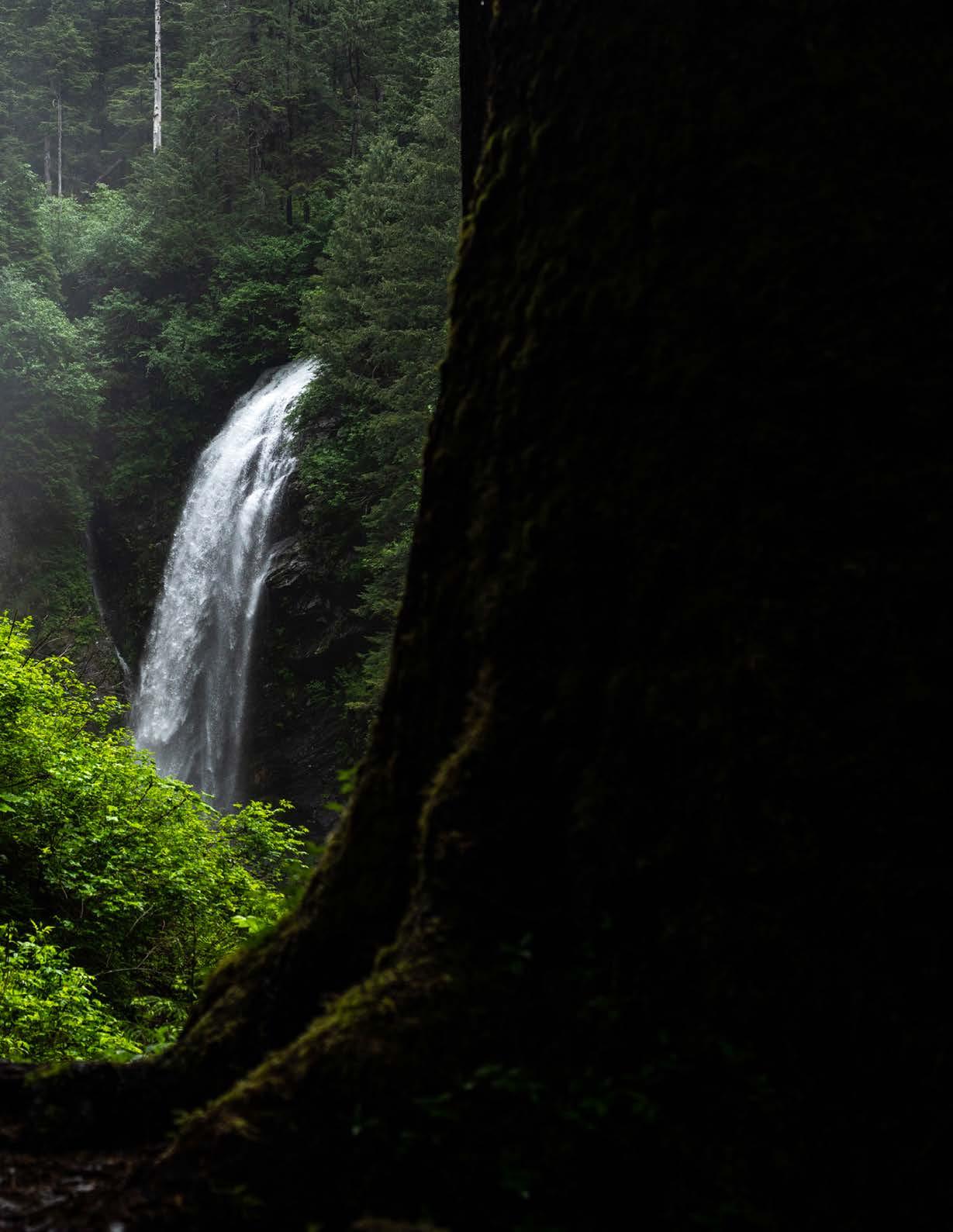
ISSUE 1 THEME
Aasgutuyík Tuwa.aa x ch
Lingít for ‘We Hear the Sound of the Forest’
Aasgutuyík Tuwa.aaxch, pronounced with a hightone i and a guttural x, is Lingít for “We hear the sound of the forest.” Kaa Yahaayí Shkalneegi Muriel Reid proposed this as our first theme based on resources compiled by Weihá Jeff Leer, Keri Eggleston, and others, with additional insight from X'unei Lance Twitchell. Lingít, Xaad Kíl, and Sm'algyax are the languages of the Lingít, Haida, and Tsimshian people.
As described between these pages, language is more than just words. Language is a means for interpreting the world. Language helps us to relate to place, to ancestors, and to one another.
Gunalchéesh, Háw'aa, and T'oyaxsut 'nüüsm to the language learners and leaders working to ensure that the sounds in these forests always include Lingít, Xaad Kíl, and Sm'algyax.
Put your ears to this publication and listen gently. Can you hear the sounds of the forest?
Spawning salmon slap their tired bodies on restored natal streams. A tree coring device creaks as an Alaska Youth Steward twists it into the side of an ancient cedar tree. A group exhales deeply while lowering their bodies into the cold Pacific.
Gunalchéesh, Háw'aa, and T'oyaxsut 'nüüsm for listening with us.
WOVEN
Photo: Bethany Sonsini Goodrich


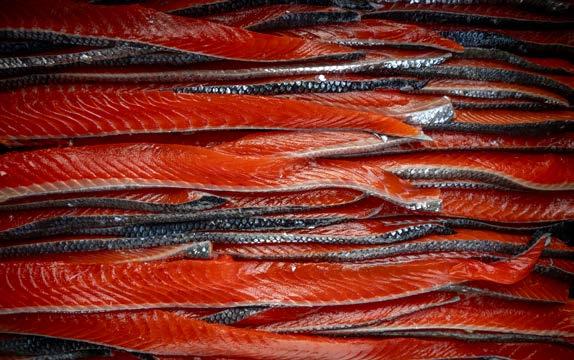

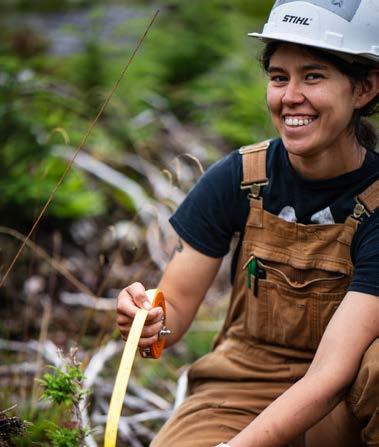
4 SUSTAINABLE SOUTHEAST PARTNERSHIP CONTENTS Stories Matter Letter from the editor 02
Harvesting, Sharing, and Stewarding The wild foods and medicines that bring us together Healing the Land Together Community Forest Partnerships, collective restoration, and models of success for shared stewardship
Youth Stewards: Where Are They Now? Shaping the future of Southeast Alaska What Are We Working For & Toward With Program Director Marina Anderson and Steering Committee Member Anthony Mallott The Sustainable Southeast Partnership Mission, vision, structure, values Collective Impact A snapshot of our 2023 impact with Regional and Community Catalysts 06 09 30 16 23
Abundance:
Alaska
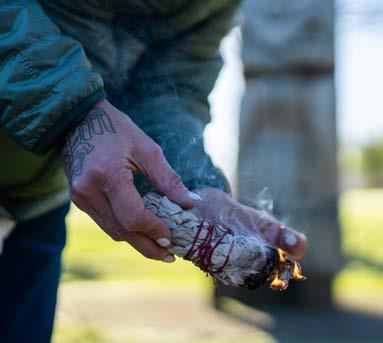
Catalyzing Healing
A Q&A with Healing Catalyst
S'eíltin Jamiann Hasselquist
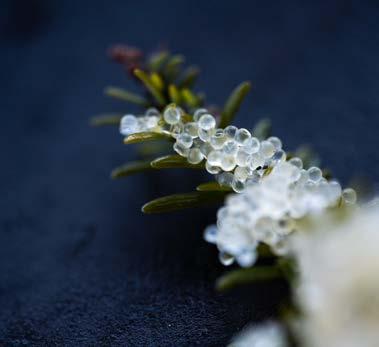
Launching the Seacoast Indigenous Guardians Network
An expression of our sovereignty
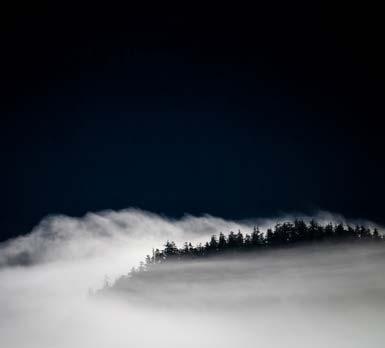
The Seacoast Trust: Generational Abundance
Supporting our work in perpetuity
Divided United on Policy
Advocating for our communities, holding our differences
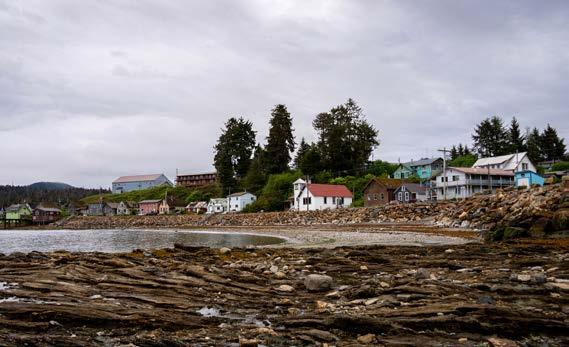
An Energy Secure Angoon: Catalyzing Career Pathways for Youth
A community career fair at the precipice of the clean energy transition

Celebrating & Supporting Southeast Alaska's Growing Arts Economy
More than an economic booster
Meet
WOVEN 5
64 36 54 52 48 60
Looking Forward... Gah Kith Tin Alana Peterson shares excitement for the road ahead
41
Engage With Us
our team and get involved 62
The Sustainable Southeast Partnership
We envision self-determined and connected communities where Southeast Indigenous values continue to inspire society, shape our relationships, and ensure that each generation thrives on healthy lands and waters.
Founded in 2012, the Sustainable Southeast Partnership (SSP) is a dynamic collective impact network uniting diverse skills and perspectives to strengthen cultural, ecological, and economic resilience across Southeast Alaska.
Our Structure
SSP Steering Committee
With balanced representation of regional and village organizations, the SSP Steering Committee is composed of between 9-15 individuals who provide overall program oversight and help with policy development, fundraising, partner relations, and network priority setting. Quarterly meetings are open to all SSP partners and Committee Members serve 3-year terms.
Backbone Support: Spruce Root
As the sponsor of the SSP, Spruce Root employs central support positions including the Program Director, Deputy Director, and Communications Catalyst. They manage the SSP budget and expenses, ensure compliance with laws and regulations, convene in-person and remote gatherings, and provide inspirational leadership to partners.
Regional & Community Catalysts
Wider Partners & Collaboration
Catalysts are core to the SSP, representing different communities and regional focus areas. They are hosted by organizations, Tribal governments, municipalities, or Alaska Native corporations. Catalysts gather in-person during 3 annual gatherings and twice per month remotely, while working together to realize meaningful projects for their communities and region. Beyond formal catalysts, the SSP includes federal agencies, schools, interested individuals, entrepreneurs, and countless collaborating partners. The only requirement for joining the SSP is having interest in supporting the SSP vision and mission and participating in network activities.
6 SUSTAINABLE SOUTHEAST PARTNERSHIP
Values-led
We believe that the sincerity of our process is as important as the outcomes of our collaboration. These nine values guide how we show up for one another and our communities and what initiatives we prioritize and build.
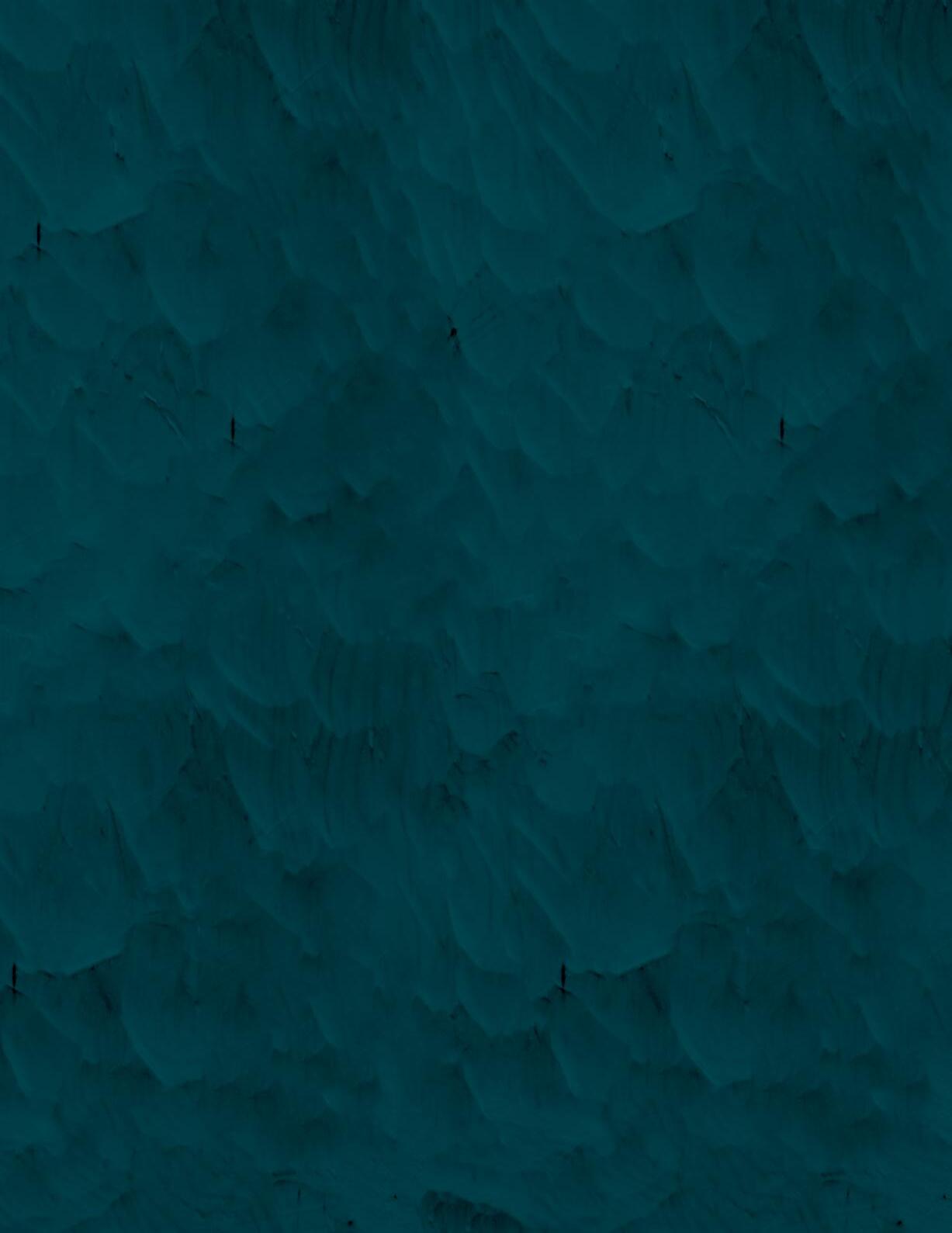
Relationships First
Our Partnership is built on a foundation of trust established and maintained through respectful, reciprocal, and enduring relationship building. Trust takes time. We are patient and dedicated to putting relationships first and showing up as our honest, complex selves.
Balance
We balance cultural, ecological, and economic well-being while supporting a diversity of perspectives, disciplines, and knowledge systems in the process.
Tribal Sovereignty & Community Determination
Our work is driven by, identified by, and led by our communities. We work to shift more agency, authority, and governance into the hands of the people who live, work, and thrive in Southeast Alaska. We recognize and honor that Lingít, Haida, and Tsimshian Sovereignty spans thousands of years, since time immemorial to the present and forevermore thousands of years.
Kuxhadahaan.Adaayoo.analgein is Lingít for ‘Stop, observe, examine, act'
We work with intentionality and seek continuous improvement based on reflection and adaptation. Our actions are strategic and reflect a coherent plan. We are continuously learning from each other and the environment, giving rise to innovation.
Intentional Collaboration
Our Partnership creates a safe environment for honest dialogue and respectful disagreement. We share and leverage our unique resources for our shared mission. While collaborating, we ask ourselves: “Who is missing from our table?"
Courage & Follow Through
We strive to model our values in action and show up for each other, our communities, and our mission.
Growth & Collective Learning
We invest in ourselves and each other and prioritize building the capacity of our communities through knowledge and skill sharing, apprenticeships, and formal programs. We cultivate this exchange across geographies, disciplines, and generations.
Systems Thinking
We recognize the complexity of our mission and work. While we often respond to urgent community needs, our work addresses the roots, not simply the symptoms, of any challenge.
Justice & Healing
Our work aims to disrupt the systems of oppression and colonization that continue to harm our communities today. We support the Lingít, Haida, and Tshimsian processes of reclaiming power and healing from trauma. Our Partnership holds deep reverence for Indigenous values as we build a more just and equitable region, today and for the next seven generations.
WOVEN
“If collective impact had been first written about [as a concept] by people of color, as opposed to being described in the pages of the Stanford Social Innovation Review (2011), it likely would sound a lot more like what the Sustainable Southeast Partnership is today. It is a commitment from 16 different organizations, from the most connected to the most affected, to serve a communitydetermined agenda that pursues mutuallyreinforcing activities grounded in trust and strong relationships with an equal emphasis on direct service and system change, all fueled by a transparent and equitable distribution of resources.”
‘FINDING BALANCE AT THE SPEED OF TRUST: THE STORY OF THE SUSTAINABLE SOUTHEAST PARTNERSHIP’ PETER FORBES, 2018 —
8 SUSTAINABLE SOUTHEAST PARTNERSHIP
Collective Impact
The Sustainable Southeast Partnership (SSP) includes international, regional and community-based organizations, Tribal governments, entrepreneurs, Alaska Native corporations, passionate individuals, and experts in food sovereignty, land management, local business, energy systems, climate adaptation, healing, storytelling and more.
We support 7 Community Catalysts hosted within village level organizations, Tribal governments, or Native corporations. Community catalysts work to identify and meet the needs of their hometown. The SSP supports 12 Regional Catalysts who represent areas of expertise that are critical for building regional resiliency.
Catalysts, spread across Southeast Alaska, are ambassadors for our shared values and mission. They are thoughtful change-makers who connect resources, people, ideas, and networks to impact our communities and region.
Contribute to the Seacoast Trust today! 2023 METRICS
15 45+ 78+
In 2018, Ecotrust conducted a study to quantify the impact of SSP. They found a cost to benefit ratio of 7 to 1. In 2023, that would mean that the nearly $2 million dollars invested in SSP, resulted in an estimated $14 million dollars for Southeast Alaska.
‘The Value of Collaboration: An Evaluation of The Sustainable Southeast Partnership’, November 2018
Amount raised for the Seacoast Trust (page 60):
$23.1M

WOVEN 9
JOBS
COMMUNITIES
COLLABORATIVE PARTNERS REGION-WIDE PROJECTS
CATALYZED
CONNECTED TO OUR WORK
160 19 SSP CATALYSTS
2023 Impact by Regional Focus Area
The Sustainable Southeast Partnership's Regional Catalysts represent areas of expertise that are critical for building community health and sustainability throughout the region.
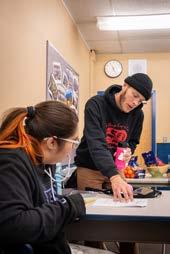
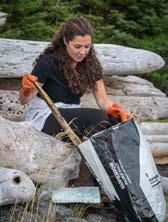
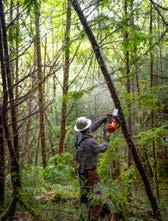

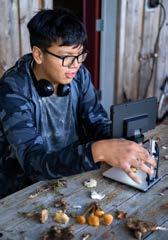
WORKFORCE DEVELOPMENT / SPRUCE ROOT
Supported more than 60 youth through financial wellness, work readiness, and career coaching workshops — including to members of the Alaska Youth Stewards, Sealaska’s internship program, Tlingit & Haida’s Youth Employment Services program, in partnership with Sitka Tribe of Alaska, and through Sealaska Heritage Institute’s (SHI) summer career programs. Provided career pathway support with SHI to 12 Indigenous arts educators, and facilitated soft skills and work readiness training to Community Forest Partnerships with the Generations Southeast Community Learning Center, Shaan Seet, and Klawock Cooperative Association. Supported strategic planning for Sitka Sound Science Center and the Southeast Career and Technical Education Consortium.
SEACOAST INDIGENOUS GUARDIANS NETWORK (SIGN) / TLINGIT & HAIDA
SIGN is a collaborative partnership created to empower every Southeast Alaska Tribe and community with the tools and resources they need to steward and restore balance to their traditional homelands and waters in perpetuity. Launched in 2023, SIGN has already welcomed more than five community partners. Partnered with the Sitka Sound Science Center and Oceans Conservancy to remove 1,400 pounds of beach debris from remote beaches, facilitated culture classes with local youth camps and conferences, and participated in resource management councils.
COMMUNITY FORESTRY / THE NATURE CONSERVANCY
Crews in Kake, Klawock, and Hoonah, employed 15 locals to complete stewardship work across hundreds of acres of local lands and waters. Collectively, they restored thousands of feet of salmon habitat, hundreds of acres of young growth forest and maintained access to traditional harvesting areas through road and culvert maintenance. Crews received a breadth of technical training including wilderness first aid, backcountry field navigation, digital data collection, chainsaw operation, hand tool stream restoration practices, basic engineering, money management, and Tribal sovereignty.
ENERGY SECURITY / RENEWABLE ENERGY ALASKA PROJECT
Provided energy education outreach to more than 500 K-12 students and 400 adults across Southeast Alaska. Supported biomass heating projects in Kake, Hoonah, Angoon, and communities on Prince of Wales Island. Helped plan the annual Alaska-Yukon Biomass Energy Conference. Partnered with multiple agencies, students, teachers, and community leaders in Angoon to help plan and facilitate Angoon’s first job and community career fairs, resulting in more than 20 well-paid summer jobs for young adults.
YOUTH STEWARDSHIP / TLINGIT & HAIDA
Supported Alaska Youth Stewards crews in Angoon, Prince of Wales, Kake, and Hoonah. Nineteen crew members and 93 total youths were engaged in activities that ranged from traditional food harvesting to salmon stream restoration. Crews improved, maintained, or constructed 22 miles of local trails, planted over 500 trees and shrubs, and hauled over 5 thousand pounds of trash from local beaches and forests. Nearly 800 gallons of wild foods were harvested, processed, and distributed to community members during 17 community events and potlucks. Crews met and worked with over 100 different professionals from around Southeast Alaska and were offered over 30 postseason work opportunities.
10 SUSTAINABLE SOUTHEAST PARTNERSHIP


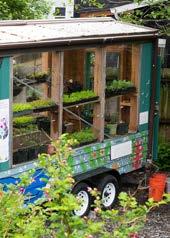

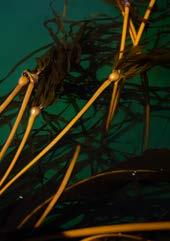
RURAL ECONOMIC DEVELOPMENT / SPRUCE ROOT
Catalyzed an economic development coalition that includes over 50 entities to move the needle forward on rural prosperity. Worked with 7 communities on strategic planning including Kake to help support their Comprehensive Economic Development Strategy. Presented on an Indigenous Perspectives panel at the Confluence Summit to co-create a regenerative and equitable outdoor recreation economy. Working to advance economic development projects with regional and community catalysts that include: housing, energy, childcare, workforce development, mariculture, and regenerative tourism.
STORYTELLING AND COMMUNICATIONS / SITKA CONSERVATION SOCIETY, SPRUCE ROOT
Launched a monthly newsletter to disseminate resources and inspiration to partners, created more than 15 stories that were published in local, regional, and national publications including monthly with the Juneau Empire. Created ‘Woven', our first collective impact print publication. Worked with the USDA through a shared position to make regional investments and forest management more accessible and highlight successes. Hosted 2 interns, both of whom transferred to full time positions with SSP partners.
FOOD SOVEREIGNTY AND SECURITY / ECOTRUST
Moby the Mobile Greenhouse is a traveling classroom that inspires community conversation around local produce cultivation, composting, cooking, and distribution. Since 2018, Moby has been hosted in Yakutat, Sitka, and Hoonah — all in the process of building community greenhouses. Currently, Moby is in Pelican. Developing a composting and food recovery network to exchange best practices and a regional strategy to help direct investments in composting, food recovery, and fish fertilizer infrastructure. Helped 7 communities host food events, including a marketing workshop held in conjunction with the Southeast Alaska Farmers Summit that convened 100 people in Petersburg.
HEALING / HAA TÓOCH LICHÉESH
Working to uplift the local cultures, languages, and knowledge needed to heal and prevent violence while reckoning with injustice, transforming systems, and collectively creating a healthier world. Hosted Orange Shirt Day in Juneau in recognition of boarding school violence with 100s of participants and shared a regional toolkit that increased local school recognition. Held a Restorative Justice Circle training with the State of Alaska Council on Domestic Violence and Sexual Assault. Offering seasonal Lingít Language Classes, with over 100 registered and ~45 attending weekly. Hosted a Plants as Medicine Strategic Planning Gathering that brought 8 women leaders together to dream, and plan a regional plants-as-medicine program.
MARICULTURE / SPRUCE ROOT & ECOTRUST
Provided 7 individuals, businesses, or organizations with technical assistance while making statewide resources, such as funding for seaweed farming and processing, more accessible to rural and Indigenous communities. Co-facilitated programming at 2 community events that convened 15 Tribal entities and 26 Non-Tribal entities to collaborate on strategic planning and community engagement for mariculture. In partnership with Barnacle Foods, developed a resource to reduce risk for bull kelp farmers while encouraging statewide research on local cultivation and processing techniques. With Barnacle Foods, evaluating and sharing methods to more efficiently dry kelp in rural Alaska.
WOVEN 11
2023 Impact by Community
The Sustainable Southeast Partnership works across Southeast Alaska, including in communities not listed below. The following statements of impact are representative of communities where we currently hold a Community Catalyst position with a host partner.
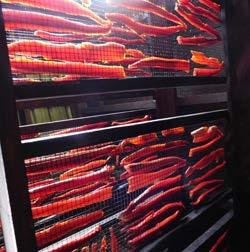
JILKAAT, CHILKAT VALLEY / JILKAAT KWAAN HERITAGE CENTER
Rebuilt programs suspended since Covid-19 to serve residents of Klukwan and Haines focused on practicing, celebrating, and improving access to traditional knowledge, language, and arts. During Salmon Camp, instructors and 11 participants prepared salmon for winter and exchanged knowledge. Around 37 participants and 11 cultural specialists gathered for Culture Days to practice weaving, design, songs, dance, storytelling and more. Started Regalia Essentials: Making Headbands, Vests, and Moccasins — a beginner level workshop series with 10 participants.
SHGAGWÉI, SKAGWAY / SKAGWAY DEVELOPMENT CORPORATION
Partners are finding ways to match a growing visitor industry with the priorities of this small community. Launched Welcome to Shgagwéi, a spring training to help educate and provide valuable training resources to seasonal workers. Ran a successful Shop Small community event with 16 participating local small businesses. Supported watershed stewardship by creating outreach materials for Pullen Creek landowners to better understand riparian buffer zones and their crucial role in maintaining a healthy and fish-friendly creek.

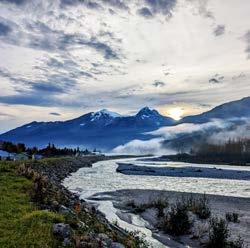
XUNAA, HOONAH / HOONAH INDIAN ASSOCIATION
The Hoonah Native Forest Partnership included 6 crew members — 2 have continued for 7 years, 2 joined from the Alaska Youth Stewards Program, and 2 were from Angoon acquiring new skills to apply to a restoration project in Cube Cove. The crew focused on restoration and monitoring efforts including deer habitat, a stream restoration with hand tools, and documenting coho salmon habitat to add to the Anadromous Waters Catalog. In 2 summers, crews have identified over 15 miles of previously undocumented coho habitat. The Tribe hired a local foods coordinator to run a 30’ x 60’ greenhouse to increase local food security, establish a farmers market, and provide youth opportunities.
AANGÓON, ANGOON / KOOTZNOOWOO INCORPORATED
Engaged community and regional partners in the creation of sustainable visitor industry opportunities including a community based walking tour and an artist workshop where Lingít art can be shared and enjoyed with visitors. Began establishing relationships with tourism companies like Alaska Dream Cruises, contracting with local traditional artists, and created a space where artists and students can work on their art.
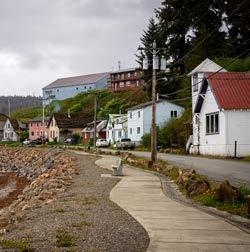
12 SUSTAINABLE SOUTHEAST PARTNERSHIP
1 3 2
4
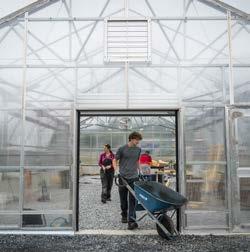
SHEET ´ KÁ, SITKA / SITKA CONSERVATION SOCIETY
Hosted a Beneficial Electrification Intern who coordinated a Renewable Energy Camp for 17 middle schoolers in partnership with the City of Sitka and Renewable Energy Alaska Project and worked to make information on electrification incentives more accessible to communities. Partnered with Pacific High School to fundraise and recruit volunteers to complete a 24' x 48' greenhouse and support their Farm to Table program in which students grow food and incorporate it into studentmade, from-scratch school meals (page 35). In 2023 over 270 pounds of nutritious, organic produce was harvested!

K ÉE X ´ , KAKE / ORGANIZED VILLAGE OF KAKE
SSP Regional Catalysts gathered in Kake to support the Kéex' Kwáan Culture Camp — harvesting and processing traditional foods with youth like halibut, deer, moose, seal, and more. Kéex' Kwáan Community Forest Partnership received valuable skills training while working with the USDA Forest Service and Southeast Alaska Watershed Coalition to restore salmon habitat on Kuiu Island that had been damaged by past logging practices (page 16). The first annual Kéex´ Kwáan Traditional Food Fair was held and included a recipe competition and food prepared by the Alaska Youth Stewards crew to distribute to elders and community members (page 31).
SHÁAN SÉET, CRAIG / SHAAN SEET INCORPORATED
The Klawock Indigenous Stewards Forest Partnership (KISFP) worked with the Alaska Youth Stewards program for a second year to restore Pickle Rick Creek — a previously undocumented salmon stream. KISFP performed restoration forest thinning to 100 acres of riparian second-growth forest, assessed the health of salmon streams across watersheds, harvested traditional foods for the community, and organized a multi-community firewood distribution program. KISFP has provided year round full-time employment for 7 individuals. SSP Catalysts gathered in Craig for the autumn retreat.
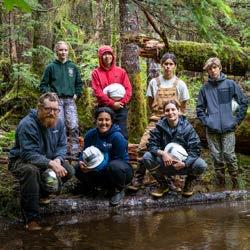
WOVEN 13 7
2 1 5 6 3 5 4 6 7
WHAT ARE WE WORKING
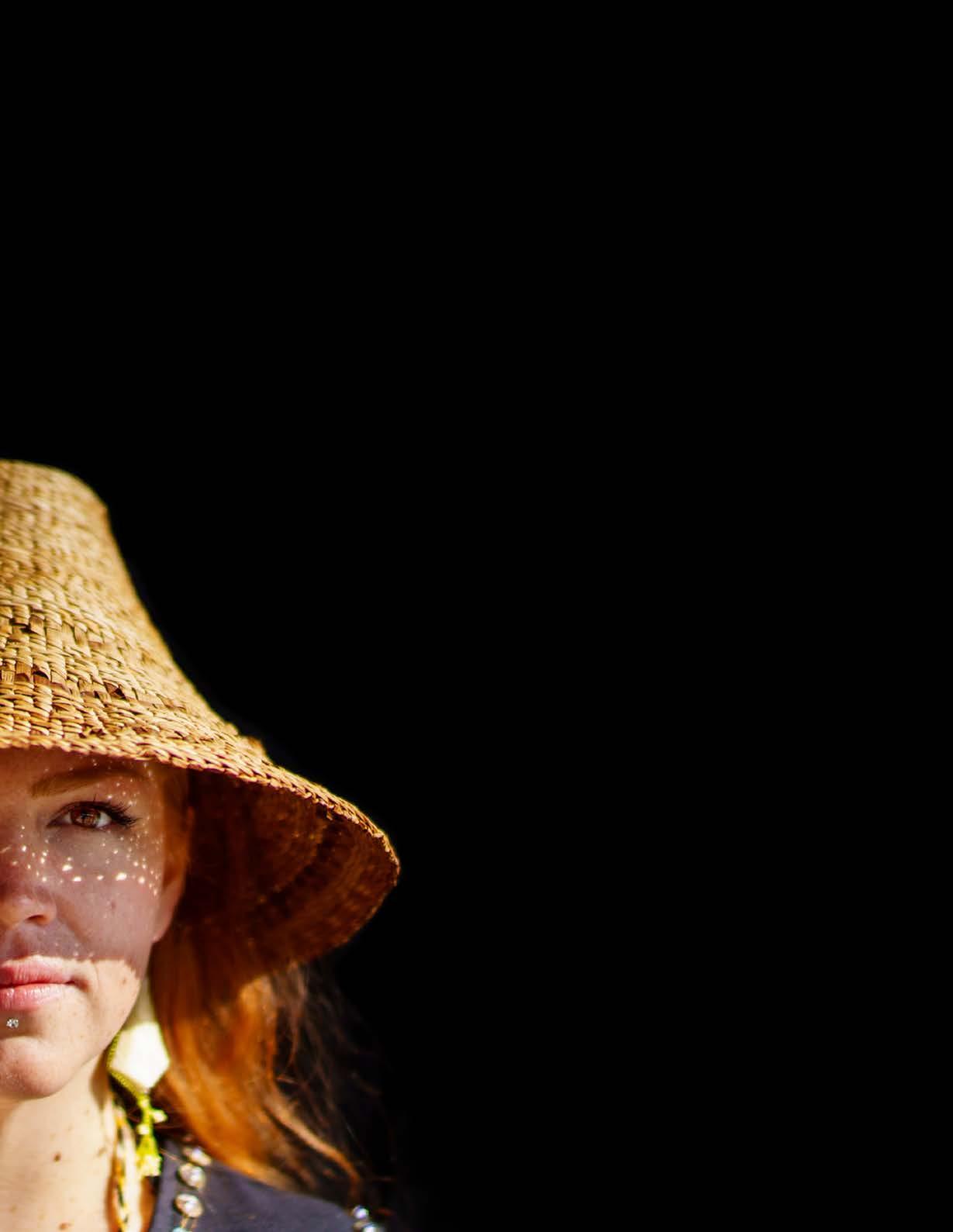
FOR
“We are working for each other.”
Beyond the formal partners, the Sustainable Southeast Partnership (SSP) is people. Our catalysts are as diverse as the network itself. They are retired teachers, aunties, artists, and business owners. They sit on local boards, fill buckets with berries, put up fish, check in on Elders, and write their local assembly members. We have young people who just graduated from college, others starting new families and building homes with their own hands. Our catalysts are often seen as leaders within their communities and the diversity of backgrounds they bring, as well as the collaborating partners they work with, gives us our strength as a Partnership.
The work is diverse — Community Forest Partnerships, youth programs, greenhouses, Lingít language classes, entrepreneur coaching, fish camp, and culture camps. Some of the most important work doesnʼt look like work at all. It looks like being present. It looks like bringing a casserole to a potluck when someone passes away, supporting
a fundraiser for the basketball team in the darkness of winter, or creating a meal train for someone with a newborn baby. That’s where the relationships and trust come from — engaging with and being part of community.
The challenges are not small. Our communities are separated by ocean and mountains with many of our goods being barged in. Some communities lack high speed internet and hospitals. Climate change and greed threaten the plants and animals that sustain us. The impacts of colonization still grip us today — wounds to our Indigenous languages and the knowledge embedded within, the impacts of boarding schools, racism, scars on our bodies and on our lands. But if colonization proved anything, it was that our Indigenous values are stronger. “Respect for all things,” seems obvious but sadly, it is not a value held by everyone. When we practice and share our values, when we heal ourselves and our homelands, that positive impact echoes. That strength gives me hope in our ability to face any challenge. We survived the tsunami, so we can withstand these flash floods.
We do this work for our communities — our home villages and towns, but we also work for our global community. The Tongass is special: when we take care of our home we take care of our shared earth. We work for the plants and animals, for our ancestors, for our future generations — our nieces and nephews and their grandchildren. We work so that they can continue to thrive in this area in a healthy relationship to all living things, including these lands and waters.
At the end of the day, we work at institutions and Tribal governments, but we work for each other. Like a lesson shared in the Shanyaak'utlaax Salmon Boy story, our work is so important that we would never stop.
Sgaahl
Siid Xyáahl Jaad Marina Anderson
Program Director Sustainable Southeast Partnership / Shaan Seet Incorporated Board of Directors / Native Peoples Action Steering Committee / 2023 Ecotrust Indigenous Leadership Awardee
14
& TOWARD
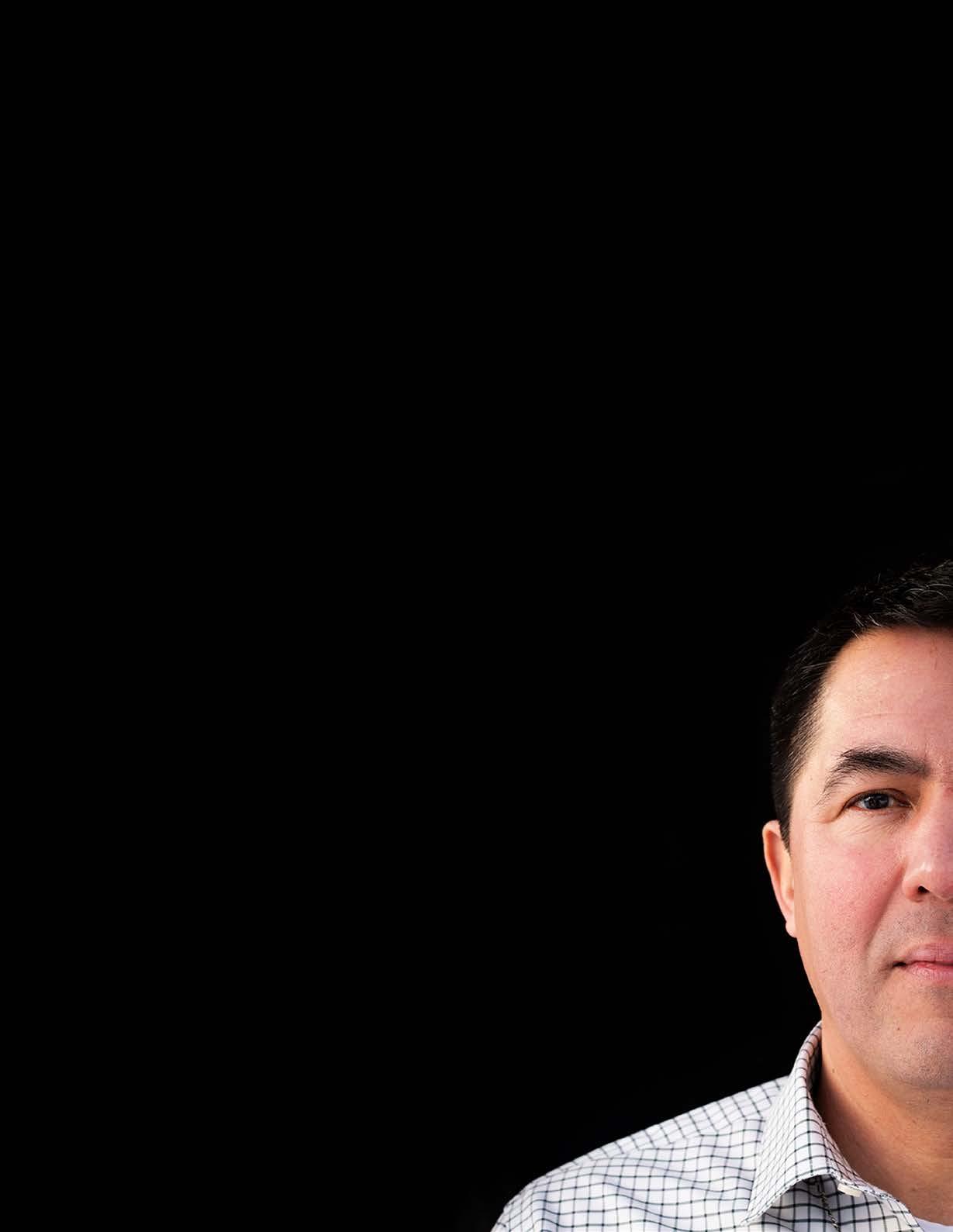
“We are working toward balance.”
When I first started at Sealaska, the regional Native corporation, I participated in annual roundtables that frustratingly, would always end the same — against a wall. We were working with communities on economic development and heard great ideas but ultimately threw our hands up and said, “We wish we could fix the cost of energy”. Other frameworks in the region also struggled. Entities would walk into a gathering, yet sit in their own corners — conservation focus here, industry over there, government here, and Native communities sort of circling around. The result felt more like negotiations and a trading game than earnest collaboration — our communities lost the most.
These frameworks failed because they lacked balance. Balance in representation, approach, and mindset. They upheld an unbalanced definition of a “successful community”. Economic development is critical, yes, but our communities also need healing, strong schools, clean and affordable energy, cultural pride, and access to healthy foods.
SSP came at a point in time when people were ready to move beyond spinning in circles. It pulled people out of those corners and helped to establish a balanced vision for the region that diverse entities could align with. It balanced getting work done with the slow work of building the relationships and trust on the ground. The growing vision sparked curiosity and problem solving that allowed us to close the feasibility gap of community projects. Increasingly important projects were undertaken, as entities learned to listen while lending their unique resources and networks to get work done. That success was contagious and as progress grew, entities that were once isolated started to move closer and closer — until we were sitting at the same table.
Gunnuk´ Anthony Mallott Sustainable Southeast Partnership Steering Committee / Spruce Root Board of Directors / Former President and Chief Executive Officer of Sealaska Corporation / First Indigenous Recipient of the Olin Sims Conservation Leadership Award
While there is a lot to celebrate, we can never be complacent. Trust can evaporate before your eyes and the work of relationship building is constant. We must stay curious, stay humble, stay vigilant, and continue to do the hard work of working toward balance. For the SSP, that means continuing to cultivate frameworks that strengthen relationships and maintain healthy collaboration. It’s constantly asking whose voice is missing and why. It’s catalyzing more resources to do work that is desperately needed in Southeast Alaska.
Working toward balance as community members means healing inward, and supporting each other on a journey toward collective health. There is no silver bullet that gets us there. It is complex work, deep work, and critical work. It involves striking a balance between addressing systemic inequality while moving beyond a sense of victimhood that can keep communities trapped. It looks like balancing healing with acknowledging bad actions that need to stop. It looks like leaving our fragility behind and balancing when to step back and when to step up. It looks like balancing consumption and conservation — rectifying what we need versus what we want. It looks like balanced leadership, balanced representation, and balanced approaches.
Working toward health and wellbeing for people and communities is as constant as it is complex. We have a foundation of values from more than 10,000 years living symbiotically with the lands and waters of Southeast Alaska. Curiosity and progress are driven by working toward a purpose so important that we would never stop.
WOVEN
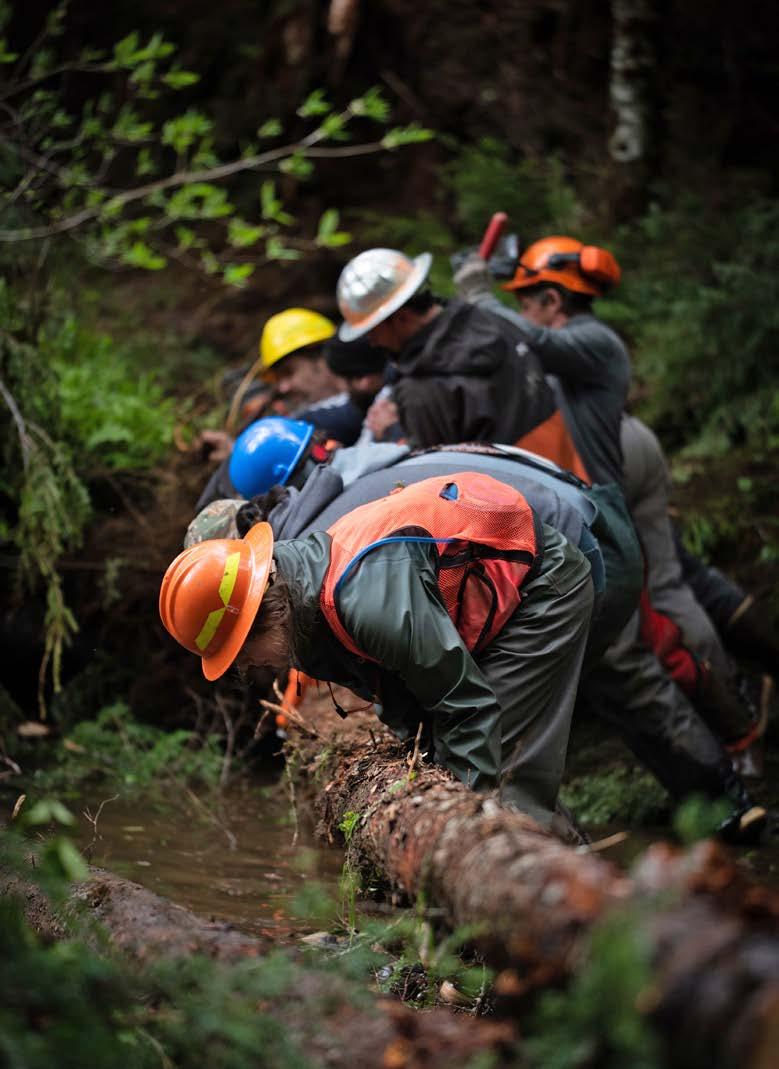 WRITTEN BY LEE HOUSE
WRITTEN BY LEE HOUSE
Healing the Land Together
Salmon stream restoration with Community Forest Partnerships: Across Southeast Alaska, collaborative stewardship efforts are in full swing between Tribal governments, Alaska Native corporations, federal and state management agencies, local contractors, and environmental organizations.

16 SUSTAINABLE SOUTHEAST PARTNERSHIP
Above: Community Forest Partnership crew members and USDA Forest Service staff work together to move a log that will help to create fish habitat during a stream restoration workshop. Photo: Ian Johnson, Hoonah Indian Association
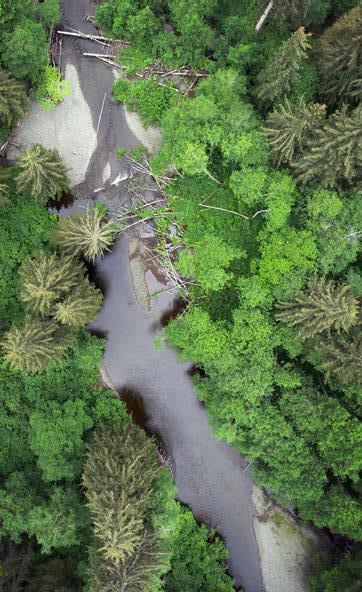
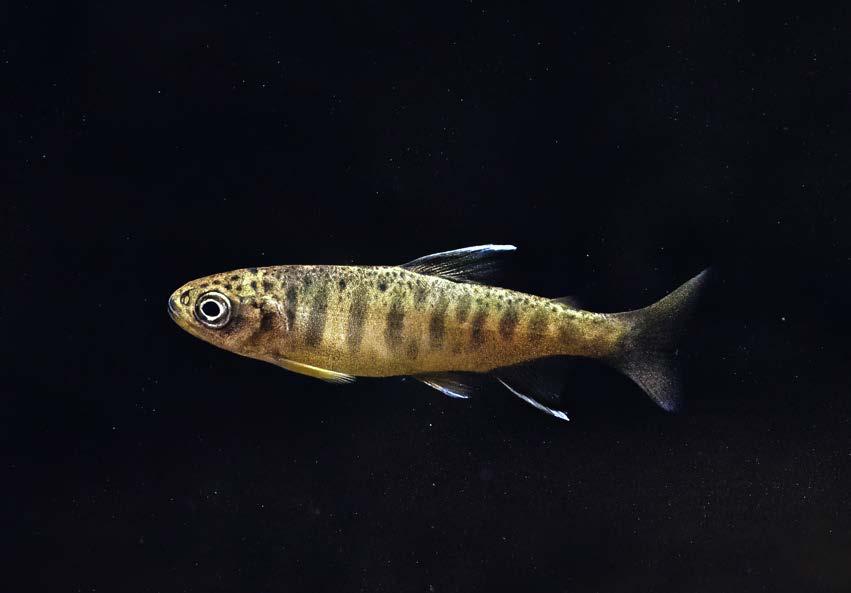
Peer beneath the evergreen canopy of the forests that envelope Southeast Alaska and one can find deer grazing on the understory below towering old growth, the leaves of berry bushes waving gently in a breeze, and streams cascading down from the mountains into the ocean providing passage for salmon to return to their spawning grounds.
So too can one find where past forest management and logging practices have created thick areas of impenetrable second growth forest, occluding the sunlight for plant life on the forest floor and choking out wildlife movement. One can also find stream systems that were logged right up to the banks, criss-crossed with roads that now have failing culverts, and in some cases streams that were used as thoroughfares to move logs and equipment. The forest bears the marks of a landscape in need of healing.
Over the last decade, Tribal governments, Alaska Native corporations, the USDA Forest Service, non-profit organizations, and other management agencies, have sought to do the work of healing those lands and waters. In doing so, restoration work has become a priority approach on the Tongass National Forest and surrounding lands. This multi-disciplinary work also breathes fresh air into local economies by creating forestry jobs, developing youth apprenticeships, and making opportunities for independent contractors all while strengthening the deer, fish, and berry habitats that sustain Southeast Alaska communities. Improved salmon spawning habitat in turn bolsters fish runs that also support local livelihoods in the fishing industry.
“We’ve been working on restoration for a while now, but this work is in a really exciting moment because it’s gaining attention for the impact it is having beyond just restoring the landscape,” says Katherine Prussian, USDA Forest Service Hydrologist and Watershed Program Manager for the Tongass National Forest. “Now we’re seeing how it is feeding the economy, creating jobs, increasing operators, increasing contractors, and working with Tribal organizations. It’s really growing and everyone is interested in doing more.”
As a part of these growing efforts, Tribally-led Community Forest Partnerships have risen to the surface as impactful models that work on the forest holistically, deploying local crews to work across management and ownership boundaries rather than confined within. This approach is made possible through multi-partner agreements that hinge heavily on collaboration. By working cooperatively, communities are returning to how this region has been stewarded by the Lingít, Haida, and Tsimshian for thousands of years: as whole, interconnected lands and waters.
Three Community Forest Partnerships exist in Southeast Alaska to-date with similar efforts on the rise in the region. More than just a job, these stewardship crews are rooted in community, working towards the benefit of future generations and listening to current community stewardship priorities. They are creating capable crew members, training in forestry skills, collaborating with state and federal agency staff, and centering local and traditional knowledge to sustainably steward watersheds and forest habitats that are inextricably linked to the ways of life of the region. This approach helps move the means of management action and job creation to the communities and Tribes who have lived in relationship with these lands and waters since time immemorial.
WOVEN 17
Left: A segment of Spasski Creek from above, part of the Hoonah Native Forest Partnership's priority watersheds. Right: A juvenile coho salmon rests in an eddy in Shorty Creek on Kuiu Island. Photos: Lee House
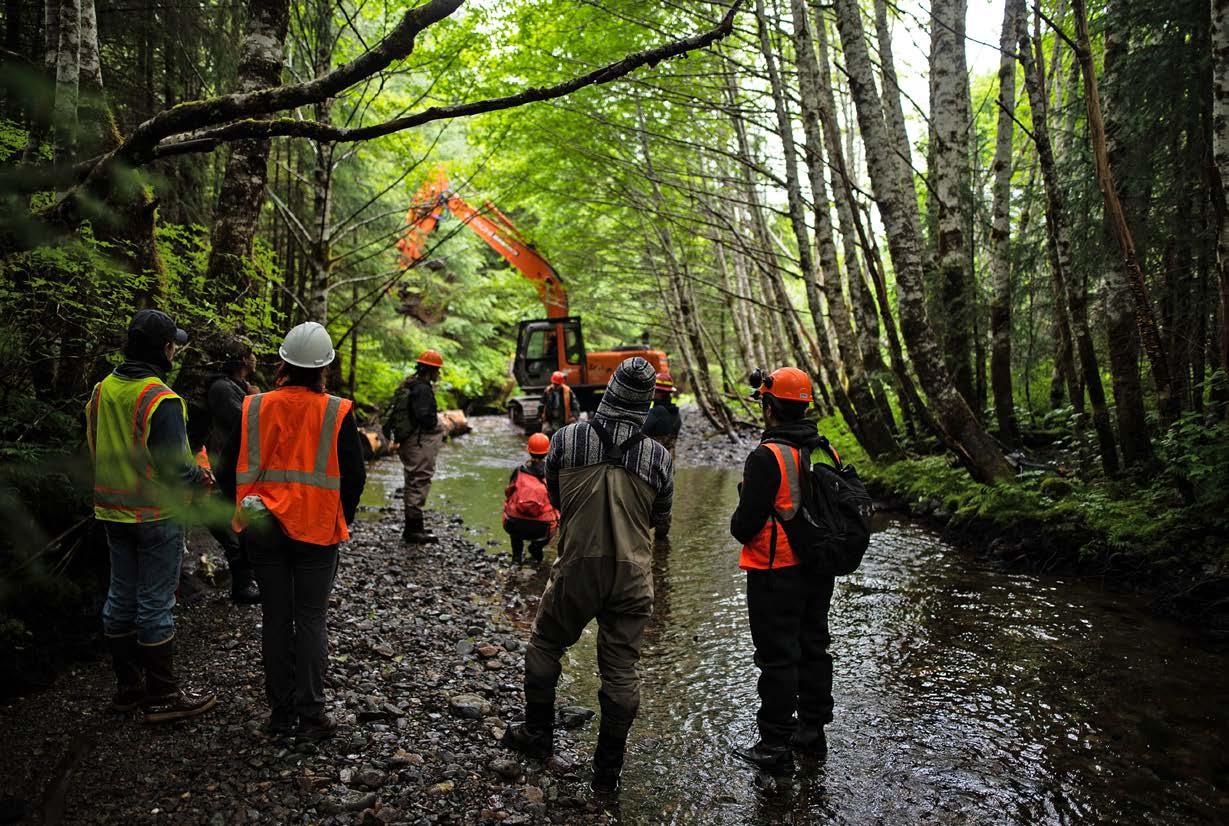
Hoonah Native Forest Partnership (HNFP)
Eight years ago, the forest partnership model came to fruition on Xunaa lands with the creation of the Hoonah Native Forest Partnership. The Partnership started with the common guiding vision of, “a thriving community with access to abundant resources and workforce opportunities that consist of members who work together to improve economic, ecological, and social conditions,” setting the scene for future partnerships to come.
The Partnership is comprised of the Hoonah Indian Association, City of Hoonah, Sealaska, Huna Totem, The Nature Conservancy, the Sustainable Southeast Partnership (SSP), Alaska Department of Fish and Game (ADF&G), USDA Forest Service, and Natural Resources Conservation Service.
Hoonah Indian Association Environmental Coordinator, Ian Johnson says “The HNFP started in its first years looking from a perspective of what’s on the land, what condition these resources are in, and listening to what people want from these lands.” Discussions focused on project opportunities that the Partnership could work on together to build economic opportunity, climate resilience, food and harvest resources, and recreational opportunities across the 205,000 acre working area.
Johnson continues, “Collectively, we decided to work in a focused area to be efficient in working together.” The area that the collective chose to work on first was the Spasski Watershed (1 of 6 watersheds in the HNFP working area). “It’s a really high value watershed — the local community relies on that watershed for aquatic resources, deer, fish, and berries,” says Johnson.
Members of the HNFP crew have steadily made progress over the years, pushing through brush, over logs, wading in streams, clamoring through dense young growth, and hauling tools day-in and day-out. The work has included meticulous inventorying of forest, streams, and roadways, thinning dense areas of young growth forest, restoring fish passages where roads cross streams, rehabilitating fish habitat through stream restoration projects, and continuous data collection.
Phillip Sharclane, who has been an HNFP crew member since the start of the Partnership, reflects on the years of work, “It’s really a great feeling to be a part of this restorative process. The Forest Partnership is really out there to have a positive impact on future resources, and most of all, my family, my people, and my community.”
Today, nearly every restoration prescription for the 33,097 acre Spasski Watershed has been completed by the HNFP. Next year, they will set their sites on the second priority area, the Game Creek/Port Frederick Frontal Watershed.
18 SUSTAINABLE SOUTHEAST PARTNERSHIP
Members of the Hoonah Native Forest Partnership, Hoonah Alaska Youth Stewards, and collaborators stand by during heavy equipment operations as part of a stream restoration project. Photo: Ian Johnson, Hoonah Indian Association
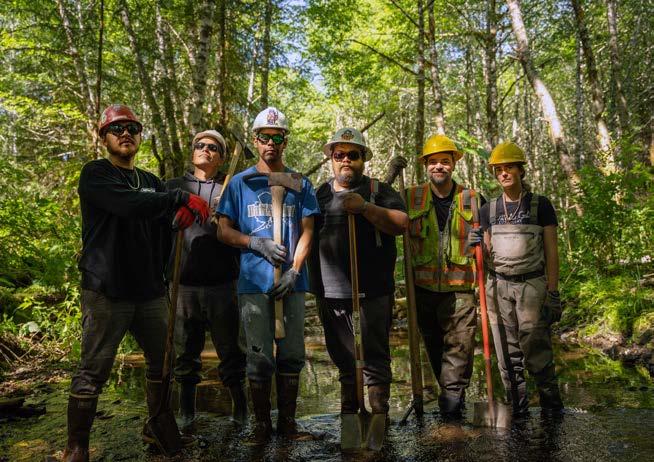
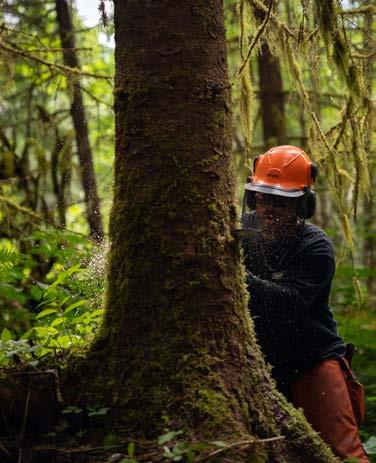
Kéex' Kwáan Community Forest Partnership (KKCFP)
“It feels good to give back, helping to rebuild salmon habitat,” says Travis Adams, wiping a bead of sweat from his brow while looking upstream. Adams is the field leader for the Kéex' Kwáan Community Forest Partnership working alongside his three friends (and fellow crew members), Rob, Cam, and Angelo this year. During a sunny week in July, the KKCFP crew, alongside the USDA Forest Service Petersburg Ranger District and the Southeast Alaska Watershed Coalition (SAWC), worked to add large wood structures into Shorty Creek on Kuiu Island to foster salmon spawning and rearing habitat. Beyond Kuiu Island having important salmon-bearing streams that provide fish for the residents of Kake, the area is also traditional Lingít homelands to many in Kake, including Adams.
From the HNFP’s success, the KKCFP based its model with the goal of achieving “a resilient blend of timber, salmon, and wildlife production while supporting a diversified economy and healthy watersheds.” Starting in 2019, core partners include the Organized Village of Kake, Sealaska, Kake Tribal, the City of Kake, ADF&G, Southeast Alaska Land Trust, SSP, and the Forest Service.
Water peels past Adams and the crew’s ankles as they stand in the stream. The flow creates eddies behind their boots that juvenile coho salmon come up to rest in. The structures the crew are building in the stream are, in essence, doing the same thing on a larger scale: slowing water down, building complexity, and shifting rock and sediment deposits to make varying depths of pool and eddy habitat for the fish. Without large old growth trees keeping stream banks intact and eventually falling into the stream to add structure, those streams are coming undone from currents that flow through the forest unchecked, flushing away precious fish habitat. The crew’s restorative action mimics what older, larger trees would have created, if not logged, by eventually falling into the stream.
“This stream had logging occurring around it in the '70s, '80s, and '90s and all throughout that time, there were excavators moving through the stream changing how the water flows,” says USDA Forest Service Fish Biologist, Eric Castro. The presence of the little fish underscore the importance of the work. “They remind us why we’re here,” says Castro. “To see that we’re doing more than just rebuilding a stream channel, we’re helping to support fish populations that communities rely upon.”
“Wood is good,” says Watershed Scientist Kelsey Dean of SAWC, “It’s a crucial factor in streams all around Southeast Alaska.” SAWC is a key player in watershed rehabilitation in Southeast Alaska. Look at just about any stream restoration project in the region, and SAWC will be there connecting organizations, lending technical support, and supporting local crews to do the work of furthering their community’s stewardship goals. Dean continues, “Wood makes fish habitat, adds cool coverage, and helps create the spawning gravel that fish lay their eggs in. We’re using hand tools, chain saws, winches, and human power to bring that wood back into the streams.”
When the team is done for the day, Castro, Dean, and the crew head back to the Forest Service Rowan Bay Field Camp. Over meals, they share ideas about upcoming projects, the forest, and the value of their work. When Forest Service Hydrologist, Heath Whitacre, arrives back from a heavy equipment stream restoration project at a nearby watershed, Skanaxhéen, he shows the team his sketches and schematics of the larger structures he is working with the contractor to construct.
KKCFP’s Adams reflects, “Everyone has been so willing to teach us about this work. I want to express how happy I am to be here learning about these structures that we’re putting into the stream. These last couple years have been an eye opener. I love my job and everything it stands for. To give back to future generations – our kids and our kids’ kids.”
WOVEN 19
Angelo Lerma of the KKCFP crew begins felling a tree into the stream. The log will serve as structure for the stream bank and create current eddies for fish habitat.
The KKCFP crew alongside Eric Castro, USDA Forest Service, and Kelsey Dean, Southeast Alaska Watershed Coalition, at a project site on Shorty Creek, Kuiu Island. Photos this page: Lee House
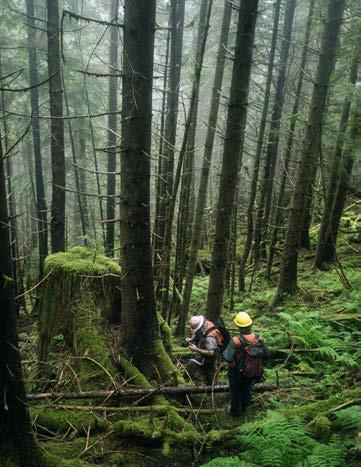
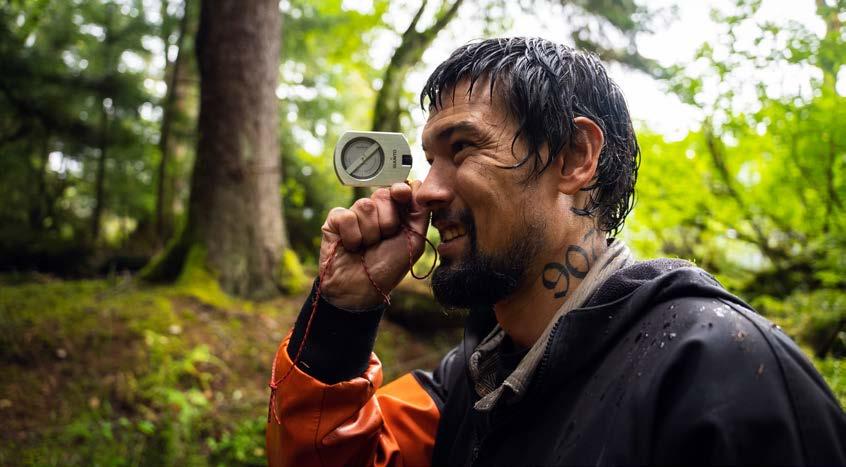
Klawock Indigenous Stewards Forest Partnership (KISFP)
Quinn Aboudara, Stewardship Coordinator for Shaan Seet Inc. Natural Resources Division likens the collective progress of forest partnerships in Southeast Alaska to building a house. “The HNFP really laid the foundation for the rest of the partnerships, and then the KKCFP came along and they put up the framing for the house, and now we, KISFP, we’re putting on the siding. We are utilizing the successes, lessons, and even some of the struggles to build on.”
KISFP began on Prince of Wales Island (POW) in 2021, but is rooted to years of past work organizing a collective response to concerns around sockeye salmon in the Klawock Lake Watershed. The partnership exists between Shaan Sheet Incorporated, Klawock Heenya Corporation, Sealaska, Klawock Cooperative Association, the Prince of Wales Tribal Conservation District, SAWC, SSP, U.S. Fish and Wildlife Service (USFWS), and the Forest Service.
This year, the KISFP crew made their first move beyond the Klawock Lake Watershed, and began restoration and thinning work on Kosciusko Island off POW. During one

stint, the Forest Service, SAWC, and KISFP budgeted eight days to complete a stream restoration project, but ended up taking only four. That efficiency has been the trend for most projects that KISFP has undertaken on POW. Aboudara credits the speed to strong collaboration and well coordinated partners, but also the passion and dedication that comes from a local workforce. “We know these lands best. We hunt here. We fish here. We live off the land. We spend everyday here,” says Aboudara.
As for Kosciusko, Aboudara adds, “It’s a very remote place. It’s easy to forget about, and we are doing our best to remember those forgotten places. It’s the traditional homelands of the Tajik'aan people (Coast Town Tribe) and the Taakw.aaneidi Clan. Three of our team members belong to the Taakw.aaneidi Clan, so there’s a lot of personal pride there.”
Jon Carle, Field Operations Supervisor for Shaan Seet Inc. Natural Resources Division says, “Growing up here, you feel real proud about helping your community. You can be driving with your kids by a stream you restored or a plot of forest you thinned, and they can be like ‘Oh, my dad did that!’” Now, Carle and his oldest son work in the forest alongside each other.
Carle, Aboudara, and many others involved in KISFP also spent their earlier years honing their forestry skills in the logging industry. The Forest Partnership allows them to apply their skills restoratively to improve the health of the forests and streams around their home communities.
Community Forest Partnerships are key components in developing what is known as a regenerative economy, where economic growth is spurred on by local workforces that are improving the habitats and ecosystems that sustain their communities throughout the region. “There’s lots of opportunity on the landscape, which can create jobs and diversify the economy through restoration actions,” says USDA’s Katherine Prussian. “There are opportunities for people to learn heavy equipment skills, learn sawyer and
20 SUSTAINABLE SOUTHEAST PARTNERSHIP
Above: Jon Carle, Field Operations Supervisor for Shaan Seet Inc. Natural Resources Division, uses a clinometer to gather data during a stream survey for KISFP. Photos: Lee House
Quinn Aboudara (left), Wade Hulstein (middle), and Jon Carle (right) of Shaan Seet Inc. Natural Resources Division walk Hollis Road to access a stream survey site for KISFP.
hand tool skills, learn about designing stream channel restoration, learn about designing culverts to provide fish passage, and so much more.”
The momentum from the last decade of this collaborative restoration work has helped to influence the core of the USDA’s recent Southeast Alaska Sustainability Strategy (SASS), which is giving way to a holistic shift in land management of Southeast Alaska. As part of the strategy, SASS is supporting USDA staff and management efforts to work alongside communities, Tribes, and local partnership networks to align with their values and priorities. In doing so, the agency is investing further in reciprocal partnerships, sharing resource management knowledge with current community crews, supporting local youth to develop skills for futures in community forest stewardship, and building meaningful relationships throughout the region.
“Having grown up in Southeast Alaska and worked here for the last thirty years, it’s been really exciting for me,” says Prussian. “To not only be working with communities, local crews, and the people on the ground, but to know that because of SASS, it is cemented as something that we (USDA) are supposed to be doing.” Prussian cites her work over the last eight years with the Hoonah Native Forest Partnership as one of the most rewarding opportunities of her career. “I’m not just working for the agency, I’m working for and with the people that depend on these resources.”
Adams of the KKCFP says, “It’s nice to know that our lands are being healed with the help of everybody — teams all over Southeast. We’re all working as one to try and put it back together to the way it used to be.” Showing that this work is healing not only the lands that sustain the communities of Southeast Alaska, but it’s also healing relations across entities, between individuals, and within oneself.
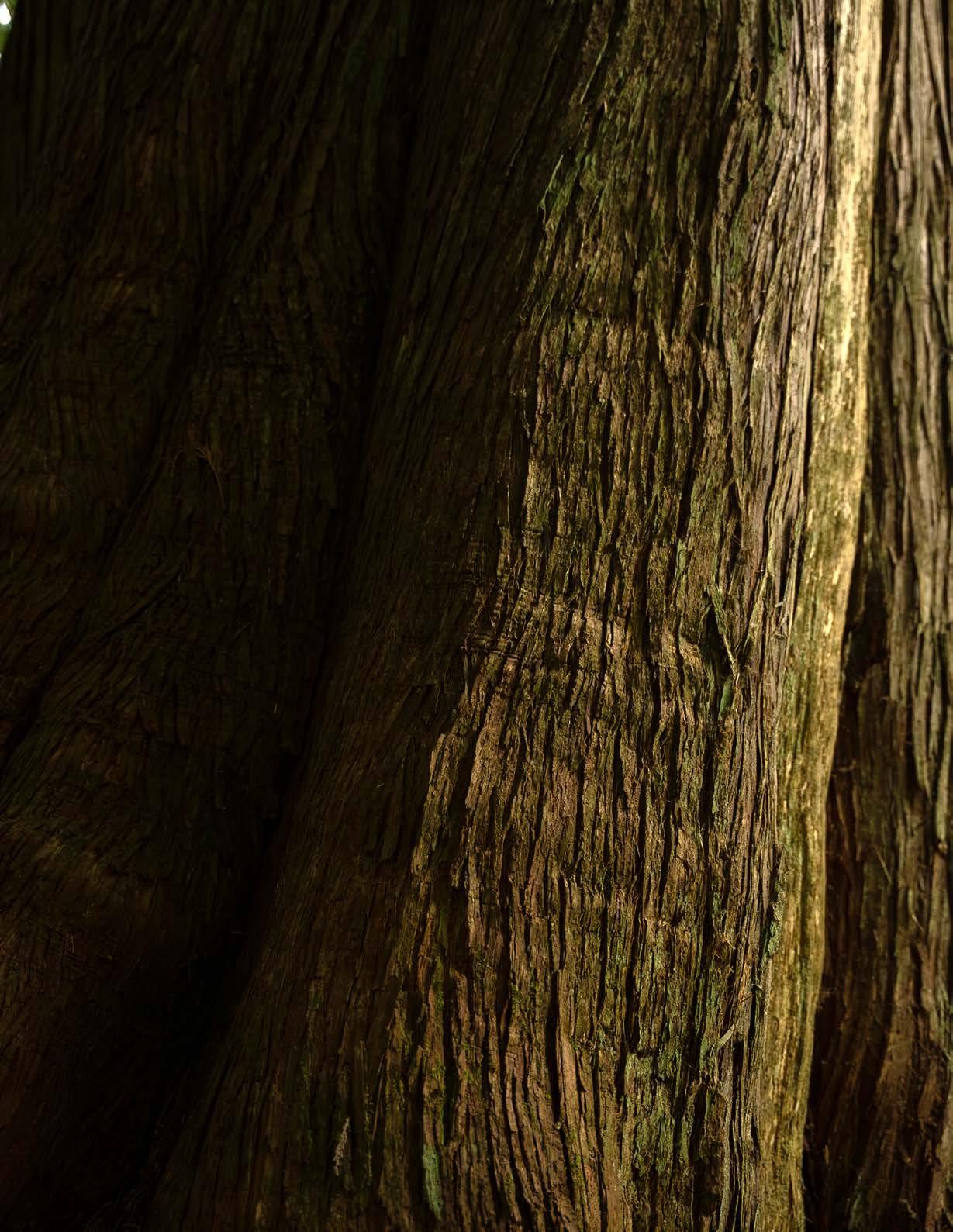
In addition to the USDA and the Community Forest Partnerships featured, SAWC, Ketchikan Indian Community, Yakutat Tlingit Tribe, Prince of Wales Tribal Conservation District, Klawock Cooperative Association, SSP, The Nature Conservancy, Trout Unlimited, National Forest Foundation, Sitka Conservation Society, ADF&G, and USFWS have played pivotal roles in advancing the work of restoration in Southeast Alaska.
WOVEN
Photo: Lee House
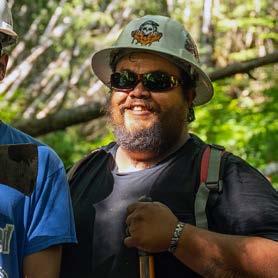
For Future Generations
TRAVIS ADAMS
Kéex' Kwáan Community Forest Partnership (KKCFP)
“The importance of the KKCFP to me and the community is that my kids, my crew’s kids, and all future generations of children and families to come will be able to have the same opportunities and experiences I have had growing up in a subsistence lifestyle. It’s a great feeling knowing that all this hard work will ensure that future returns of salmon will be healthy, the tree stands we riparian thin will be beneficial for future generations of hunters because of the understory and nutrient development from the thinning process. I love learning and getting in on all the different projects that we’ve been involved with over the last few years. The experience and knowledge that has been shared with my brothers and I is truly irreplaceable.
Being out there with Forest Service staff, Heath Whitacre, Ben Case, Eric Castro, and Robert Miller has truly changed the way I see things. I’ve gone from someone who used to commercial fish taking millions of salmon to being one of the people who are willing to work to make sure this resource is never depleted or destroyed. I look forward to continuing this momentum with my same team of brothers to keep learning how to be the home guards and stewards of our own lands. I’m excited personally to grow and expand my career into fish biology so I can use that knowledge to help the waters and species of fish around Kéex' Kwáan. I am so grateful to have someone like Eric to willingly share his knowledge and experiences of becoming a fisheries biologist. He is definitely the reason I’ve shifted gears into that direction. He truly loves what he does for a living and honestly I do too, so it would be foolish for me not to take advantage of the opportunities to help me succeed.”
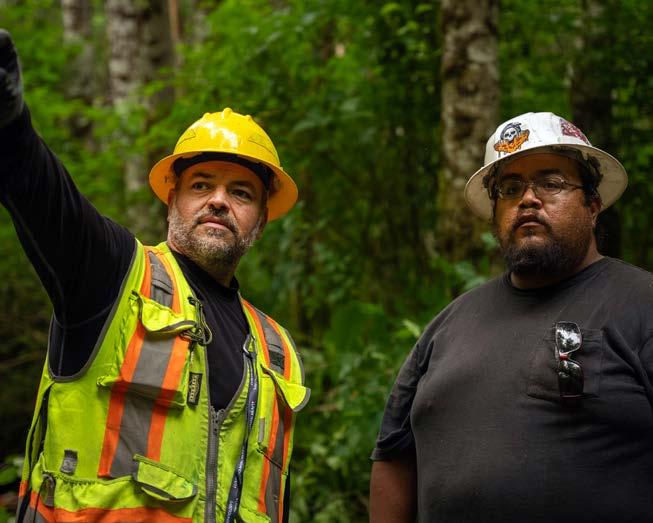
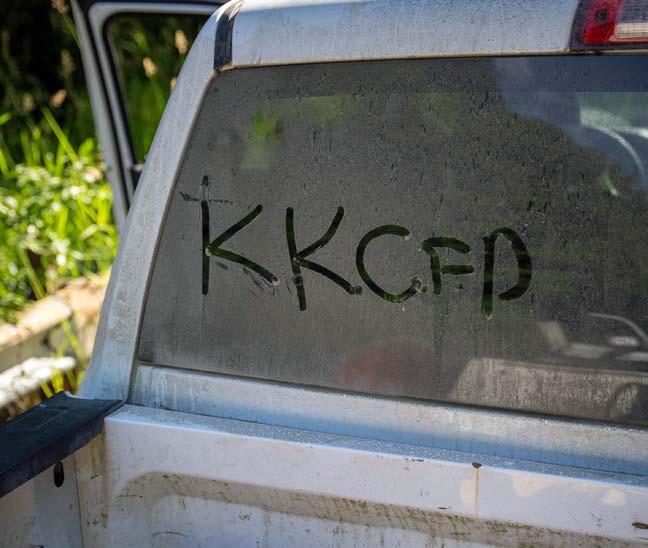
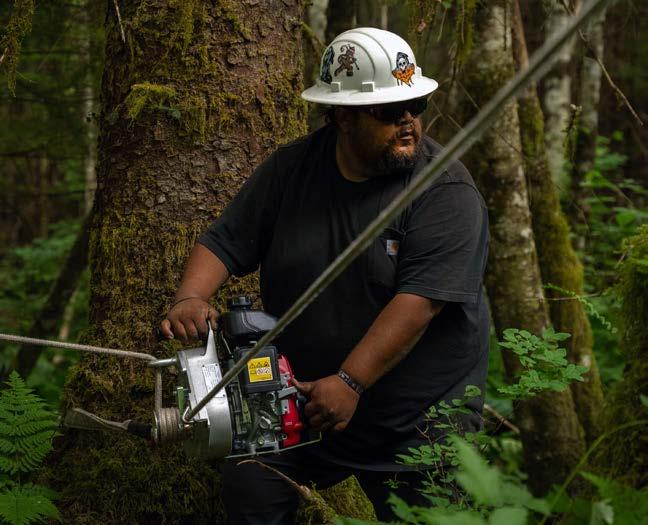
22 SUSTAINABLE SOUTHEAST PARTNERSHIP
COMMUNITY VOICE
Above photos: Lee House
ALASKA YOUTH STEWARDS WHERE ARE THEY NOW?
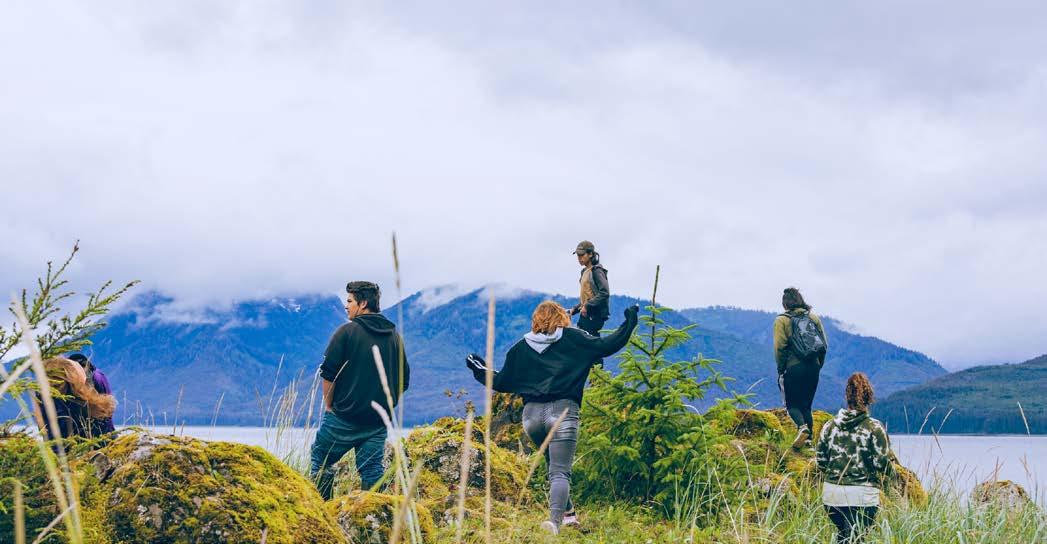
Developing a workforce, when done well, is about much more than career preparedness and the transferral of skills.
The Alaska Youth Stewards (AYS) program acts as a catalyst for change by nurturing a new generation of environmental leaders who actively contribute to community well-being, restoration, and resilience in the face of environmental changes. As an employment program for rural and Indigenous youth of Southeast Alaska, AYS offers place-based on-the-job experiential education and training to care for our lands, waters and communities.
Led by Tlingit & Haida, AYS is further strengthened by community partners that vary from Tribal governments, Alaska Native corporations, the USDA Forest Service, Conservation groups, and a Vocational Technical center. Work seasons are dynamic and reflect the priorities and needs of each community that hosts a crew while exposing youth to a diversity of potential careers and professional networks along the way.
In 2023, 19 crew members in Angoon, Prince of Wales, Kake, and Hoonah, collectively met over 106 different instructors from various Southeast Alaskan institutions. They completed 88 hours of safety training and participated in 31 different workshops. Crews improved or maintained 20 miles of recreational trails, built 2 miles of new trail, built or repaired 29 structures like picnic tables and bridges, and restored 15 different recreation sites that experience heavy public use. They surveyed salmon streams, conducted scientific studies of salmon habitat, restored rivers, planted over 500 trees
and shrubs, and collected over 5 thousand pounds of trash from local beaches and forests. They inventoried and collected tree core samples from 50 ancient cedar trees — helping document and understand this important cultural resource. Nearly 800 gallons of wild foods were harvested and distributed to community members and 17 potlucks and community events were hosted.
In addition to acquiring valuable professional experience and life skills, youth make friends, meet role models, and stretch their limits mentally and physically. Alongside Community Forest Partnerships (page 16), AYS crews used hand tools to hoist and crank massive trees into salmon streams to complete restoration structures they helped design. They learn to seine and smoke sockeye salmon. Some youth enter the program with family techniques and recipes to share. For others, this is their first time setting a halibut skate.
Graduates of the program have gone on to lead or support shellfish testing labs with their Tribal governments. They now work with the USDA Forest Service or with their local Alaska Native corporation to advance community food security. They work for Community Forest Partnerships, are pursuing post graduate degrees in fisheries and importantly, come home to serve as crew leads or help with local youth Culture Camps.
The true success of a workforce development program is best measured over time and through the experiences of those who know the program best. For this story, we spend time with a group of Alaska Youth Stewards graduates.
WOVEN 23
Hoonah's Alaska Youth Stewards gather beach asparagus for culture camp.
Photo: Kaa Yahaayí Shkalneegi Muriel Reid
WRITTEN BY BETHANY SONSINI GOODRICH & SHAELENE GRACE MOLER
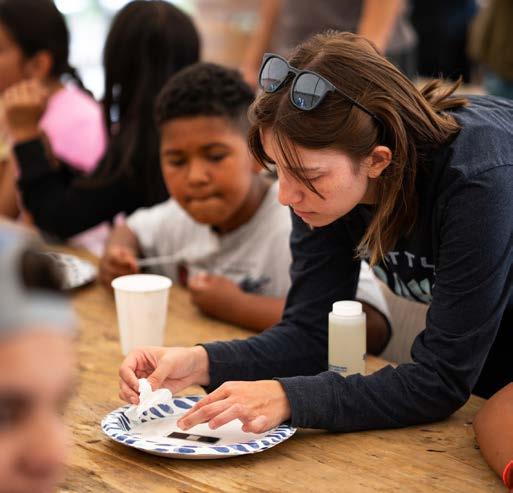
TALIA DAVIS
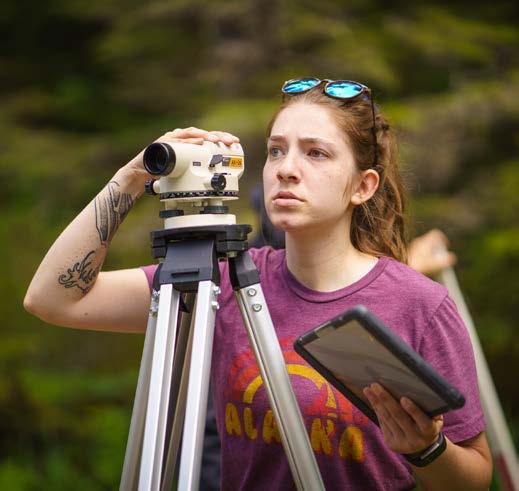
> Seasons with Alaska Youth Stewards: 1 as Crew Leader
> Continued on to Kéex' Kwáan Community Forest Partnership
> Current Master's student in Plankton Ecology Kéex' (Kake, AK)
Talia grew up on the lands, waters, and old logging roads of Kake. As a Sealaska intern, she became the crew lead of the very first AYS cohort in 2017 on Prince of Wales Island. Later, Talia worked for the Kéex' Kwáan Community Forest Partnership and is now a Master's student at Oregon State University studying Plankton Ecology. She is currently part of Fresh Tracks, an Aspen Institute mentorship program working with youth across the United States providing crosscultural community building skills, leadership development training, civic engagement opportunities, and resources for innovative community-led action.
What are you passionate about?
I’m passionate about Native lands, how they relate to the people who steward them, and how I can better help protect those resources while increasing Indigenous power back in that process.
What do you remember about your first AYS experiences?
AYS was kind of the first place I grew up. We were using four-wheelers and other equipment that I had grown up around but deploying them in different ways. One of the projects involved turning an old logging road into a trail system. Our crew spent so much time growing up on old logging roads that we knew what needed to be done to keep that road/trail intact.
I had just left Kake and I didn’t really feel older than the other AYS members, but I ended up being their crew lead. I would make sure everyone was ready and out-the-door in the morning and made dinner. It was the first time that somebody truly trusted me in a leadership position.
How has that experience influenced your personal and professional journey?
AYS was really the turning point where I knew I wanted to have a career in environmental science. I switched my major to fisheries. Growing up, I didn’t know people doing those kinds of jobs.
Now that I’ve experienced science and what it looks like down here in Oregon too, I really see how Southeast Alaska has been well stewarded by Indigenous hands, and logically, we should have more people in our communities doing this type of work. It’s not really surprising to me I guess, because people in villages historically have not been given those opportunities to experience those types of jobs. But now AYS is doing exactly that. The value of community care and the mentorship you give and receive in AYS is the type of collaborative science and community work that should be done universally. Now, when I go home, most of the high schoolers have done some type of internship or summer program, which is so awesome.
How did AYS instill values of community care? How have you applied these principles to your life?
It’s very cool how the AYS program pivots each summer to reflect not only what the students are interested in, but also what the community is interested in.
That’s something I have tried to carry with me in grad school. We need to go out and ask the people on the lands what they want to see and adjust research goals accordingly. It’s just been a hard shift because Western science cuts away everything except for your data, and how you’re going to publish it. That’s just not how academia or science is built right now, but it’s something that I think about as I’m conducting my science.
24 SUSTAINABLE SOUTHEAST PARTNERSHIP
I’m studying freshwater plankton, which seems irrelevant, but they are important — whether for salmon food or something else. For me, being able to draw those connections so that people understand what’s being done on their land and why it’s beneficial to them is something that’s really important to me.
Networking is also a really big part of life as you get older, and AYS was my first time experiencing that. Because it was a collaboration with Sealaska, I had my mentor, Bob Girt who was great to have while getting into this field. He also showed me the importance of making connections with different agencies and groups. Now, I have real friends and allies from that experience.
What are some challenges you encountered since your time in AYS?
We, as people who grew up in Kake, know the island, we know the waters, and we know the land. Honestly, we could probably make some pretty good management decisions about what trees we should be protecting and what streams need restoration. We have that knowledge in us, but we can’t make those decisions. It’s frustrating that to be able to maybe make those decisions one distant day, we have to go get an education in a system that’s already built against us. Western science strips a lot of our values away from us and we have to go away and do all that so that we can come home and try to tell Fish & Game how many fish we should catch.
How have you worked to try and overcome this challenge?
It’s a lifelong thing, right? Yeah. It can be really overwhelming but it’s helpful for me to take trips home, work with youth in Kake, or spend time outside because it reminds me why I’m doing this work. Also, looking at other examples of ways people have combined Western science and Traditional Ecological Knowledge, that makes me really hopeful too. I have to remind myself that no matter how much I get heated up over these things, I’m not gonna be able to fix all the issues within Western science. It’s gonna be a long process, and I am doing what I can.
Are there any other hopes and dreams you have for Kake?
I think overall I just really hope for a healthier community–healthier fish, deer, berries, and all those good things. But, I think we need to make sure that our people are healthy, physically and mentally. If we have all these amazing resources, it’s not going to matter if we don’t have people who are healthy enough to be making management decisions or benefiting from those decisions. So I just hope for more empowerment within the community.
Being able to manage our own resources is a dream. I worked at NOAA Fisheries for the past two years and my boss told me so many times that the government’s gonna be around forever making these decisions. I hear that a lot, and I’m just like, “You just wait buddy!”
“The value of community care and the mentorship you give and receive in AYS is the type of collaborative science and community work that should be done universally. Now, when I go home, most of the high schoolers have done some type of internship or summer program, which is so awesome.”
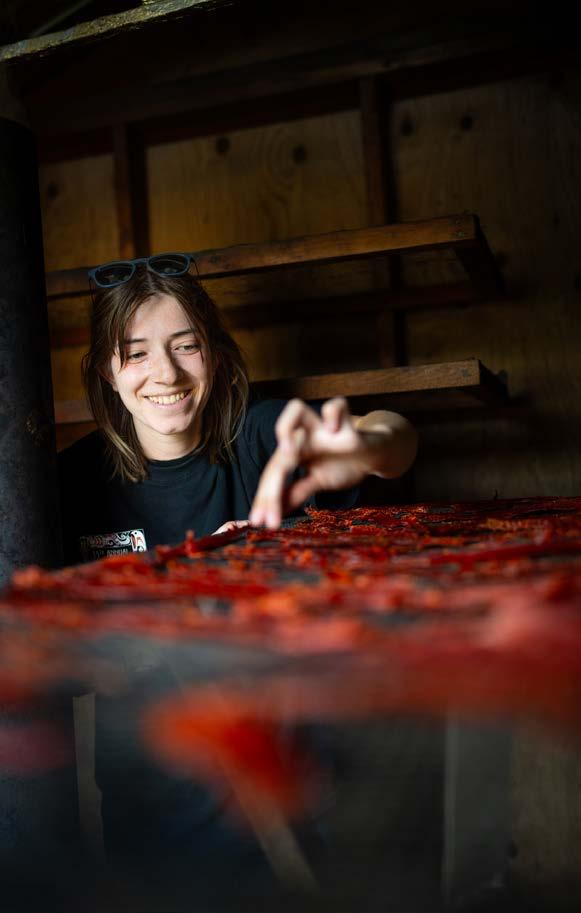
WOVEN 25
Photos this story: Bethany Sonsini Goodrich
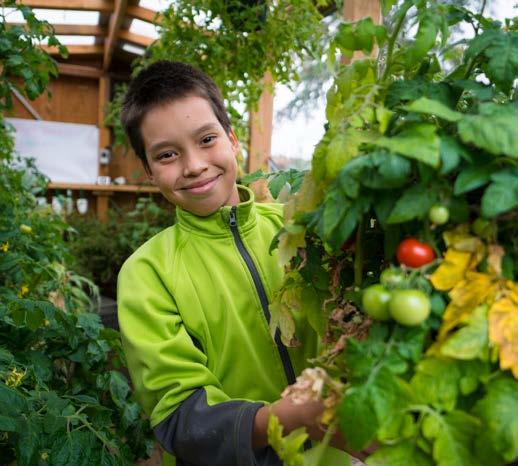
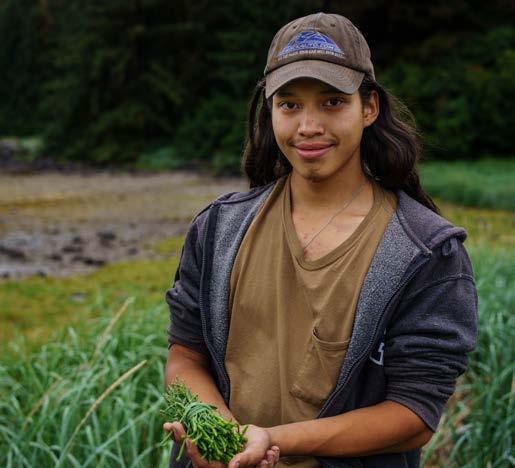
TED ELLIOTT > Seasons with Alaska Youth Stewards: 3
AK)
> Now entering second year with the Hoonah Native Forest Partnership Xunaa
Ted grew up in Hoonah, Alaska, where from an early age, he knew his interests were in working outside on behalf of his home community — whether working on the gardens behind Hoonah Indian Association, caring for Moby the Mobile Greenhouse, or helping Wayne Price adze a dugout canoe at age 12. When he became old enough to join AYS at 15, he jumped at the opportunity to trade working at the local grocery store for bug nets and rain gear. Ted joined the crew of the Hoonah Native Forest Partnership (HNFP) in 2023.
What motivates you?
Any work that I can do that helps the community whether it’s just one person, or the whole community —I am happy to do it. I enjoyed running Moby the greenhouse when I was younger. And last year we added new shelves for garden pots and a water collection system to it– so we were able to improve it. Whether it’s working in the greenhouse or going out on a salmon stream and repairing the damage that the loggers did many years ago, I enjoy it.
I understand that you're currently working on the Hoonah Native Forest Partnership crew. In what ways did AYS prepare you for that?
There were a lot of activities shared between the AYS and HNFP programs so I saw HNFP in action and this really piqued my interest because they got to do a lot more advanced stuff compared to where we were and I am always trying to learn more and work harder. In particular was stream restoration, so repairing salmon spawning habitat, rivers and streams damaged by past logging activities. It is some very physically demanding work that I like to do. I learned about it from AYS and get to do it now through HNFP.
The work is physically demanding, why do you love salmon restoration so much?
It is all about the community. Although it’s just one small stream or even just a tributary that we restore, there can be a few hundred or even a few thousand fish who could use it. It’s not going to be fast, but give it five years and we could have a higher outcome of fish in more local areas– and that’s food. Food here in Hoonah is getting really expensive and having a way to collect food, through cultural harvest, really helps us out.
What does it mean for a program like AYS to be ‘community oriented’?
It was a unique program with how we helped out the community because we would go out collecting food or collecting materials for elders or people that have a hard time getting out there. And that’s what I love about small communities in general, people are willing to do that for others, even if you barely know them. The AYS program includes harvesting for others; however, we also worked on improving the places where we collected. We would remove and monitor invasive species, improve the habitat around where we collect, restore streams and more.
Have AYS and HNFP exposed you to any important mentors?
So there’s Ian Johnson (Hoonah Community Catalyst) and he’s been a real help ever since I was 13. This year with HNFP, Jamie Daniels from Angoon came over and the cool part about that is he’s actually learning from us too because Angoon wants to start a program similar to HNFP. He taught us how to harvest cedar bark and a different way to gut a deer from what I was taught. It’s cool how the communities help one another. There’s been others from
26 SUSTAINABLE SOUTHEAST PARTNERSHIP
(Hoonah,
the Forest Service that have made an impact on me with their way of life and how they value work too.
What has been the most impactful part of AYS?
The connections that I’ve made outside on the land have definitely been some of the best things that have happened to me. I’ve made friends that have gotten me to laugh so hard, I started to cry. I’ve also had friends that have been there when I was crying.
What are your hopes and dreams for your community?
What do you see as your role in supporting that?
I hope that the community will be able to continue culturally harvesting resources — whether that’s berries, beach asparagus, deer, or fish. I hope that the community keeps their bonds with one another and continues to help one another. My role in that, both through AYS and now HNFP, is in preserving and repairing the land that supports the community.
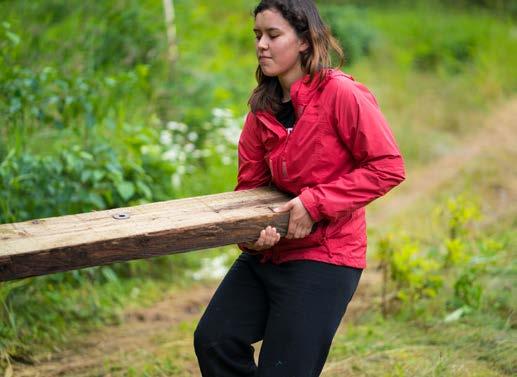
YAJAIRA PONCE-MORAN
Taan (Prince of Wales Island)
“I hope that the community will be able to continue culturally harvesting resources — whether thatʼs berries, beach asparagus, deer, or fish. I hope that the community keeps their bonds with one another and continues to help one another. My role in that, both through AYS and now HNFP, is in preserving and repairing the land that supports the community.”

> Seasons with Alaska Youth Stewards: 2
> Now studying Fisheries, Aquatic & Quantitative Science
> Prince of Wales Crew Leader
Yajaira was born in Mexico and grew up in eastern Washington. After moving to Klawock on Prince of Wales Island as a highschooler, she became passionate about the outdoors and joined the first Alaska Youth Stewards Program in 2017. Six years later, she returned from her studies in Fisheries and Aquatic and Quantitative Science during the summer to serve as the crew lead for the same program.
Did participating on AYS inspire your career and academic trajectory?
It definitely did. When I was at that age, I had an idea of all these high powered jobs that I wanted to do and that I would leave this small town and go out and make a bunch of money.
But AYS helped me see other ways to be ‘successful’. You could be happy working outside, make a reasonable living, and enjoy your life in your community. It changed my perspective and now I love the outdoors and I go crazy if I’m not going outside at some point each day. Right now, I’m studying fisheries to hopefully spend more time outside.
What attracted you to take the summer position of Crew Leader?
A friend shared it with me and it sounded challenging because kids are challenging but also, there were people there, supporting me at that age. So I thought it would be kind of cool to try and be that person for another kiddo.
WOVEN 27
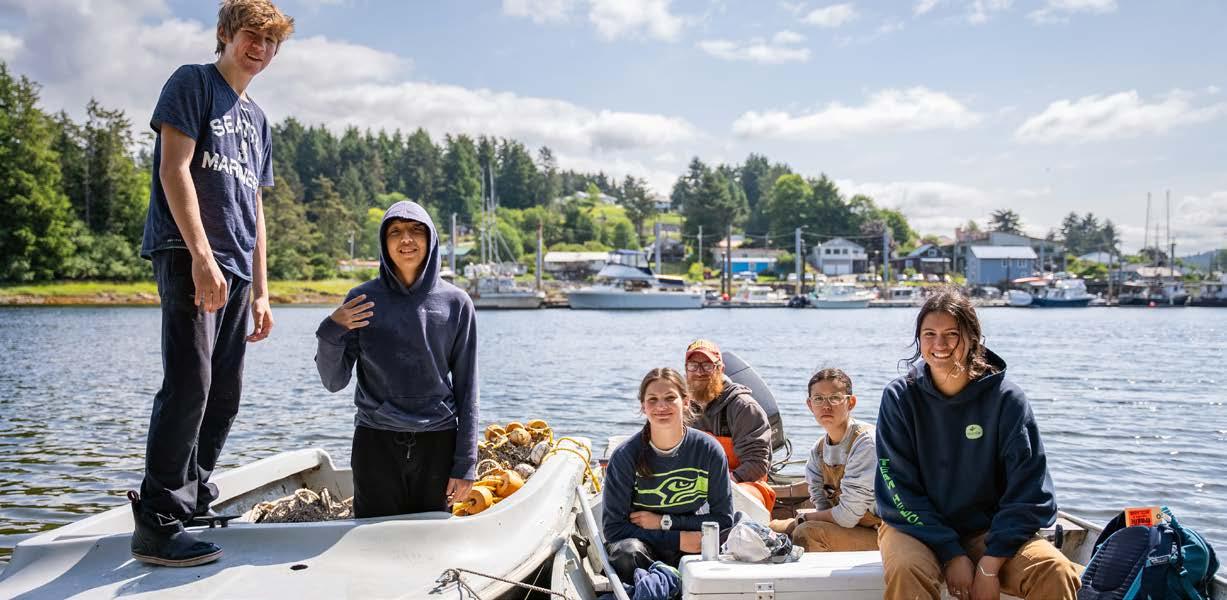
“Problem solving is really a transferable skill and itʼs important to have a program where youth use their heads and think through what they have available to them and how they can get to where they need to be by working with each other and using what they have on hand.”
What do you think AYS youth most look to their leads for?
Not science questions, which was the only thing I was prepared to answer!
But honestly, it can get real really quick when you’re working with youth here and inevitably it can turn into a personal mentorship. They’re telling me all their problems and I want to help them and I just want them to have a good time and a better life but as a crew lead you only have so much control over their lives and it can be very difficult.
How do you approach supporting youth while recognizing those limitations?
I mostly focus on helping them recognize the importance of kindness for one another. They sometimes respond with all of these problems they have and ask, ‘All of this is happening in my life. How can I possibly be kind?’ I just talk to them through respect towards each other and how to be calm and kind. But it’s true you end up with a lot
of respect for these kids for being as kind as they are given some of the issues that they’re facing– they are too young to be dealing with a lot of it and I’m sorry for that. The youth can be pretty incredible in these ways and resilient in supporting one another.
When it comes to transferring skills to the next generation, what do you think is the most important skill participants get out of AYS.
Problem solving. Especially when we’re building things out in the middle of nowhere, things don’t always work out so easily. The trail is not flat and perfectly even or square for you to just throw some stairs or a bridge on top of for example. We let them struggle and they get mad and I’m like, ‘Okay, now let’s think through and slow down and think about it together’. Problem solving is really a transferable skill and it’s important to have a program where youth use their heads and think through what they have available to them and how they can get to where they need to be by working with each other and using what they have on hand.
Advice for future Alaska Youth Stewards?
I would say to slow down for a second and enjoy the place that you’re at. I think I was very eager to leave the Island, go out in the world and explore all these things and now that I’m not there anymore I miss the freedom that Alaska imparts on you. I want to go fishing or mushroom foraging and I have such a hard time finding land that isn’t privatized now. Alaska is really special in that way.
For Klawock, I’d love to see more of the youth stay. There’s a lot of people that leave looking for something ‘better’, and I think Klawock is under-appreciated and a wonderful place. Of course there’s issues like economic development and housing but it’s a great place and I’d love to see it grow and flourish.
28 SUSTAINABLE SOUTHEAST PARTNERSHIP
Photo: Lee House

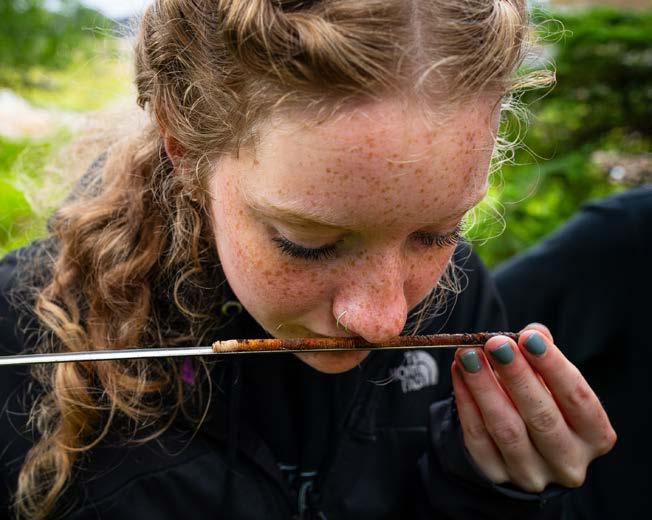
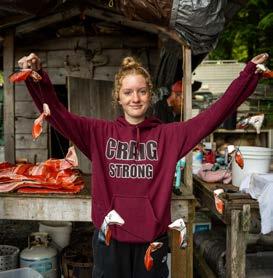
OLIVIA VICKERS
Alaska Youth Stewards Prince of Wales Island
A 600 Year-old Tree
“I have worked with the Alaska Youth Stewards for two years. It is enjoyable because it gives us high school students an opportunity to explore jobs that are available to us on the island like in forestry, salmon stream restoration, the trades, construction, environmental protection, and more.
We not only learn about this work but we actually get hands-on experience with different employers like the Klawock Indigenous Stewards Partnership, Sealaska, and the USDA Forest Service.
I’ve also learned so much about our forest and the animals living here as well as about the important work being put into our streams to help fish populations.
We also helped inventory ancient red and yellow cedar trees that are important for cultural uses like totem pole and canoe carving. As part of this work, we take core samples from trees. When you pull a core out of a tree that is hundreds of years old the smell is incredible, the first thing I always do is put it directly to my nose and breathe in. These cores are sent to The College of Wooster in Ohio where they are studied to understand impacts to these important trees such as climate change. They tell us how old the trees we core are and in 2022 one of the trees was 599 years old. So, in 2023 our crew brought candles and cake to celebrate this tree’s 600th birthday!
Being able to have these hands-on experiences at such a young age helps teens get ideas and inspirations on what to do after high school as well as how to improve the environment where we live.”
WOVEN 29
COMMUNITY VOICE
Above photos: Bethany Sonsini Goodrich
Abundance
Harvesting, sharing, and stewarding
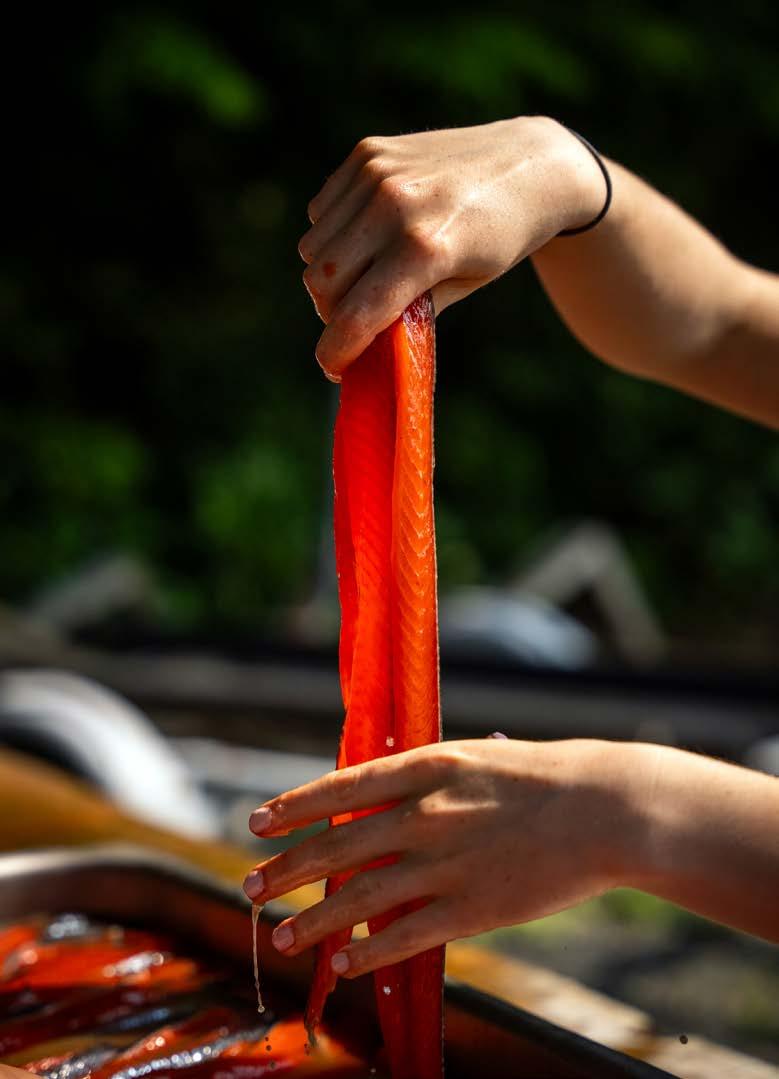
From alpine blueberries to sockeye salmon, the average Alaskan harvests nearly 300 pounds of wild foods each year. Harvesting and sharing wild foods and medicines connects us to the land, the seasons, and to one another. In reciprocity, Alaskans care for the lands and waters that care for them.
30 SUSTAINABLE SOUTHEAST PARTNERSHIP
Moving salmon strips from the brine to the smokehouse in preparation to be jarred for family, elders, and community. Photo: Lee House
Partners include Hoonah Indian Association, Huna Totem, City of Hoonah, Huna Heritage Foundation, the Alaska Youth Stewards program, and countless volunteers.

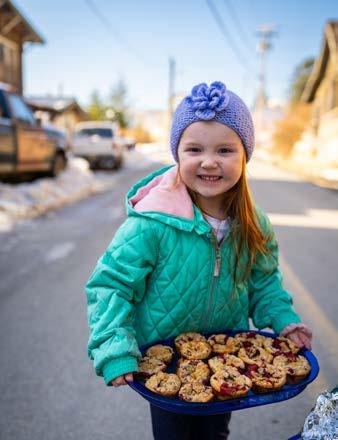
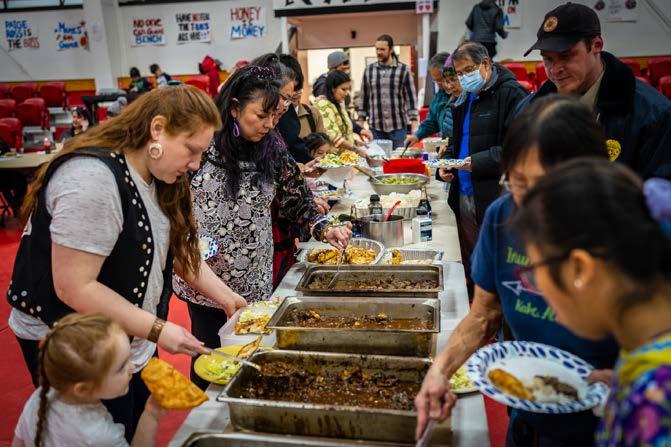
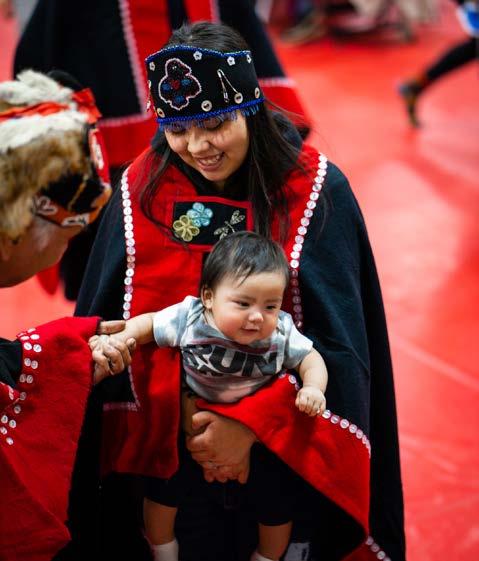
The first Kéex' Kwáan Traditional Food Fair was hosted by the Organized Village of Kake and Ecotrust with support of the First Nations Development Institute, Sealaska, Edgerton Foundation, and the Sustainable Southeast Partnership.
Delicious traditional wild foods were served and gifted to community members — including jars of food processed by the Alaska Youth Stewards program. Deer and moose adobo, fried halibut, herring egg salad, crab salad, and raven's berry delight were prepared thanks to gifted wild foods and the master preparation of many volunteers. The Kéex' Kwáan Dancers performed for the first time since the onset of the Covid-19 pandemic. Community members brought potluck dishes and also submissions for the traditional food competition which was judged by a panel of elders and traditional food harvesters with excellent taste!
WOVEN 31
Xunaa’s (Hoonah) 6th annual Traditional Food Fair welcomed over one hundred community members to feast and celebrate both traditional wild foods from the land and the ancestral knowledge of how to prepare them.
Photos: Bethany Sonsini Goodrich
Illustration by Stephanie Harold, @discoverybysketch

Sitka black-tailed deer are critically important to Southeast Alaskan way of life. Partners teach youth about deer ecology, hunting, and stewardship through culture camps hosted by Tribal governments, the Alaska Youth Stewards, and others initiatives like Sitka Conservation Society’s Alaska Way of Life 4-H Project in partnership with University of Alaska Fairbanks and Sitka Native Education Program (far right).
Community Forest Partnerships, like the Klawock Indigenous Forest Partnership (KISFP) pictured, prioritize deer habitat enhancement because of how important they are as traditional foods in rural Southeast Alaska. Crews use forest thinning and slash treatments designed to increase the food available to deer so that their populations can flourish — positively impacting communities and the greater ecosystem.
KISFP further supports food security through efforts including harvest for herring eggs on branches, sockeye and coho salmon, a multi-week fish-camp, and multiple community harvests for deer.
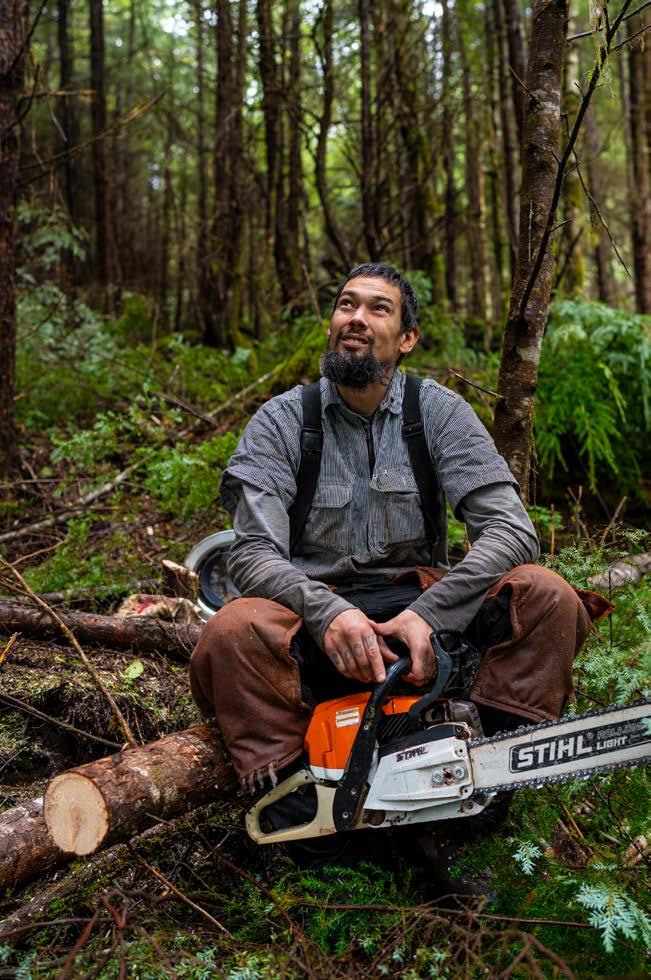
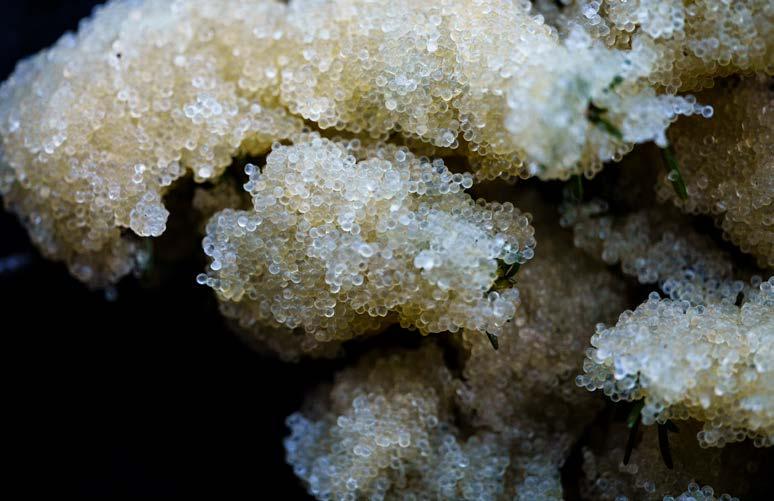

32
Photos: Bethany Sonsini Goodrich
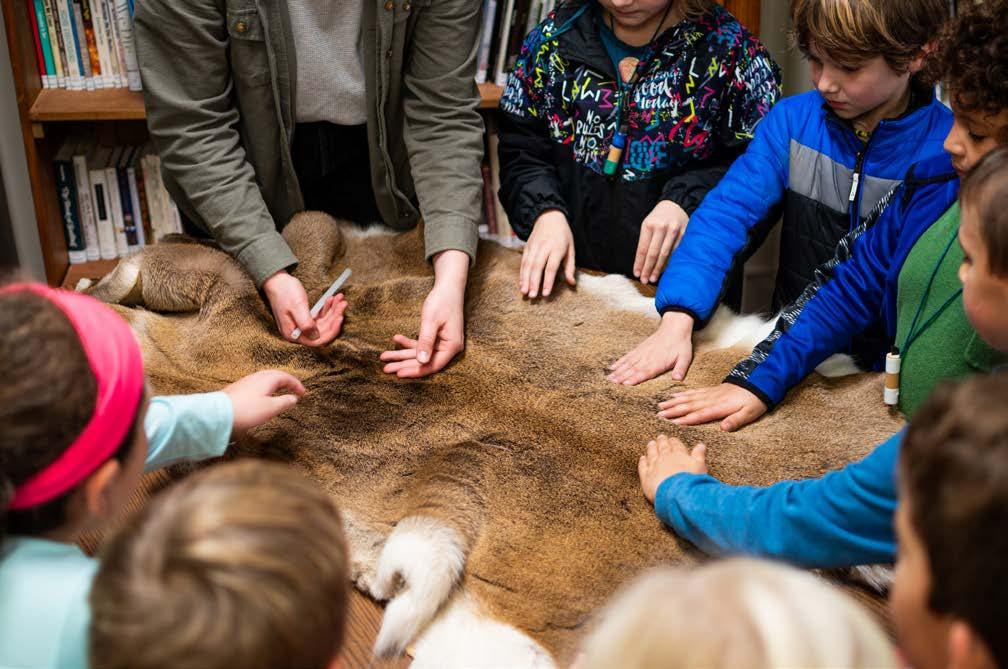

It is critical for rural Alaskan voices to be involved in the regulatory decisions that affect their way of life and the food they harvest to affirm food sovereignty now and into the future. For over five years, Sitka Conservation Society has partnered with the University of Alaska Southeast (UAS) Sitka Campus and the USDA Forest Service and Office of Tribal Relations to increase public involvement in fish and wildlife regulatory processes through dual enrollment course offerings for high school and college level students. In 2023, with the support of Hoonah Indian Association, this program expanded to include three youth from Hoonah.
WOVEN 33
Photos: Lione Clare, Lee House
Laci Lowery hangs sockeye salmon in the smokehouse on Prince of Wales Island (right). The Alaska Youth Stewards program, hosted by Tlingit & Haida, supports youth crews in Angoon, Prince of Wales, Kake, and Hoonah (page 23).
In 2023, 19 crew members across the region harvested more than 770 gallons of wild foods to distribute to community members in need. Kake Alaska Youth Steward (bottom right), Josiah Jackson heaves a halibut he helped catch while Kéex' Kwáan Culture Campers eagerly await on the shore. Hosted by the Organized Village of Kake, Culture Camp is a week-long annual event that strengthens cultural values across generations.
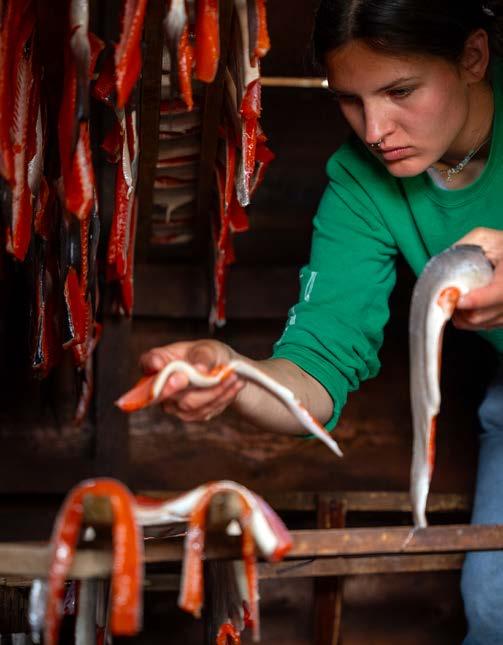
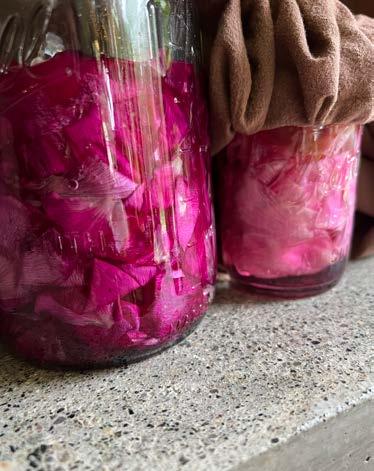
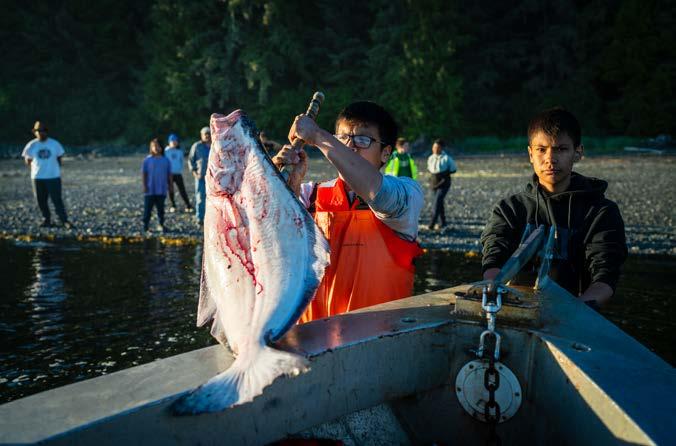
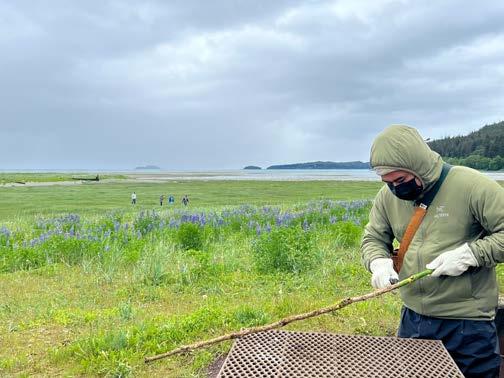
Dís Koo.éex' (moon ceremony) rituals, hosted by Haa Tóoch Lichéesh Coalition provide a space for emotional release and healing. These ceremonies allow people to let go of emotional burdens, release what no longer serves them, and channel inner peace while making space for new beginnings. S'áxt' (devils club) is one of the most powerful and sacred plants that we have. It provides spiritual protection and is used in many ceremonies. It must be respected and protected. K'inchéiyi (rose) is a universal medicine, and in many cultures, it is associated with protection, love, and grace (top left).
34 SUSTAINABLE SOUTHEAST PARTNERSHIP
Photos: Ati Nasiah
Photos: Lee House, Bethany Goodrich
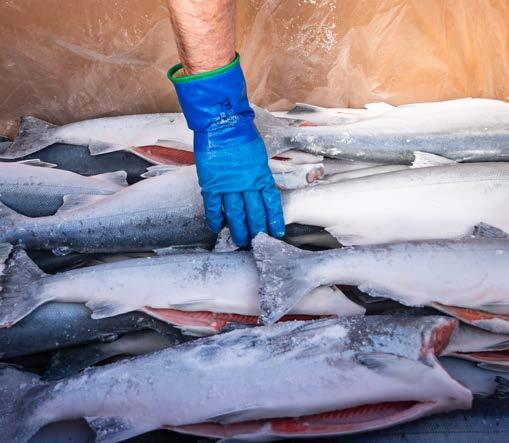

Pacific High School (PHS) is an alternative school providing experiential and place-based education, with an emphasis on community and building a culture of quality. In 2023, the Sitka Community Catalyst hosted by Sitka Conservation Society (SCS) partnered with PHS to fundraise and recruit volunteers to complete a 24' x 48' greenhouse and support their Farm to Table program in which students grow food and incorporate it into student-made, from-scratch school meals, while receiving agricultural and culinary instruction. In 2023 over 270 pounds of nutritious, organic produce was harvested from the school farm. Fish to Schools is a partner rich community program in Sitka where local fishermen make donations of coho salmon and rockfish for student lunches.
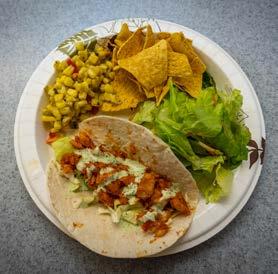
Local Foods in School Lunches
The following recipe, prepared with the help of students, is a favorite at Pacific High School. It incorporates wild rockfish through the Fish to Schools program and student grown herbs and veggies from the new greenhouse.
Fish to Schools Wild Rockfish Tacos
• 5 lbs wild rockfish
• 1 cup olive oil
• 4 whole limes juiced
• 4 Tbsp chili powder
• 1 minced garlic clove
• 1 ¼ cups red onion chopped
• 1 cup cilantro
• 1 ½ cup sour cream
• 1 cup green onion chopped
• 48 whole grain soft taco shells small
In a small bowl, whisk olive oil, lime juice, chili powder, garlic, red onions and 1 cup of cilantro. Place fish in a large baking dish and toss with lime marinade. Refrigerate, covered, for 20 minutes or longer. Heat a large frying pan on medium high. Place the fish and excess marinade in the frying pan and heat 4-6 minutes on each side. Remove pan from heat when fish is flaky. Place ¼ cup flaked fish on each tortilla. Garnish with 1 Tbsp sour cream, 1 Tbsp red onion and a sprinkle of cilantro and green onion.
WOVEN 35
PACIFIC HIGH SCHOOL Sheet´ká Sitka RECIPE SPOTLIGHT
Photos: Lione Clare, Kaa Yahaayí Shkalneegi Muriel Reid, Ryan Morse
Catalyzing
Healing
A Q&A with S'eiltin Jamiann Hasselquist
INTERVIEW BY K AA YAHAAYÍ SHKALNEEGI MURIEL REID
Jamiann Hasselquist, Lingít name S´eiltín, is Deisheetaan from the Yéil S´aag´i Hít (Raven's Bones House) in Aangóon, a grandchild of the Kaagwaantaan Ch´áak´ Kúdi Hít (Eagle Nest House) in Sheet´ká, and was born and raised in Juneau, growing up right above the state capitol building.
“I call this my home,” she says with a smile, finishing her introduction
Jamiann joined the Sustainable Southeast Partnership (SSP) as the Healing Catalyst with Haa Tóoch Lichéesh (HTL) in the fall of 2023. Haa Tóoch Lichéesh (Lingít for ‘We Believe it is Possible’) is a Juneau based non-profit that hosts equity trainings, healing events, and youth programs with over 20 partner organizations. Jamiann has been involved with HTL since 2021 — partnering with the organization on cemetery cleanup work, Orange Shirt Day events, and ocean dips before becoming HTL’s regional Healing Catalyst with SSP.
I was able to attend Orange Shirt day in 2021 and 2022, and I remember Jamiann’s voice vividly. She described her addiction and healing journey with a strength I hadn’t seen before, setting an example for the possibility of my personal growth.
“That was the first time I felt love from my community,” she tells me, describing the 2021 event that honored those impacted by residential boarding school institutions. “I knew then that Haa Tóoch Lichéesh was something special and I wanted to be more a part.”
I sit down with her, and later, as I attend a training and an ocean dip, I begin to understand that want. I’ve been healing on my own and with close friends for a while now, and seeing HTL with this open space for community, gives me hope for our collective future.
“HTL does a lot in the community on many different levels,” Jamiann explains, “working with youth, working with different organizations in decolonization and untangling minds. Focusing on equity, racial bias, and a lot of the deep-rooted parts of the violence that are not physical, but very impactful on our lives.
I really believe in the organization, so I’m happy to be here.”

36 SUSTAINABLE SOUTHEAST PARTNERSHIP
Jamiann Hasselquist smudges SSP catalysts with sage in front of the Healing Heart Totem pole in Craig, Alaska during an autumn SSP Retreat. Photo: Bethany Sonsini Goodrich

How did you find yourself in healing work?
I think my own personal life journey got me involved in the healing work. I’m a survivor of childhood sexual abuse and I was in domestically violent relationships. Being the first generation of someone who didn’t attend a residential boarding school institution, there’s a lot of ripple effects that are there from that.
I started my personal healing journey in 2012 and 11 years later, I’m in a totally different place. I want to be able to share some of my healing journey, the puzzle pieces that I collected along the way, and share them with other people.
I think just speaking about our traumas can be healing by getting them out of our personal body. Other people witnessing that process as well, can be both triggering and validating. It can be permission-giving when you hear someone else speaking a truth that also belongs to you. We’ve been so programmed to be silenced and hearing others come forward can be encouraging for speaking your own truths. That helps begin a healing process.
What processes and people do you lean on?
Well, I have had to find a lot of different modalities of healing. Some of it started out in physical therapy — we store a lot of things in our bodies. And then I went to some one-on-one counseling, which led me to a women’s group that was going on through Tlingit & Haida, and that was a deep dive into our trauma as Native people. I’ve tried acupuncture, acupressure, dry needling, massage therapy, group therapy, oneon-one therapy, sound therapy, and traditional
healer guided journeys utilizing Indigenous plant medicines that were demonized through colonialism. I also sat around a drum for three years.
Of it all, the thing that worked the most for me where I felt like I was actually getting somewhere was that women’s group, and then a healthy relationships group with AWARE, and later in my healing journey the traditional plant medicines I sat with a medicine-woman and medicine-man. The cultural side of healing is really where I felt like I was opening up more. Reconnecting to my culture, and language is another important element of healing. It’s really hard to learn the language but even if you just get a couple of those phrases, and you start thinking in whatever your ancestral language is — that can be healing.
What work do you want to focus on as SSP’s Healing Catalyst?
I think the biggest focus would be on facilitating lateral kindness. This includes promoting an understanding of what lateral oppression looks like, what those behaviors are, and how they’re often rooted in white supremacy culture. With work, we can begin to untangle some of that, and turn that into lateral kindness. I think that’s the most impactful focus for healing regionally because this is something that is affecting our Native communities all across Turtle Island. It’s not just one community to the next, this is systemic. It’s happened through United States Indian policies and the oppression that we received. We couldn’t voice our opinions against that and so we started treating each other a certain way that is still happening today.
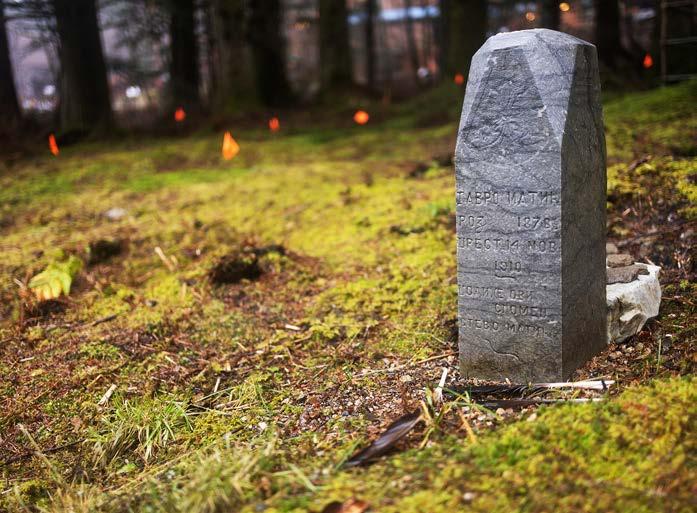
WOVEN 37
Haa Tóoch Lichéesh and other partners have worked on the rehabilitation of cemeteries that contained many undocumented graves prior to the project. The group has cleared brush, raised gravestones, and has requested that the City of Juneau continue maintenance of these important and sacred resting spaces.
Photo: Kaa Yahaayí Shkalneegi Muriel Reid
Focusing on our relationships and our kinship and kindness is going to be a main focus with the Community Catalysts because they live in their communities, they are invested in their communities, they know what’s best for their communities, they are the ears of their communities, they have the relationships, and those are their relatives.
Other focus areas include training and increasing healing through culture and cultural activities like Lingít language, ocean dips, healing village crafting tables, plants as medicine and social emotional teachings, lateral kindness campaigns and workshops, continuation of Orange Shirt Day awareness events, healing our relationships through restorative justice and with organizations seeking right relations, addressing systemic trauma and oppression through host trainings of Alaska Native Dialogue on Race and Equity, continuing to develop and implement cross-sector learning, and interacting with two fullservice-community-schools on equity frameworks.
Do you have any advice for individual allies or organizations that want to support decolonization and healing work in Southeast Alaska?
Start within. I think organizations should have good selfreflection and see what kind of systems they might be running off of, what kind of mentalities might be there, and how trauma-informed their organization might be. It is important to recognize that we’re just the first and
second generation coming out of residential boarding school institutions, and to be trauma-informed on those subjects is helpful in earning trust in communities. Understand that we have to move our relationships at the speed of trust.
What impacts have you seen from healing work?
There’s language revitalization happening here and there and it would be nice if it were everywhere. The language is so healing and helps us bring back the unique ways that we think — thinking before we speak. That’s actually one of the things I’m taking over in this role is the Lingít classes. We have one person, who was part of the ‘Sixties Scoop’, an Indian adoption project in Canada and they’re now learning their language. They were really uncomfortable to start, and now that we’re moving into it, they’re speaking more, and they seem to be more comfortable about learning the language than the first day. Just seeing that in a few sessions is really impactful.
We started hosting community cold water ocean dips in partnership with HTL. We have a lot of people who show up to the events and who are now going to the ocean on their own. They say that our culture and this process is healing them. Some people attend who don’t have a lot of people in their everyday lives and that helps bring community to their world. That’s been really special.
Jamiann Hasselquist began her personal healing journey in 2012. She is passionate about sharing the ‘puzzle pieces’ she learned throughout her personal process with others in her role as Healing Catalyst. She believes that reconnecting with language and culture and cultivating safe spaces to speak about trauma are important for personal and regional healing. Photo: Kaa Yahaayí Shkalneegi
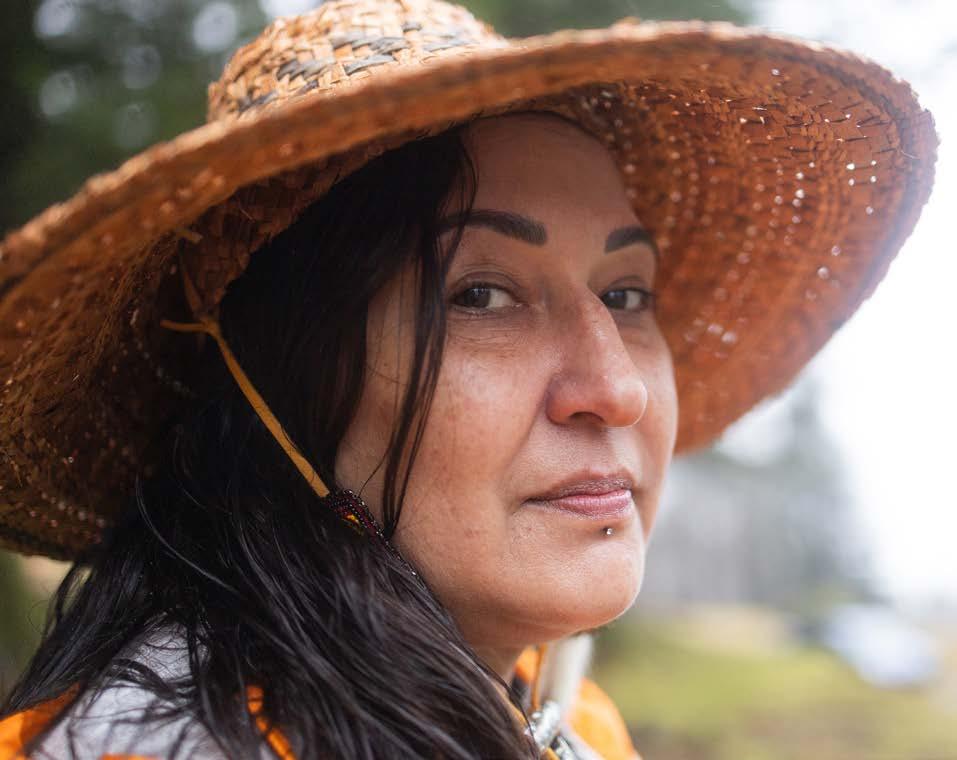
38 SUSTAINABLE SOUTHEAST PARTNERSHIP
Muriel Reid.
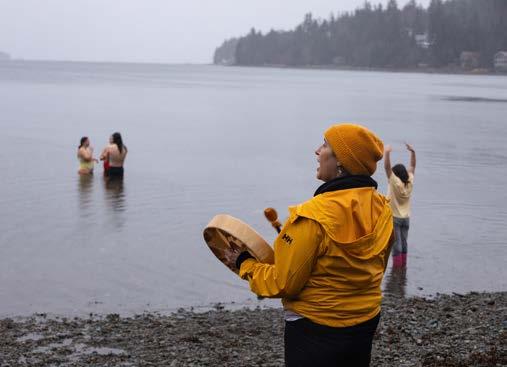

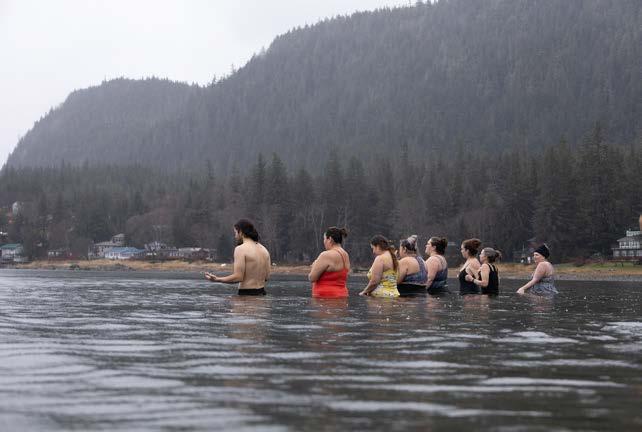

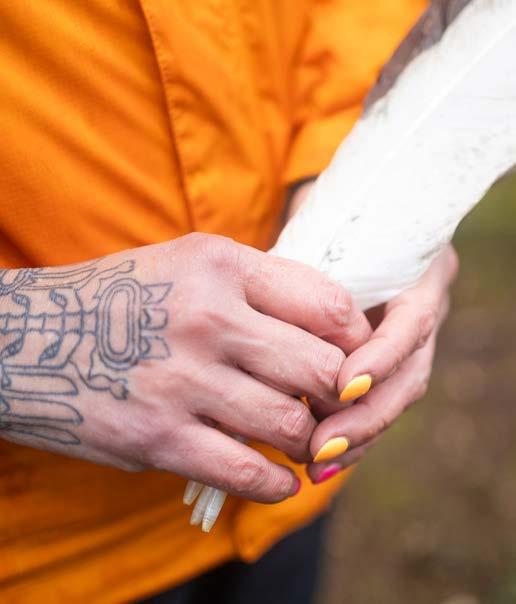
At November’s dip, on a blustery day at Lena Beach, Jamiann smudges the group with sage as people introduce themselves. Later, as they enter the water, she’s standing on the shoreline, drumming loud.
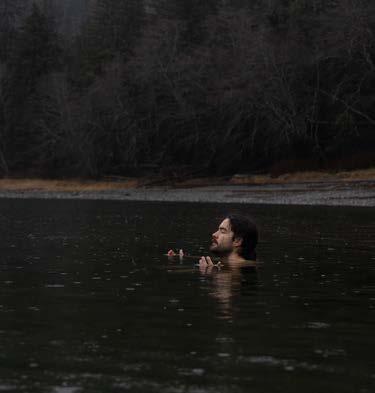
The process of submerging in cold water is a cultural tradition that dates back thousands of years within Southeast Alaska – promoting strength in body and mind. Hasselquist describes how these cold water dips also help cultivate community and togetherness.
WOVEN 39
Photo: Kaa Yahaayí Shkalneegi Muriel Reid
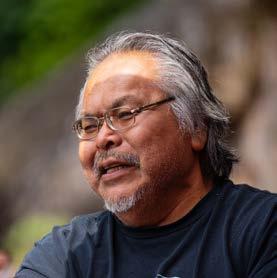
Healing in Kéex' Kwáan
“In 1912, our ancestors had to decide whether they were going to continue on with our traditional way of life or follow the Western way. There was a lot of sadness and discussion, eventually deciding to follow the Western way. Building the boardwalk, they nailed the last plank with a silver spike signifying putting a lid on our culture. That’s how Kake became recognized as an official city by the United States.
In the '90s, an old logging bunkhouse was abandoned. Last year, the USDA Forest Service transferred ownership to the Tribe to make it a Cultural Healing Center to heal the intergenerational trauma in our communities. The center will serve rural communities by reintroducing them to their identities, histories, and land, making sure they know who they are, where they come from, and who their family and clan is while taking care of their physical health. All those things are important for a person to be healthy. We want to work with organizations, corporations and Tribes across Southeast to make it all come together — everybody working together for healing, everybody having a place in the program.
Jamiann Hasselquist, Healing Catalyst with SSP, did research and discovered in the early 1900s the Quakers, Friends Mission Church, built a school here they made our kids go to— she connected us with them. We invited them to Kake Day and they gave us a public apology and a $90,000 donation toward our Healing Center. Recognizing how much harm was done to our people, that’s a big deal and a good start to healing. I invited Jamiann and her friends to celebrate. We wanted to acknowledge them for all they’ve done to make this happen.”
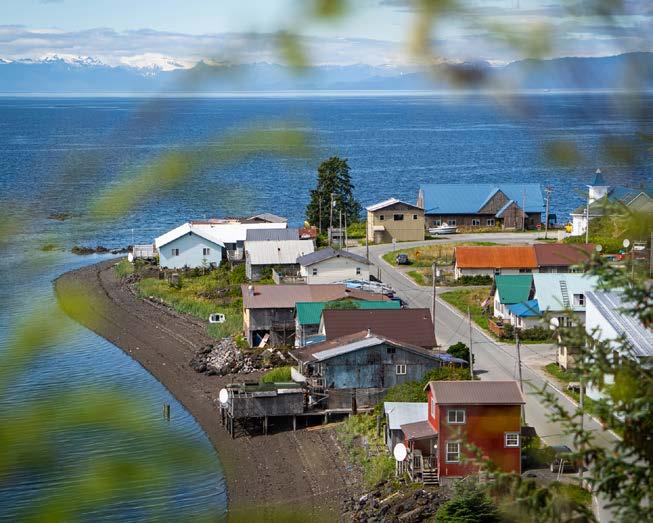
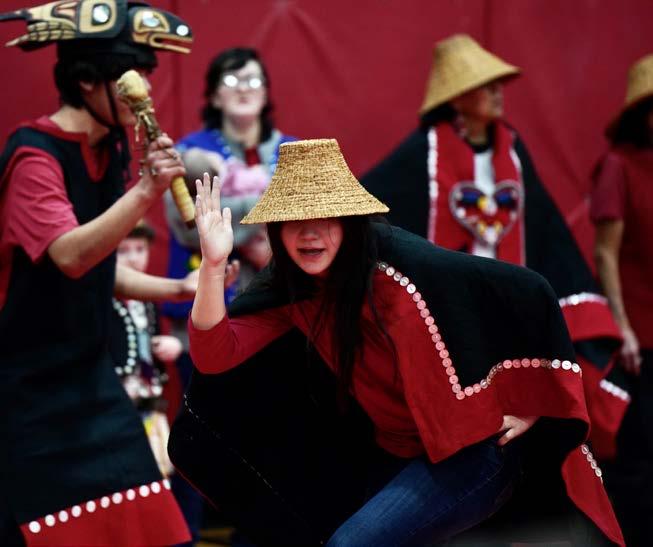
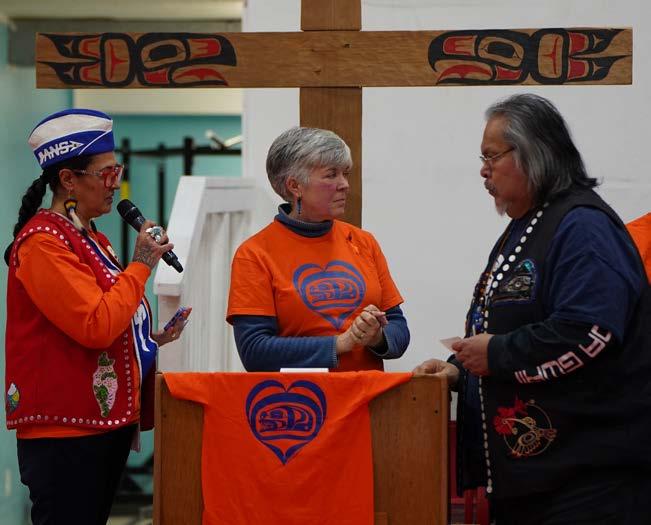
40 SUSTAINABLE SOUTHEAST PARTNERSHIP
COMMUNITY VOICE
JOEL JACKSON President Organized Village of Kake
Above photos: Shaelene Grace Moler
Photo: Lee House
DIVIDED UNITED ON POLICY
Advocating for Our Communities, Holding Our Differences
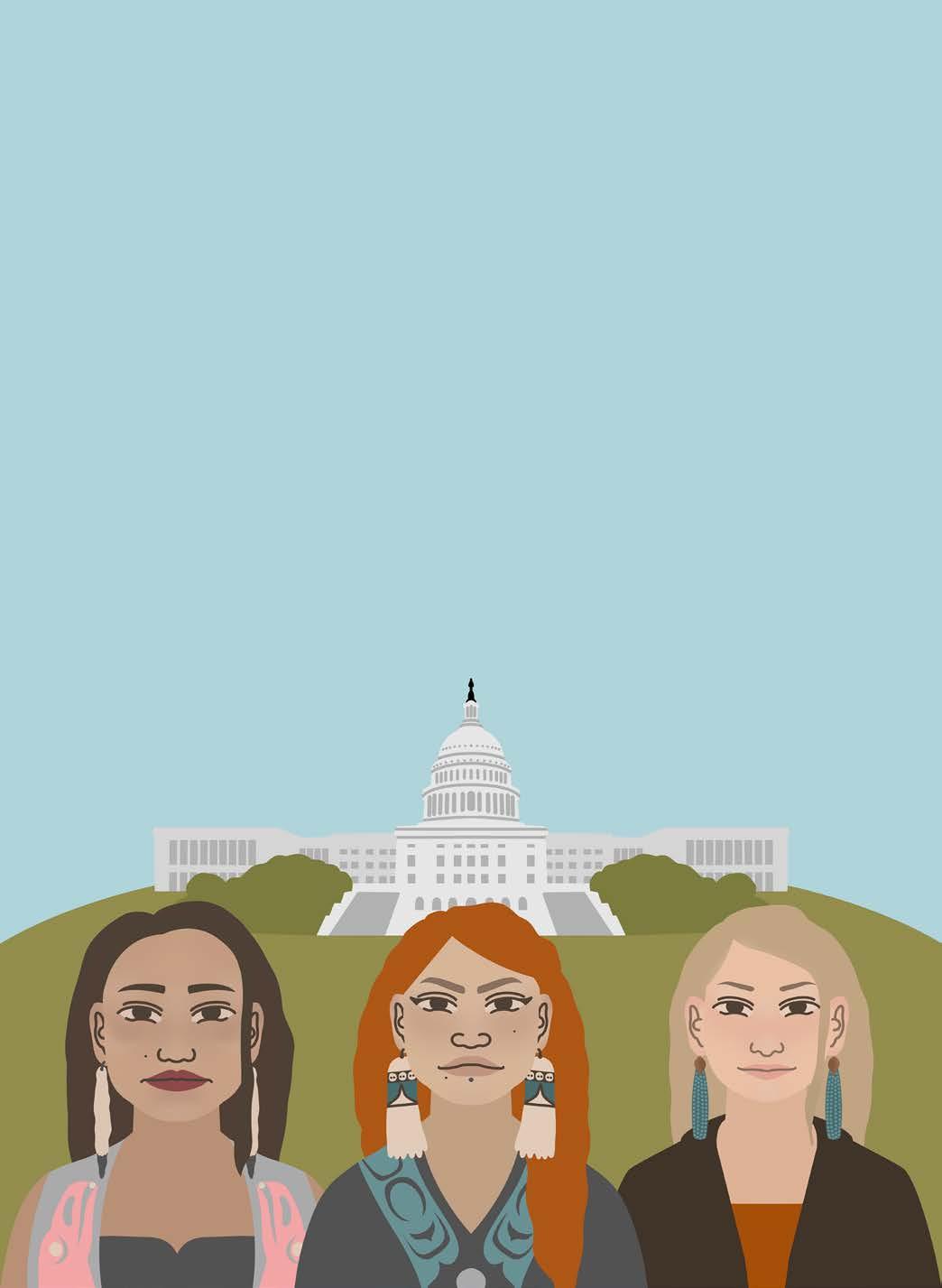 WRITTEN
WRITTEN
BY SHAELENE GRACE MOLER ILLUSTRATION BY KUSHXEET SIENNA REID
ORIGINALLY PUBLISHED IN FIRST ALASKANS MAGAZINE WINTER 2023/2024
WOVEN 41
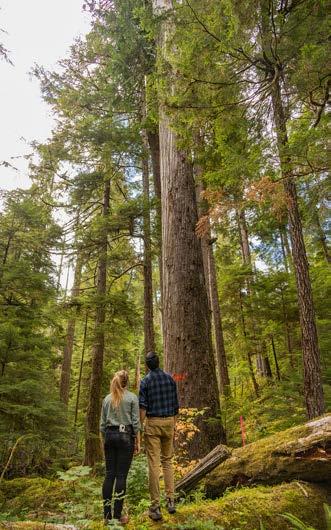
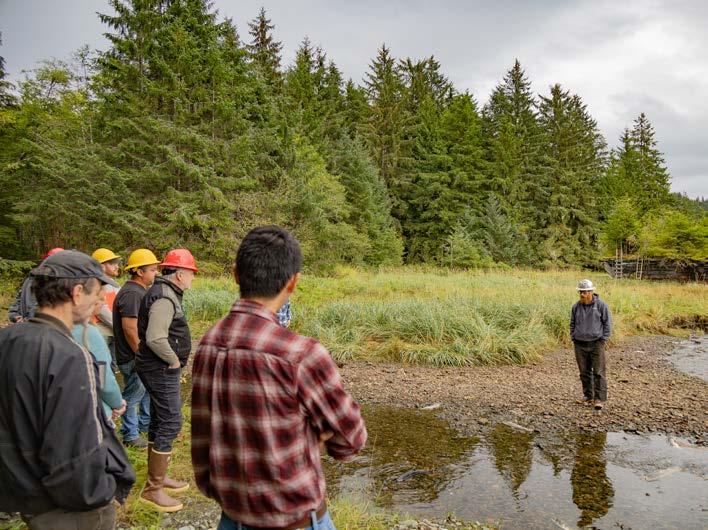
In April 2023, Tesla Cox, Katie Riley, and Marina Anderson traveled roughly 3,500 miles from their homes in rural Southeast Alaska to the U.S. capitol with a thank you.
Usually, policymakers in Washington, D.C. are overwhelmed with criticism about what they are doing wrong, or what they aren’t doing enough of. While it is rare for federal legislators and agencies to receive in-person praise for a policy that’s already been enacted, these women are not afraid to challenge norms — especially when they aren’t serving the communities they care deeply about. Representing a for-profit Alaska Native corporation, a grassroots conservation organization, and a collective impact network directed by a previous Tribal administrator, Cox, Riley, and Anderson work for organizations that were historically at odds. Today, these individuals and organizations represent a growing shift in the Tongass National Forest within the Sustainable Southeast Partnership (SSP) that is moving away from polarization and fighting, toward collaboration and building common ground — including in the policy arena.
SSP is a collective impact network that, for the last decade, helped bridge divides while cultivating understanding, healing, and momentum towards a common vision. SSP, which includes partners of many different ideological, geographical, and disciplinary backgrounds, came together to build programs that mattered to Southeast Alaskan
communities, while building trust and healing relationships. A portion of this work includes influencing federal policies that have an outsized impact on this region, considering that 17 million acres is federally managed as the Tongass National Forest. SSP operates on traditional values creating sustainable, healthy futures for all generations through youth programing like the Alaska Youth Stewards (AYS) to supporting regional policies like the Southeast Alaska Sustainability Strategy (SASS), a $25 million United States Department of Agriculture (USDA) investment focusing on community-driven priorities and ground-up solutions. Marina Anderson, a Haida and Lingít solutions-based strategist from Prince of Wales Island and who once served as the Tribal Administrator for the Organized Village of Kasaan, became the director of SSP in 2023.
“We started SSP by talking about what we had in common, rather than diving into the thorny issues right away,” says Katie Riley, Deputy Director of Sitka Conservation Society — one of the founding partners of the network. “Through this process, we built trust, and we were able to engage in harder and harder conversations over time, and eventually we found ourselves collaborating on policy as we advocated together on issues that mattered to all of us.” For the first seven years, SSP partners intentionally left politics at the door for fear it might divide and hinder the growing collective impact network from building trust and common ground. It took time, but SSP partners are increasingly understanding the power in pursuing a common vision while still holding political differences fostering a reciprocal transformation between institutions.
42 SUSTAINABLE SOUTHEAST PARTNERSHIP
Quinn Aboudara, Stewardship Coordinator for Shaan Seet Inc. Natural Resources Division and the Klawock Indigenous Stewards Forest Partnership (KISFP), discusses stream rehabilitation with USDA Forest Service staff at one of KISFP’s most recent sites near Hollis. Photos: Kaa Yahaayí Shkalneegi Muriel Reid
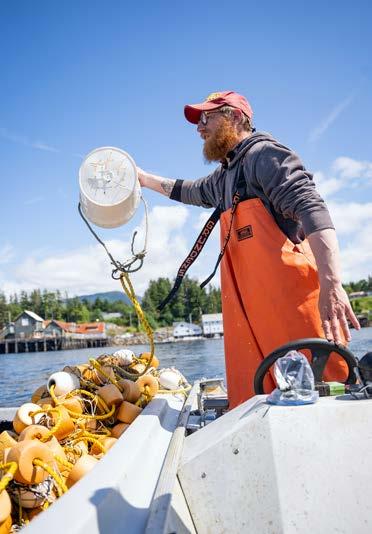

Distraught by the polarization she sees as a policy expert at the federal level and inspired by the impacts she’s seen SSP have at the community and regional level, Riley cracked the idea for this advocacy trip. Riley, as well as Cox and Anderson, all acknowledged how important it was for their organizations to show up for our youth and communities and how powerful it would be for the three of them to show up together. “We’re there for our organizations, but really on behalf of the SSP network as a whole and representing the strength of that collaboration,” says Cox, who is the Senior Director of Shareholder Development with Sealaska — a regional Alaska Native corporation.
Each proudly dressed in attire representative of who they are and where they come from, including earrings and regalia, the trio advocated together for the Southeast Alaska Sustainability Strategy (SASS), meeting with Senator Lisa Murkowski, Senator Dan Sullivan, Representative Mary Peltola, and more. The SASS was developed to lean-into decades worth of work by local changemakers such as SSP. SASS looks to community priorities and local solutions to improve how federal land management and community development work for the people of Southeast Alaska. Beyond this, the USDA’s commitment to SASS also demonstrates the agency’s intent and desire to repair relationships where past harm was done. For example, the USDA Forest Service harmed tribal communities through the dispossession of land and the burning of traditional smokehouses. Though these acts had widespread and lasting impacts which still affect communities today, SASS is a step toward healing. The strategy and other related
efforts are placing an added emphasis on the Forest Service working closely with Tribal governments and Alaska Native corporations, strengthening Tribal consultation, locally hiring more Tribal Relations positions within the Forest Service, and supporting Tribal-led Community Forest Partnerships — three of which exist in Hoonah, Kake, and Prince of Wales Island (page 16).
Cox, Riley and Anderson, prepared with a gift of smoked salmon and herring eggs, walked into Peltola’s office, which was adorned with traditional Yup'ik dance fans. The sharing of traditional foods was a show of respect and care before entering the conversation. They were there to show both Peltola and Murkowski that progress is being made under SASS, and invite them, Dan Sullivan, and their staffers, to experience the youth program’s place-based learning strategy SASS supports for themselves showing them how decision-making over 3000 miles away truly impacts Southeast Alaskans.
The group discussed how community-driven projects that have community buy-in are what ultimately fosters a healthier future. “When you invest in communities coming up with and implementing their own solutions, we have a lot at stake in their success, and that’s how you make longterm solutions,” says Riley. This is because there are a lot that communities want to do, but the funding requirements don’t always line up with communities’ interests, goals, or even their available resources. This is something that Anderson experienced as a Tribal administrator. It is important to fund community-driven projects because,
WOVEN 43
Quinn Aboudara (Shaan Seet, Inc. / KISFP) throws a net from his skiff while beach seine fishing. Aboudara and the KISFP crew bring the Prince of Wales Alaska Youth Stewards participants onboard to learn and take part in the harvest of salmon, which they then process and distribute to their community. Photos: Lee House
“When you invest in communities coming up with and implementing our own solutions, we have a lot at stake in their success, and that’s how you make long-term solutions.”
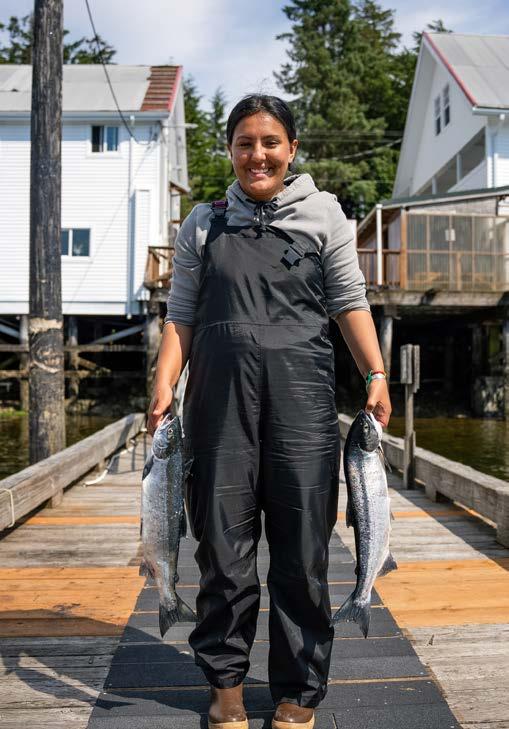
“coming in with outside ideas of what a community needs, or should do, not only wastes the community’s time, but it also chips away at any trust that you might have with the community because it shows you’re not listening to their needs,” Anderson shares. If a project isn’t communitydriven, these communities won’t allocate their resources. Anderson emphasizes that it also must be at their speed — some communities lack the workforce and resources to make projects happen quickly and need holistic support building that capacity.
Due to the collaborative nature of SSP and SASS, there is no gatekeeping, these communities and youth programs are sharing information, resources, and mentorship. Each accomplishment made by one community inspires another. As Cox says, “None of us can do it alone, but when we all work together, we can use each other’s strengths and fill in gaps for each other.”
In the rooms of Murkowski, Peltola, and Sullivan, the trio opened their hearts to discussing the importance of developing local career pathways, Indigenous costewardship, and policies like SASS for ensuring federal actions support regional economies, community resilience, and conserve the natural resources in Southeast Alaska for culture, sustenance, economic use and beyond.
Cox said, “I think it was powerful that we were really there to say, ‘thank you for SASS,’ and ‘this is working and here’s how, and let’s build on that.’ And we used some of that funding to develop projects, and then shared that back with them.” The trio expressed gratitude and shared the results of SASS in a way that aligns with the traditional values of Southeast Alaska: respect of all things and sharing — values that those in AYS are learning. By investing in SASS and following each community’s lead, policy makers are funding a healthier future for generations of Southeast Alaskans in our people, lands, and waters.
The Alaska Youth Stewards
To give policy makers a better understanding and ground the significance of what the trio were advocating for, they shared stories from the AYS (page 23) program in action. They shared about youth contributions to the management of culturally significant resources, contributions to community feasts, and more. AYS, hosted by Tlingit & Haida Indian Tribes of Alaska, is rooted in traditional values, instilling pride and healthy practices in the arts, resource management, habitat/stream restoration, recreation, community involvement, and cultural practice for Indigenous youth.
44 SUSTAINABLE SOUTHEAST PARTNERSHIP
Prince of Wales Island Alaska Youth Stewards crew member, Allison Mills, holds salmon caught while beach seining with the KISFP crew. Photo: Lee House
—Tesla Cox, Senior Director of Shareholder Development, Sealaska
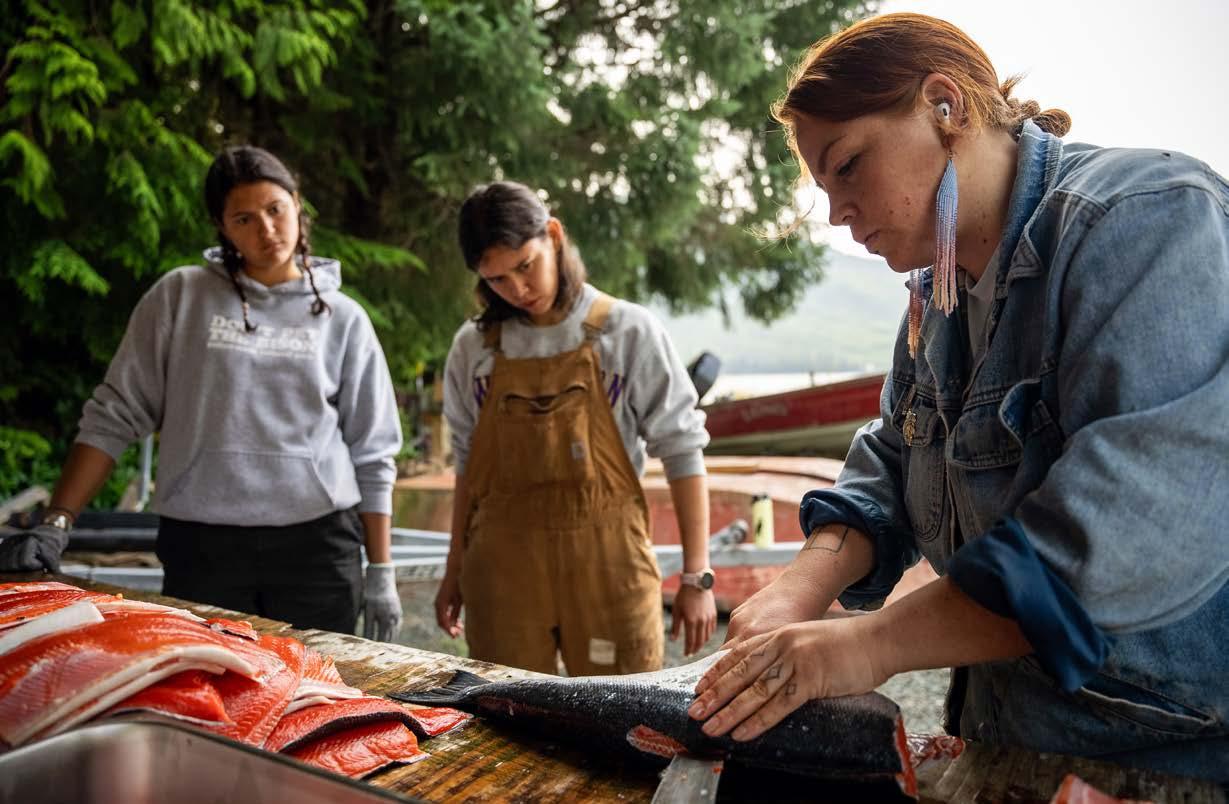
What is so unique and effective about AYS is the program starts with the self — developing youth values and skills, and encouraging participants to ask what they can do for their communities and home state. AYS also gives youth access to healthy mentors, enabling them with the skills to become healthy mentors themselves, building a generational impact in our communities. AYS also allows youth to build stronger relationships with their community and local lands and waters, while introducing them to careers that allow them to stay in our region by showing that we have good opportunities that are economically stable and let them live their traditional lifestyle. In discussing why career paths produced by these programs work, Cox said, “I always use the Malcolm Gladwell saying, you’ve done something for 10,000 hours so you’re an expert. What have our people just naturally been doing for 10,000 hours? We’re already out in our forests, harvesting and navigating, so how do we translate that into tangible careers?” The Alaska Youth Stewards are doing just that.
To Anderson, the exposure these programs provide to youth hits home. She reflected, “I remember being in school knowing that I wanted to live here forever. When people would ask, ‘What do you want to be when you grow up?’ I was like, well, you know, we don’t have doctors, we don’t
have a hospital. So, I don’t want to do that. I really just thought that I’m going to be nothing but I’m not going to leave here. These kids now though, they know they can be whatever they want.” These programs are so much more than a summer job, as participants get to see the work they do directly impact their homelands, while getting exposure to career pathways in their communities they may not have otherwise thought of. They gain a better understanding of the value of everything beyond monetary value, and how things were traditionally used and interacted with. This is holistic workforce development, and these are skills that benefit an individual and a community far beyond the workplace, providing an opportunity to live a lifestyle in-sync with traditional values.
AYS is founded on the backs of the SSP supported by a variety of partners from the Forest Service to Tlingit & Haida to Spruce Root, a community economic development institution in Southeast Alaska. It is this partnership that allows the youth to explore such a wide variety of career paths and establish a network of support. In the process of supporting AYS, SSP partners are supporting values-based community needs and initiatives led by these youth crews that will create generational impacts.
WOVEN 45
Marina Anderson, SSP Program Director, demonstrates a cut along the backbone of the salmon. After participating in the harvest, the Alaska Youth Stewards crew then help process the fish to be smoked, canned, and shared with their families, neighbors, and elders. Photo: Lee House
Back in the Tongass
Influencing policy is ultimately about the impression you make on policymakers. It is about getting them to feel, see, smell, hear, and truly understand the impact they are making. This is why Anderson, Riley, and Cox invited policymakers back to Southeast Alaska to meet and work with the Prince of Wales AYS crew. This is especially true for Southeast Alaskans who get few chances to advocate for what they want and care about because they are located in a rural region of less than 70,000 people nearly 3,500 miles away, in a sphere where urban needs are often prioritized.
In planning the DC trip, the trio acknowledged how youth development and advocacy in many ways are the same. Months after the DC trip in summer, policymakers arrived on Prince of Wales Island. With the goal to build power in relationships through shared experiences, they came to see how AYS are coring and monitoring cedar trees that are important for cultural uses such as totem poles and dugout canoes, so that they can understand why a long-term conservation plan is needed to create generational stability and opportunity. They learned how policy shapes and is shaped by community wants and needs, generationally, through the lasting impressions these experiences create and as communities learn and grow.
In Southeast Alaska, this community-led initiative is key to a healthier future for us all, and as Anderson says “We’re only as healthy as the rest of our communities. If our region is healthy, then we’re able to expand and assist other regions in the state and along the coast and become a healthier part of the world. By engaging in healing from the conflict that our own region has experienced, we’ll actually be able to help heal others in the future.”
Ultimately, the SSP and SASS are a model for moving forward and creating generational impacts in our society through the power of collaboration, investing in community priorities, and healing. This is the trifecta of building long-lasting solutions because it prioritizes investment in the people who know these lands and waters best, producing a reciprocal transformation across divides in partnership.
If you are inspired by this article, please engage with politicians and decision makers. Share your community’s experiences and priorities, what is working, and what is not. The more we engage, the better represented we can be.

46 SUSTAINABLE SOUTHEAST PARTNERSHIP
The Klawock Totem Park.
Photo: Lee House

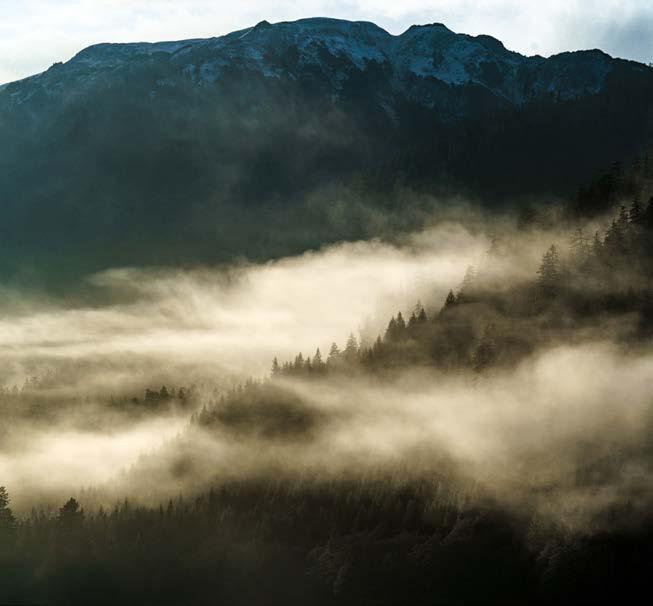
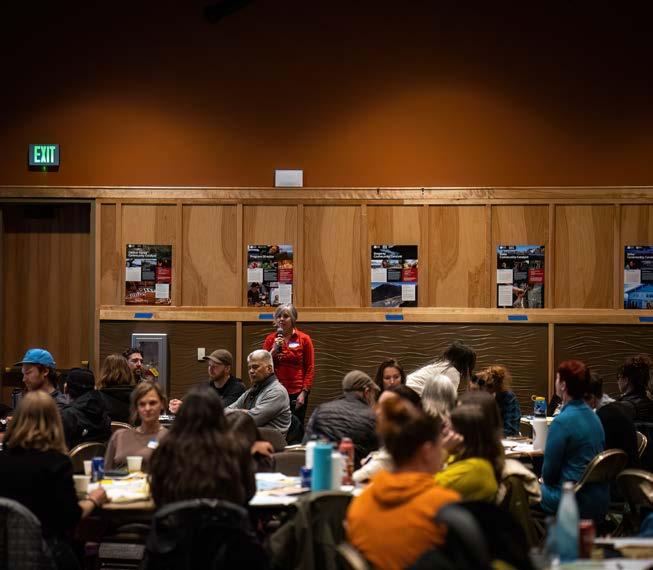
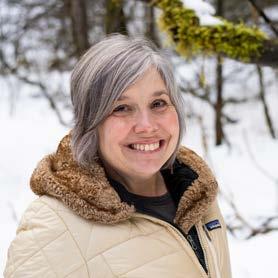
Tongass Revision
“The Tongass National Forest is 17 million acres of public lands that surround the communities of Southeast Alaska. The Tongass Forest Plan is the foundation for every decision made by the USDA Forest Service here. The last time this plan was revised was in 1997 and so much has changed since. The only constant in Southeast Alaska is the people who have lived here and stewarded this place since time immemorial. As an agency, we want to respond to the changed conditions that exist in Southeast Alaska now. We want to create a plan that’s transformational and based on what’s possible in our collective future.
We are really trying to flip the script on how we engage with the public. We are partnering with Spruce Root, the Juneau Economic Development Council, and working with the Sustainable Southeast Partnership to help us think outside the box. Coming into this process, we are conscious about some of the trust we’ve lost and harm we have caused to Indigenous communities in particular. As an agency, we are trying to listen differently, and with that comes relationship and trust-building.
What’s different with this revision and planning process is that we’re bringing our whole selves. We might be a federal agency, but we are people that live in these communities and care about what happens on the Tongass. We’re asking, “What kind of activities should take place where and what kind of economic and cultural benefits should the Tongass provide for the communities and businesses of Southeast Alaska?” The Tongass belongs to everyone, so everyone is encouraged to participate in this process. If you love the Tongass, please lend your voice.”
WOVEN 47
COMMUNITY VOICE
BARB MIRANDA Deputy Forest Supervisor USDA Forest Service Tongass National Forest
Above photos: Bethany Sonsini Goodrich, Lee House
An Energy Secure Angoon: Catalyzing Career Pathways for Youth
WRITTEN BY JENNY STARRS, RENEWABLE ENERGY ALASKA PROJECT
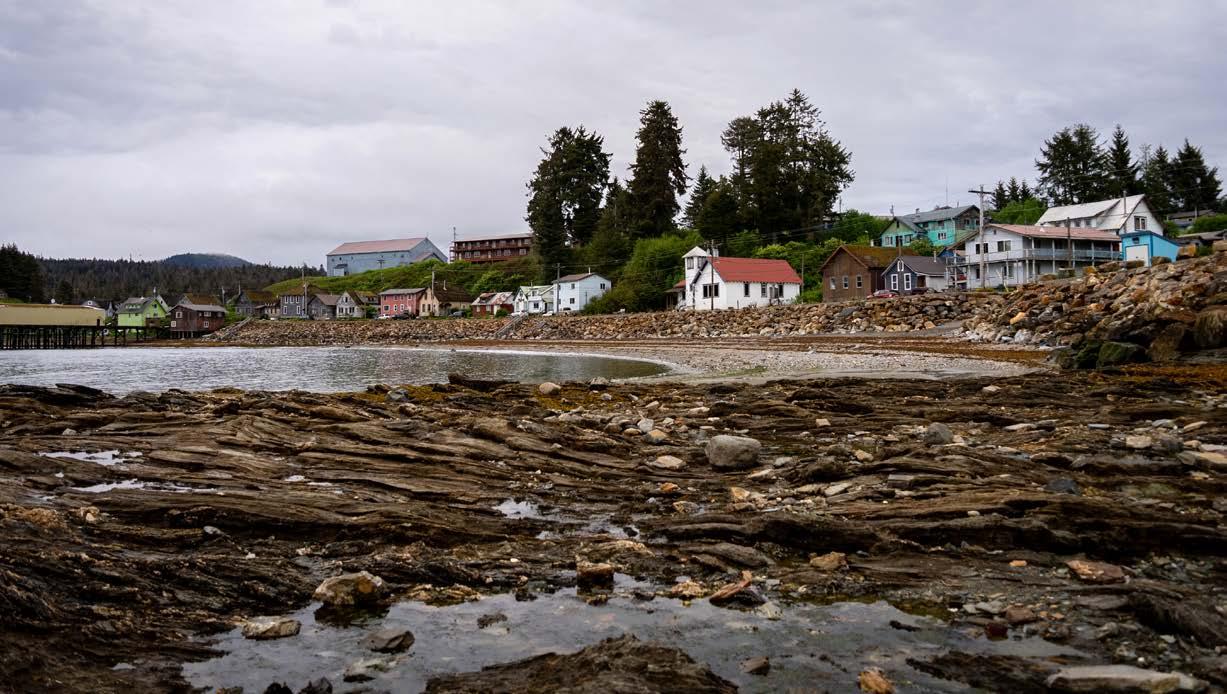
Late one January evening, with daylight long gone and a cold snap gripping much of Southeast Alaska, the MV Hubbard lowered its gangplank in Angoon.
Part of the state-run Alaska Marine Highway System, the Hubbard serves as one of the only connections between coastal communities in the region. And as one of two roundtrip ferry stops scheduled for that month, its arrival sparked a flow of activity. Parka-clad adults and teenagers streamed off the ferry. A large U.S. Forest Service SUV, stuffed to the brim with Costco supplies, lumbered over the grate and idled in the snow-dusted lot ahead of our similarly packed Subaru.
While directing the flood of newcomers, Angoon School Principal Emma Demmert stepped next to our car and exchanged greetings. “Head to the gym, there’s a game tonight,” she said before moving on to the next car in line. Soon, vans, trucks, and a school bus were filled up and heading north.
Three miles down the road, on a narrow peninsula between Chatham Strait and Kootznoowoo Inlet, is most of Angoon proper. The only community on Admiralty Island — in Lingít, Kootznoowoo, meaning the fortress of the bears — Angoon, or Xutsnoowú Kwáan, is surrounded by nearly 1 million acres of protected Wilderness. Angoon’s first people chose a townsite with access to strong tides, fresh kelp, bountiful creeks, and thick forests. But the clan houses that stand tall in the center of town, looking out toward the mountains across the strait, are more recent.
In 1882, the U.S. Navy destroyed the entire village of Angoon over disagreements about a Lingít shaman’s death aboard a whaling ship. Left with only one canoe, many Lingít died in the months following the attack. Those who survived rebuilt the community in the decades afterwards, without assistance or apologies from the U.S. government.
Nearly 150 years later, Angoon’s residents carry forward their rich cultural traditions and communal values while holding tight to their history. From harvesting regionally renowned black seaweed and holding generous potlatches to playing packed basketball tournaments and reviving Lingít language use, Angoon is shoring up their resilience once again. The village’s year-round population declined to 350 residents in 2020, almost half of what it was in 2000, reflecting similar trends around the state. A history of residential boarding schools removing young generations from communities was replaced with under-funded local schools. Chronic state budget shortfalls led to disinvestment in rural infrastructure. This deficit, visible in the ferry system’s slashed schedule, has also pushed up the price of energy in Angoon and many other villages throughout the state.
The Precipice of Change
Like many remote communities in Alaska, Angoon runs on diesel. Its powerplant and fuel tanks sit near the middle of town, humming along to power residents’ lights and appliances, the school’s hydroponics and smart boards, and the clinic’s medical equipment at a cost of about $0.50 per kilowatt-hour. The state’s Power Cost Equalization program brings down residential electricity rates to $0.39/ kWh — double the rates in many nearby communities —
48 SUSTAINABLE SOUTHEAST PARTNERSHIP
but it doesn’t apply to businesses or facilities like the school or clinic. Without affordable local electricity generation, Angoon’s energy security and economic opportunity has suffered from a reliance on the fluctuating prices of yearly fuel deliveries.
Angoon’s energy economy is on the precipice of big changes however. Kootznoowoo Inc., Angoon’s Alaska Native Village Corporation, was awarded $26.9 million in February 2024 to build a run-of-river hydroelectric facility and transmission line at Thayer Creek, or Watkesate’, meaning stream with rock in its mouth. The funding came more than 40 years after the Alaska National Interest Lands Conservation Act preserved the community’s right to develop the project, without the funds to build it. Thayer Creek holds the key to a more resilient and sustainable economy in Angoon: Legacy hydropower facilities in Southeast Alaska produce the cheapest electricity in the state, at about $0.14/kWh in Juneau.
When Kootznoowoo Inc. and its contractor DeerStone Consulting secured the permits for the project in 2023, they contacted educator and Regional Energy Catalyst Clay Good. With a beach landing site that needed heritage mapping and an access road that needed flagging, they wondered: Could students in the area get involved?
Soon, a diverse group of individuals and institutions from Angoon to Anchorage began to wooch.een, or work together, for the community’s cultural, economic, and ecological resilience. Good’s role straddles both the nonprofit organization Renewable Energy Alaska Project (REAP) and the collective impact network Sustainable Southeast Partnership (SSP). Through his work, he connected with regional and local education leaders, including Principal Demmert, counselor Frank Coenraad, superintendent Ralph Watkins, Alaska Youth Stewards crew lead Eric Benedict, SSP Workforce Catalyst Michael Mausbach, SSP Youth Catalyst Gabe Sjoberg, University of Alaska horticulture agent Darren Snyder, USDA Forest Service program administrator Josh Orem, and culture bearers Victoria Johnson, Tommy Jimmy Jr., and John Smith III.
Planning calls became regular and a wide-ranging committee formed, thinking beyond current job needs and more expansively of pathways to sustainable careers in Angoon. The school held a job fair in the spring of 2023, leading to 20 students landing summer jobs in Angoon with organizations like Alaska Youth Stewards and Southeast Alaska Expeditions. Next up was a community career fair to show all the possibilities beyond summer jobs.
Supporting Angoon’s Youth: Basketball and Resume Building
In true Southeast Alaska fashion, Angoon’s first annual community career fair was a meld of collaborative planning, scrappy resourcefulness, and good fortune. Just like many aspects of life in the region, the ferry dictated the scheduling. With so few winter trips to Angoon, that led to the first stroke of luck: The village’s first annual Senator
Kookesh Invitational Basketball Tournament, organized in honor of former state legislator Albert Kookesh by his daughter, Angoon School’s Lingít language teacher Chenara Johnson, was slated for the same time.
The tournament brought in teams from Hoonah and Kake, tripling the high schoolers who could attend the career fair and creating an extra draw for the community to attend. Before the other teams arrived, and before low temperatures canceled flights for the week, SSP’s Workforce Catalyst Michael Mausbach caught one of the last float planes to Angoon. Mausbach helped Angoon’s students prepare for the career fair with resume coaching and a career readiness workshop.
After the ferry arrived, regular season games pitted the Angoon Eagles against the defending state champion Kake
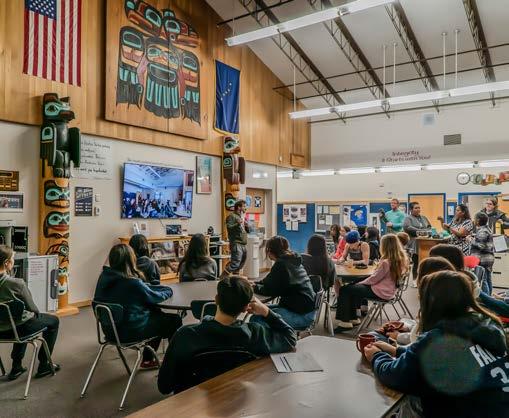
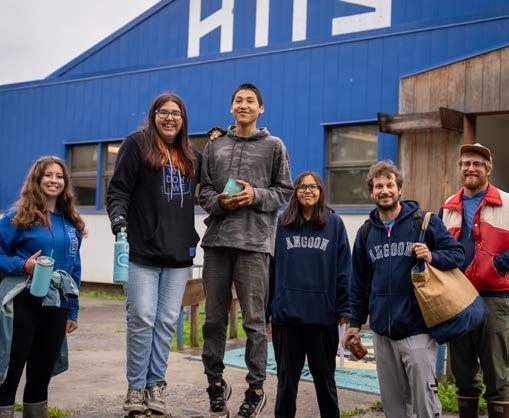
WOVEN 49
Top: Students attend career fair presentations in the high school commons. Photo: Jenny Starrs.
Bottom: Members of the local Alaska Youth Stewards crew wrapping up the 2023 summer season. Photo: Lee House
Thunderbirds. Well past midnight, the games wrapped up and the out-of-town teenagers transformed the high school gym into their dormitory. Adults fanned out to a Tribal fourplex, a wilderness lodge, a Salvation Army inn, friends’ houses, and a U.S. Forest Service bunkhouse.
The community career fair and tournament kicked off in full force the next day. Key participating organizations included Goldbelt Heritage Foundation, University of Alaska, Hecla Greens Creek Mine, Sealaska Heritage Institute, Southeast Alaska Watershed Coalition, Central Council of the Tlingit and Haida Indian Tribes of Alaska, Kootznoowoo Inc., and Southeast Alaska Regional Health Consortium. Their representatives discussed career pathways within Angoon and Southeast Alaska in education, construction, agriculture, forestry, wilderness guiding, and, of course, energy.
Good and myself, network coordinator for REAP’s Alaska Network for Energy Education and Employment, presented opportunities throughout the region and for the Thayer Creek hydropower project. It will create 30 construction jobs over the next decade, which can give residents handson experience to launch them into a host of energy careers. Electricians, heavy equipment operators and many other energy construction positions are integral to build the access road, transmission line and powerhouse for Angoon, and infrastructure investments regionwide. Then, once built, the plant will hire a full-time operator from Angoon and catalyze careers in beneficial electrification and a host of new economic opportunities.
A Community Comes Together
During an evening break in the tournament schedule, the community gathered for a potlatch. The canceled seaplanes left organizers short 30 pizzas, lending an anxious air to the final flurries of cooking. But pots and platters piled up as culture bearers drummed and community members arrived. Delicacies saved from summer’s bounty, including fish head soup and black seaweed fried rice, joined containers of fruit casserole and homemade spaghetti to feed the crowd.
Basketball players delivered plates to elders and then dug into their own meals. Elder Peter Demmert instructed me where to find the best meat on a fish head as his niece, Principal Demmert, dished out rolls from an overflowing 5-gallon pail. Organizers led a community cafe-style discussion interwoven with Lingít stories of Raven and Eagle, and Mayor Peter Duncan, dressed in his referee uniform, shared his vision for Angoon’s future. Then, as teens readied for their next game, the crowd danced together, swaying “like the kelp,” as one elder described.
The final day of the career fair brought a carnival-like atmosphere. Visitors set up tables in the high school commons while enterprising high schooler Luke Jack poured lattes and another student pressed custom tournament sweatshirts. Soon, dozens of community members and students were making the rounds, scoring swag and door prize tickets at each table. Pairs tried out heavy equipment operator simulators, parents discussed Cooperative Extension materials, and kids played with
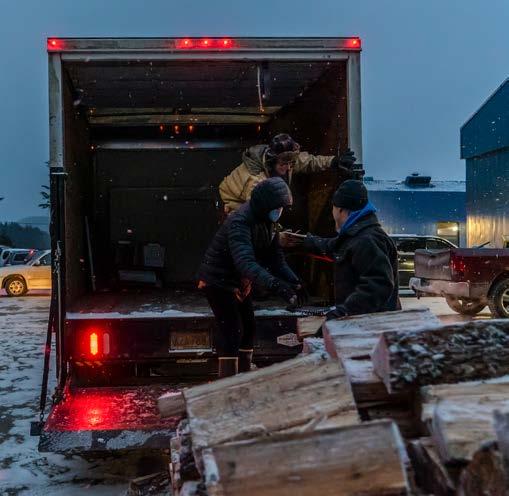
hand-crank flashlights and solar cars. Elders posted up with coffee and snacks at the heart of the fair until the basketball tournament took center stage.
With snow steadily falling and daylight fading, career fair participants pitched in with a final task for Angoon. Earlier in the season, the boys’ basketball team had split firewood as a fundraiser. Wood stoves heat many of the older homes in Angoon. They are a reprieve from high electricity and fuel prices, but only as long as a household can chop and move their own firewood — making the deliveries a lifeline for elders and their families.
Unseasonably cold weather was visiting Angoon along with the out-of-town guests, and some elders’ wood piles were exhausted. It was time to once again wooch.een. Teammates, teachers, and visitors handed off piece after piece of firewood, assembly line style. Stick by stick, foot by foot, the younger generations filled the truck bed, then drove off into the snow storm to deliver warmth and comfort to their elders. The endeavor required creativity, collaboration, and determination — just like the hydropower project, the potlatch, and the path to charting a self-determined, sustainable energy future for Angoon.
The clean energy transition will change the trajectory of rural Alaskan communities. And as long as young people are at the forefront to dream and build what their communities will look like in the decades to come, the future will be bright.
Writing and editing also contributed by Clay Good, SSP Energy Catalyst hosted by REAP.
Watch a video of the week’s festivities at bit.ly/angoonscareerfair
50 SUSTAINABLE SOUTHEAST PARTNERSHIP
Career fair leaders load firewood for distribution throughout the community. Photo: Jenny Starrs
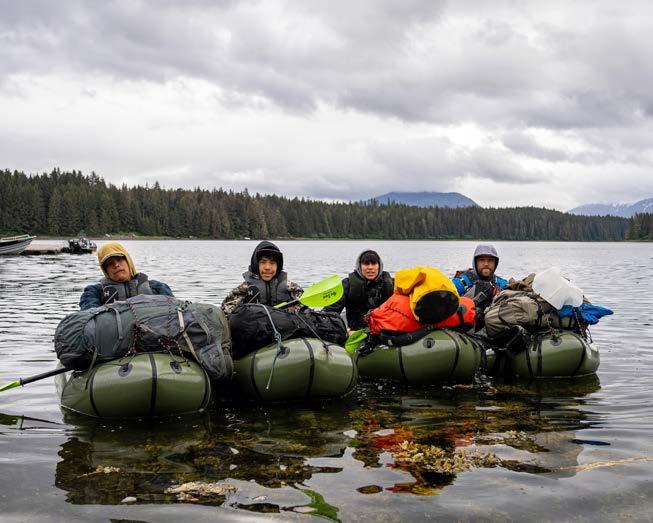
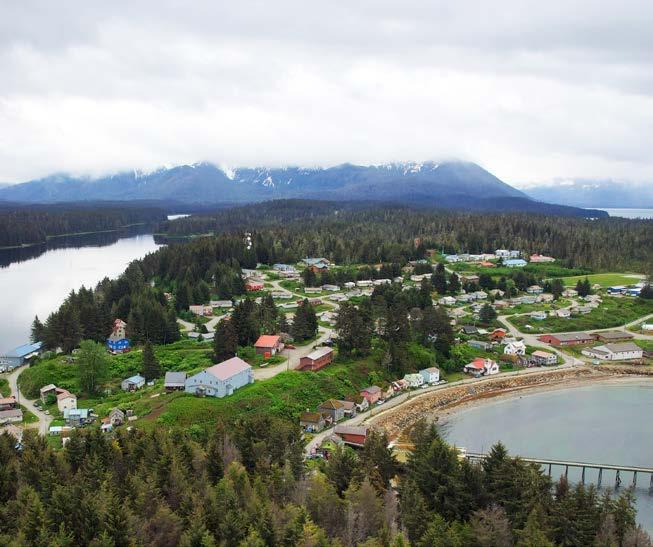
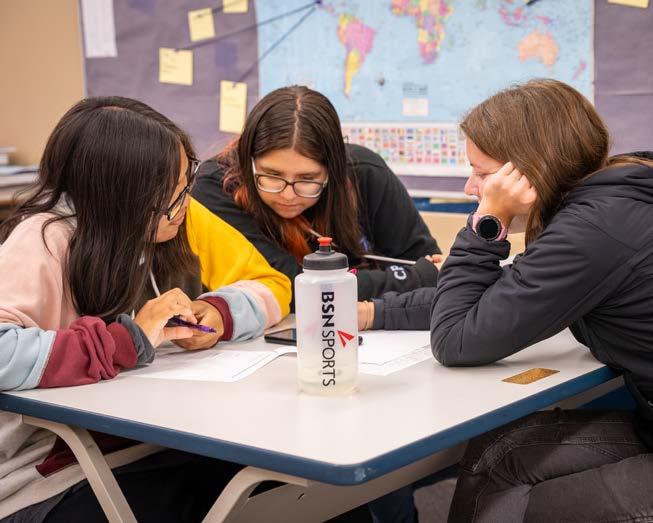
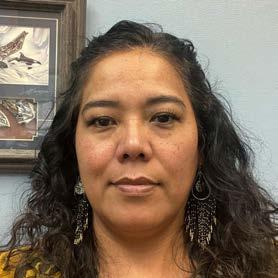 DEMMERT Angoon School Principal Chatham School District
DEMMERT Angoon School Principal Chatham School District
Career Pathways
“One of my goals for the school and for our students is to help them figure out what they want to do when they get out of high school by exposing them to as many opportunities as possible. The Angoon Career Fair is one of the ways we serve not only our students, but the whole community, by sharing about job opportunities and career pathways that are out there, what it takes to pursue those, what skills they are going to need, and what they need to do to get into positions available right here in Angoon. We can help by tailoring their education towards those career pathways, based on their interest.
Angoon is a special community because there are so many entities and partnerships working together here for the good of all the community members. By exposing students to job opportunities that are not only available, but that are important for the community, like in renewable energy or land stewardship, we hope that students can see themselves building a healthy future here beyond high school.
The recently announced $27 million federal investment into Angoon’s long sought-after hydro project is going to open doors for these students. We want them to not only be part of the construction and engineering of this project, but to be thinking creatively about what types of businesses they want to build in a community with more affordable energy: things like starting a second-hand clothing shop, running a drive-through coffee stand, or selling locally made artisan products like devil’s club salve and fireweed jelly. The future is bright in Angoon and our young people are at the cusp of innovation.”
WOVEN 51
COMMUNITY VOICE
EMMA
Above photos: Lee House
LAUNCHING THE

The stewardship of our traditional lands and waters is crucial to maintaining our Alaska Native way of life and is an expression of our sovereignty.
Tlingit & Haida’s Seacoast Indigenous Guardians Network (SIGN) is a collaborative partnership created to empower every Southeast Alaska Tribe and community with the tools and resources they need to steward and restore balance to their traditional homelands and waters in perpetuity. SIGN works to strengthen Southeast Alaska communities through the development of jobs and professional training opportunities, youth programs, outreach, and collaborative stewardship of traditional homelands and waters.
SIGN was established through an agreement between the USDA and the Central Council of the Tlingit & Haida Indian Tribes of Alaska (Tlingit & Haida) — launching publicly in 2023.
The partnership seeks to identify strategic priorities that meet the needs of Alaska Native communities who depend on marine and terrestrial resources for food security, health, and sustainable economies.
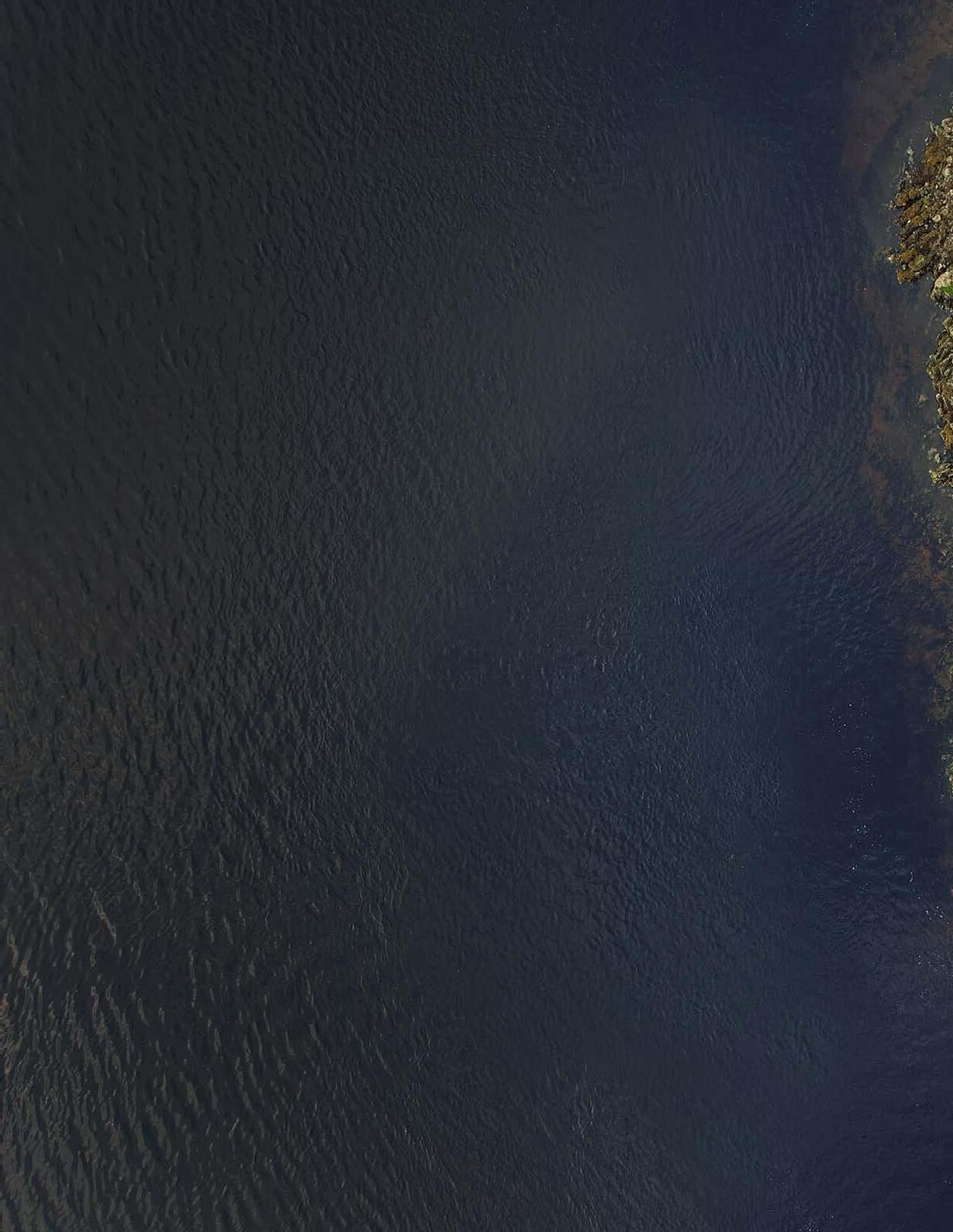
The Indigenous Peoples of Southeast Alaska have long served as stewards and guardians of their homelands and waters. Through the preservation and continuation of profound knowledge systems and sustainable practices, Alaska Native communities have worked for over ten thousand years to ensure traditional lands and waters thrive and continue to maintain the well-being of their people. Colonization restricted Indigenous management practices and rights. SIGN was developed to support and strengthen the self-determination of Alaska Native communities with its primary mission being the incorporation of Indigenous place-based knowledge (referenced to academically as Traditional Ecological Knowledge) into the monitoring, protection, restoration, and management of cherished territories.
SIGN is a collaborative effort between Tribal governments, Federal government agencies, Alaska Native corporations, and environmental Non-government organizations (NGOs).
“We are the first stewards and conservationists of these lands and waters. By collaborating with Tribes and communities, we can make significant progress toward our shared goals of environmental stewardship, community sustainability and cultural preservation.”
—Tlingit & Haida President Richard Chalyee Éesh Peterson
52

GROWING IN 2024
Since launching in 2023, SIGN has formalized agreements with more than five community partners with more on the way. Partners are identifying support systems and unique approaches that are tailored to each community. In the year ahead, SIGN is working to expand its beach cleanup program, launch a data collection network to promote Tribal data sovereignty, create educational materials on cultural practices, support a growing network of Indigenous Guardian positions and more.
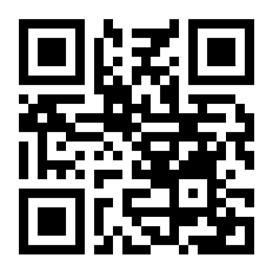
To learn more visit seacoastign.org
WOVEN 53
Celebrating & Supporting Southeast Alaska’s Growing Arts Economy
WRITTEN BY: SHAELENE GRACE MOLER
Our beautiful region is, perhaps unsurprisingly, full of artists. In 2014, Southeast Conference reported that artists are 2.6 times more prevalent in Southeast Alaska than the rest of the United States as a whole. At the time of the study, there were over 2,300 full-time and part-time artists with earnings of $29.9 million–nearly twice the size of the regional timber industry, marking a shift in cultural economic priority.
In 2021, the U.S. Bureau of Economic Analysis reported the arts and culture sector contributed just under $1.38 billion and 11,180 jobs to Alaska’s overall economy — a 13% growth in revenue and 5% growth in jobs in a single year.
Despite our burgeoning creative economy, the arts are often cast off as non-lucrative disciplines to young professionals making critical decisions about their lives and careers. The threat of the ‘starving artist’ continues to pass on generationally and economic contributions of the arts sector are often overshadowed by political focus on tourism, fisheries, and other economic sectors.
Yet, in Southeast Alaska, art has been an honored pathway for thousands and thousands of years. This region is rich with creative potential with our access to unique natural resources and strong cultural identity. Although making a living in the arts does not come without its challenges including market competition, resource management and regulations, housing and more.
Individuals and organizations like Spruce Root, a community development financial institution, Sealaska Heritage Institute, Tribal governments, local schools and universities, culture bearers, and more — are stepping up to the challenge with educational opportunities, resources and cultural preservation efforts.
What is the Arts Economy?
Today, art in Southeast includes traditional mediums like painting, carving, weaving, beading, drawing, and sculpture

 Photo: Lee House
Photo: Lee House
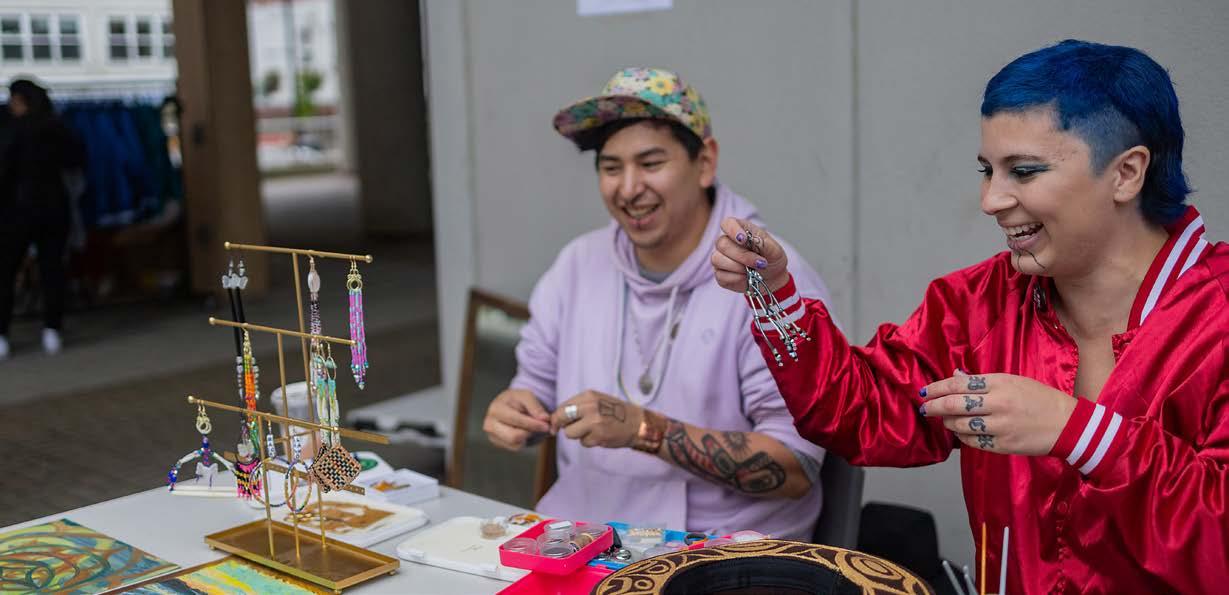
as well as other creative industries like photography, graphic arts, music, writing, film, and playwriting. When it comes to understanding the full scope of the arts economy, people often focus on the role of independent artists in teaching, freelancing, and selling, but overlook opportunities in arts organizations and beyond. Southeast Alaska is home to a rich array of art institutions including nonprofits, museums, art galleries, and schools.
In 2022, nonprofit arts and culture organizations and their audiences nationally generated a total of $151.7 billion in economic activity with $73.3 billion in spending by the organizations on events. In Southeast, that includes everything from artist markets like those that Sealaska hosts to Aak'w Rock an Indigenous music festival presented by Tlingit & Haida Indian Tribes of Alaska and the Juneau Arts & Humanities Council.
Even our own partnership, the Sustainable Southeast Partnership, which is a regional collective impact network, has a robust team of creatives that work in journalism, photography, graphic design, videography, and more. SSP is one of many institutions that offer communications internships through Sealaska, an Alaska Native corporation, with more than 20% of Sealaska’s internships being communications focused. Currently, the Department of Labor is predicting a 4% growth in the communications field through 2028, and Tribal entities, nonprofit organizations, for profit companies and more throughout Southeast Alaska are seeking professional communications employees.
The arts economy is broad and also extends to opportunities in the visitor sector, public art (think the new Kootéeyaa Deiyí Totem trail in Juneau), and more.
What Challenges are Facing Southeast Alaskan Artists?
Southeast Alaska boasts globally unique natural resources, such as our ancient cedar trees, spruce roots, sea otters, and more. When combined with our unique cultural ingenuity, our region boasts a globally revered and sophisticated arts legacy. A leader in Northwest Coast Arts, Southeast Alaska is uniquely positioned to support artists. However, local artists, especially those early in their career are still facing challenges.
Charles Skultka, Jr. is a Haida educator at Sitka High School who has been teaching traditional arts, culture, and technology classes for many years. Today, the Pacific Northwest Coast design classes he leads are supported by Sitka Native Education Program and Sealaska Heritage Institute. Skultka, Jr., being someone who integrates art in many spaces, has always seen career potential in the arts.
“There’s a definite career pathway to being an Indigenous artist. When you travel Southeast, you can tell there’s a tourist boom going on and somebody needs to supply these visitors with original artwork. There’s absolutely no reason that we’re not training these kids and building that workforce now,” says Skultka, Jr. “There’s all kinds of opportunities right now to enter the workforce through becoming an educator, becoming a graphic designer and more. Jobs that we’d like to see filled by local Alaska Natives instead of bringing people in from outside — it just makes sense to create opportunities for kids to stay in their hometowns and make a living wage.”
When asked what the challenges are for young people pursuing the arts, Skulkta, Jr. reminds us that the
WOVEN 55
The term ‘arts’ can apply to traditional methods of artistry like painting and weaving, all the way to play writing, music, illustration, and graphic design. Spruce Root, Sealaska Heritage Institute, Sealaska, and Oweesta partnered on a market for Indigenous vendors at the Sealaska Plaza in downtown Juneau. Photo: Kaa Yahaayí Shkalneegi Muriel Reid
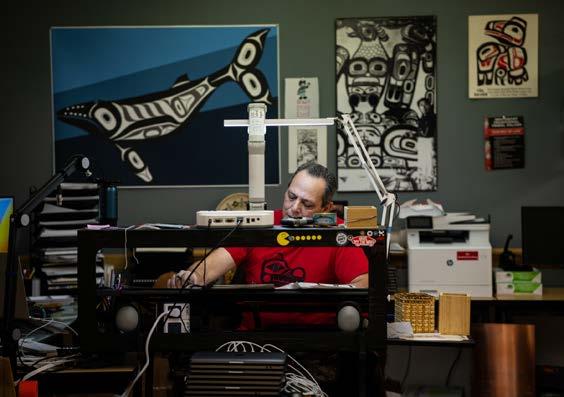
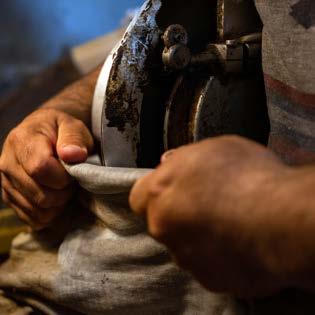
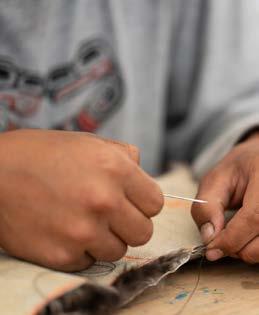
impediments to young artists are holistic regional challenges faced by nearly every industry.
“Oh, man, our biggest challenge right now is affordable housing — local affordable housing and a living wage. Somehow we have to employ these kids or give them a kickstart so they can afford to produce art in the first place.” Real estate and property in Alaska is limited and expensive and creates additional barriers for artists looking to afford retail space.
In a Business Basics for Artists class hosted by Spruce Root and Chilkoot Indian Association in Haines, participants talked about the values of a triple-bottom line business model and the challenges that artists in our region face. From beadwork, to carving, to fur sewing, many types of artists were represented in this space.
“With a triple-bottom line business model you also measure environmental and community impact — is this business making a profit while also providing jobs, providing intergenerational connections, providing a space to gather, and providing education?” Marc Wheeler, Spruce Root Program Manager of Technical Assistance, explains. The arts are a perfect example of businesses that give back to communities culturally, educationally, and economically by supporting local supply chains and embracing creative and cultural work by the people who live there. Supporting the
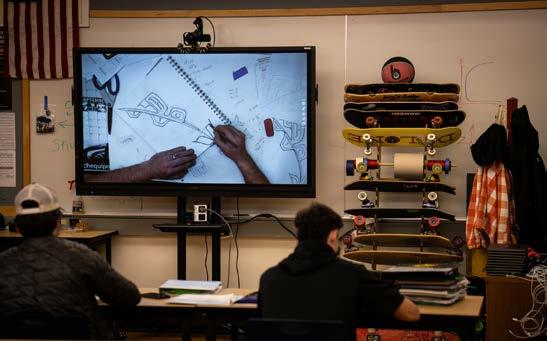
arts can in turn, support community well-being and the unique quality of life that keeps many of us here.
Of the challenges discussed, there was heavy emphasis on outsider art falsely marketed as “Authentic Alaskan” art and long standing appropriation by seasonal tour companies competing with authentic Alaska-made businesses. In mid2023 Congress proposed amendments to the Indian Arts and Crafts Act— a truth-in advertising law that prohibits misrepresentation in the marketing of Native art and craft products within the United States.
The most problematic of the draft revisions aimed to expand the definition of ‘Indian Product’ to allow for nonNative labor in certain situations. Products made by nonNative labor can then use a new trademark to certify that an item is an authentic Native Product, even if it is created by a non-Native person, simply because it is a Native design — competing directly with Alaskan Native Artists in an already challenging market. This change would allow for mass production of “authentic” Native art at a lower price point saturating the market for small businesses. During the Business Basics class in Haines, artists shared fears that implementation of this amendment could make it even harder for Alaska Natives to sell their work for a reasonable price.
Additional challenges discussed included selling beyond their local community, managing inventory, and meeting demand fast enough, especially considering resource scarcity with existing policies on managing resources. For example, the Marine Mammals Protection Act limits the harvest and processing of sea otter hides exclusively to Indigenous people whose blood quantum is 25% or more. Indigenous identity — being complex as it is — is often primarily determined by a person’s social and political connections within the Indigenous community with a traced lineage and should not be reduced to a person’s blood quantum. The blood quantum requirement in harvesting and processing sea otters prohibits an increasing
56 SUSTAINABLE SOUTHEAST PARTNERSHIP
Left & Below: Charles Skultka, Jr. teaches formline design during a Sitka High class supported by Sitka Native Education Program and Sealaska Heritage Institute. Skultka, Jr. believes that integrating culture and place-based education into high school class is integral for “growing good humans" in Southeast Alaska. Photo: Bethany Sonsini Goodrich, Sealaska Heritage Institute
Above: Scott Jackson of Rocky Pass Tannery in Kake, teaches local youth how to tan and sew marine mammal hides. Photos: Lee House, Bethany Sonsini Goodrich
“I think all people should support the arts because it’s the one thing that brings everything together– people, communities, regions. It connects us to each other and to place. Art isn
ʼ
t just something that you hang on the wall, there’s all kinds of living forms with dance and music— without art, culture and society would be pretty dull.”
— Charlie Skultka, Jr., Educator, Sitka High School
community of Indigenous people from using sea otter fur in their crafts and traditions until it is considered a “significantly altered product.”
Lastly, Indigenous artists across the region share concerns for the decreasing availability of large old growth cedar trees that are essential for carving canoes and totem poles alike. This makes growth in cultural revitalization a challenge.
Existing Opportunities
There are many efforts in the region to address these challenges and provide better access to arts education by Sealaska, Sealaska Heritage Institute, and other SSP partners. Additionally, the USDA Forest Service, Community Forest Partnerships, the Alaska Youth Stewards programs are working to better integrate cedar tree inventory and long term management into the Tongass Forest Plan Revision– a process individuals and artists can take part in over the next few years (page 47). As part of the Southeast Alaska Sustainability Strategy, cultural-use wood is a priority, with staff identifying and cataloging trees to set aside for carving projects — to ensure generations of carvers and weavers have access.
“I believe that tree management is of paramount importance for the future of Indigenous culture and arts to continue into the time of the 7th generation of our grandchildren to enjoy the world of creativity with old growth timber — whose days seem to be numbered at the present pace of deforestation,” says Master Lingít Carver Wayne Price. Price is a teacher and a nationally renowned carver focusing on healing canoes and totems dedicated to Indigenous people lost to substance abuse. He has been a major advocate for protecting the “standtalls,” the massive red cedar trees that are needed to carve totem poles, canoes, and other cultural art pieces. His work as an advocate has been an inspiration to the SSP.

The arts are also greatly supported by many organizations: nonprofit and for-profit alike. The Box of Treasures Program is a partnership between Sealaska Heritage Institute (SHI), University of Alaska Southeast (UAS), and partner communities in Klawock, Sitka and Juneau, that teaches Northwest Coast (NWC) art with Lingít, Haida, and Tsimshian experts. This program offers dual-credit options to further develop NWC Arts Career Pathways for high school students.
SHI and UAS have also developed an Associate of Art degree with an emphasis on NWC arts. This undergraduate program offered in Juneau, Ketchikan, and Sitka offers a wide variety of classes including tool making, basketry, formline design, carving, weaving, and more. Partners are working to establish a four-year degree track through UAS and the Institute of American Indian Arts in Santa Fe, New Mexico in NWC arts.
SHI’s vision includes training new Indigenous artists, teaching more NWC art in schools, expanding the art market, integrating more Indigenous art in public spaces, and designating Indigenous art as an official National Treasure with the National Trust for Historic Preservation. Beyond SHI’s direct offerings, there are community efforts throughout the region to deliver classes in the arts such as the Rocky Pass Tannery in Kake which teaches fur sewing and tanning while supplying local artists with furs. Classes like these are often funded by Sealaska Heritage Institute, Tlingit & Haida, and local Tribal entities throughout the region.
These programs better equip artists and school teachers of NWC arts to discuss creative career pathways with youth across our communities. Skultka, Jr., who spent over 19 years working with countless youth in the arts, sees opportunities in growing impact. “Place-based learning and culture combined in the classroom, just helps grow better humans. We get to instill our cultural values and enhance our art and culture regionally. I usually focus
WOVEN 57
Master Carver and teacher, Wayne Price has concerns over the sustainability of massive cedar trees on the Tongass. Pictured here with past student Andrea Cook. Photo: Bethany Sonsini Goodrich
on working with students but lately I’ve been really toying with the idea of starting to educate educators just to make a bigger impact,” says Skultka, Jr.
Currently, Spruce Root is working to support the Sealaska Heritage Institute’s summer arts camp, facilitating networking opportunities between youth and professional Southeast Alaskan artists. Together, SHI and Spruce Root help young Southeast Alaskans better recognize the value of creativity and show how they can build a career in the arts by connecting them with working artists, visiting Indigenous public art installations, and through workreadiness and soft skills training.
At the Spruce Root Business Basics for Artists class in Haines, Lingít artist Skweit Jessie Morgan, emphasized the importance of supporting art that reflects the communities and cultures of this region, “There’s a lot of monuments in town that I just don’t connect to, that don’t resonate with what I grew up with — the knowledge that comes from attending potlatches or just being in community. There’s people out there making artwork that are a reflection of us, that are in these spaces and are spending time in our community giving back.” With 1% of public project funding going to art, these communities with their complex histories and cultures would be best served by integrating public art that prioritizes local artists and reflects the people of this place. This is a growing opportunity in Southeast Alaska.
In 2024, in addition to financing and one-on-one business coaching, Spruce Root also plans to offer two virtual business basics for artists classes in collaboration with Sealaska Heritage Institute. Marc Wheeler shares, “We want to build a community of artists first and foremost.
During workshops, artists connect across communities and get to know each other on a personal level, providing secrets and much needed support for one another.”
More than an Economic Booster
The arts are key in fostering and maintaining our connections with one another and our home region. Traditional art practices are important in transferring knowledge and history, developing relationships across generations through mentorship and education, are a primary attraction in the tourism industry, and provide a fulfilling career pathway that can either become a person’s main career or supplement their income. In Southeast Alaskan communities where Alaska Native art is the dominant art form, art provides an important income stream for many Alaskan Natives.
Art, in many ways, serves as a reflection of who we are and where we come from. It can cultivate community pride while teaching many important values in life such as patience, limitations, healthy processing, healing, emotional regulation, and more while providing fulfilling careers for Southeast Alaskans. When we support the arts, we are investing in both economic and community well-being.
“I think all people should support the arts because it’s the one thing that brings everything together — people, communities, regions. It connects us to each other and to place. Art isn’t just something that you hang on the wall, there’s all kinds of living forms with dance and music,” says Skultka, Jr. who believes art makes life more vivid. “At the end of the day, without it, culture and society would be pretty dull.”
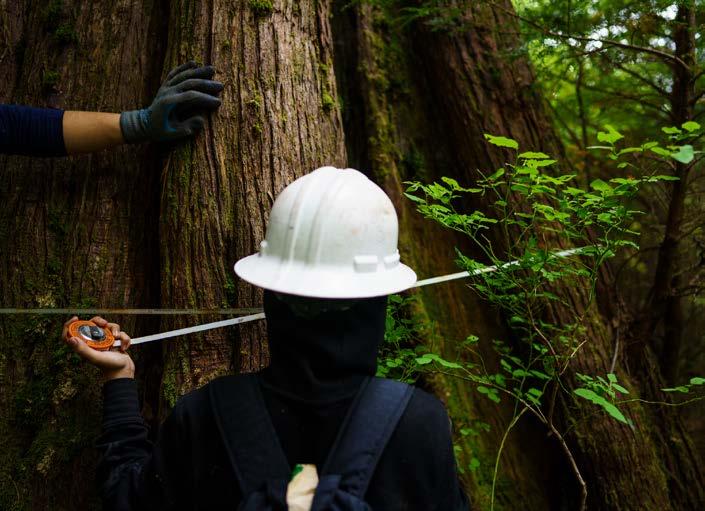
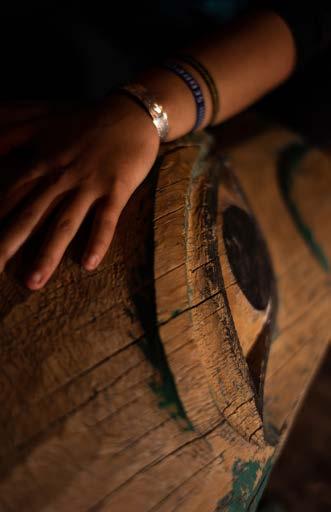
58 SUSTAINABLE SOUTHEAST PARTNERSHIP
The Alaska Youth Stewards crew on Prince of Wales learn about, search for, and inventory red cedars that meet the stringent requirements for canoes and totem poles.
Photos: Bethany Sonsini Goodrich
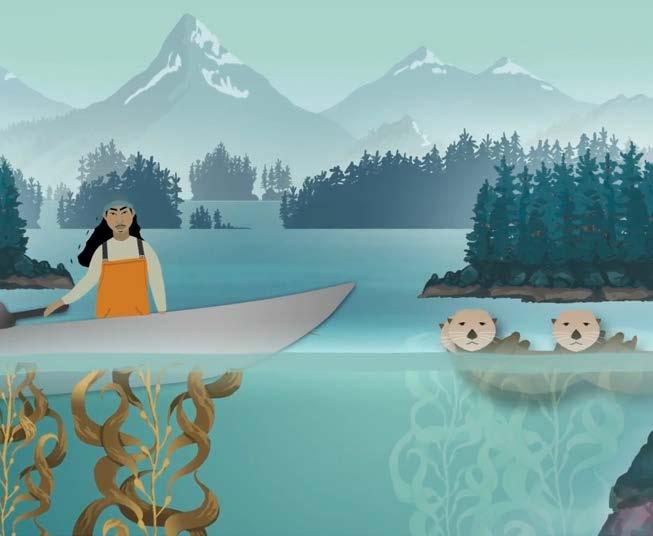
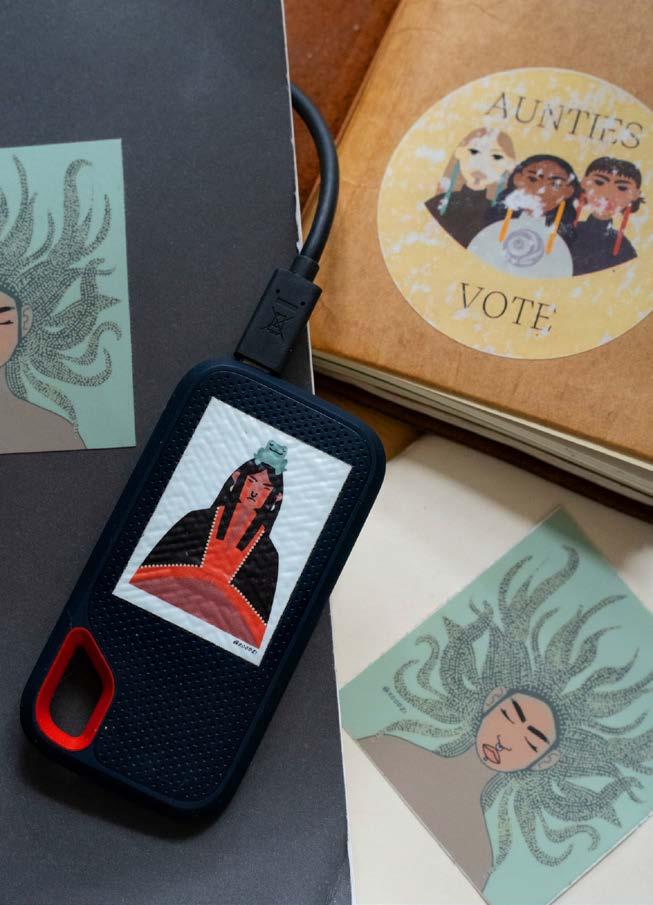
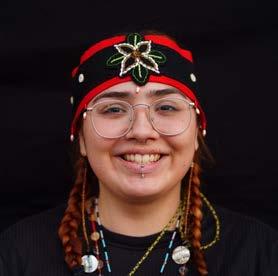
More Than a Side-hustle
It’s hard to live in Southeast Alaska and not feel inspired to create.
My Lingít name is Kushxeet from the X'aaká Hít Kiks.ádi (Point House, Raven/Frog clan). I am a born-and-raised Sitkan, first-generation college graduate, and multimedia artist. My first internship was with Sitka Conservation Society and the SSP. Today, I work with the Sitka Tribe of Alaska’s Resource Protection Department as the Kayaaní Commission Coordinator. Kayaaní is Lingít for “plants”, and the Kayaaní Commission is a group of local enthusiasts and culture bearers who strive to protect our traditional plants and their teachings.
I also run a small business called Xoodzí which means “falling star” in Lingít. The art I create has been essential in reconnecting to my culture, finding my identity, and creating pieces that resonate with others — ultimately building community. Since I first learned how to bead I have never stopped making jewelry. I am also a digital artist and many of my works feature strong feminine energy and Lingít imagery with a contemporary feel (page 41).
When you buy authentic Native art and avoid appropriative mass produced pieces, you are paying for quality, culture, and that deep connection to a place which is becoming increasingly difficult to afford to live in. It is tragic to think that these art forms could become threatened simply because it is too expensive to continue to learn and live here.
I have never viewed other artists as competition, because these traditions that we practice are so deeply rooted, and everyone brings different skills to the table. We support each other. I am so grateful to the Tribes and Native corporations that put so much emphasis on teaching and supporting local artists. Through their programming I have been able to learn weaving, skin sewing, and now carving, which has not only grown my abilities, but also pride in my heritage.
WOVEN 59
KUSHXEET SIENNA REID
Artist (@xoodzi)
COMMUNITY VOICE
Sheet´ká Sitka
Kushxeet Sienna collaborated with scientist Taylor White and animator Jessica Kendall-Bar on “Other Ways of Knowing” — a project integrating traditional knowledge with research on sea otter and abalone ecosystem dynamics in Sitka Sound. Combining art, culture, and science communication has been a dream for Sienna.
The Seacoast Trust Generational Abundance
By centering Indigenous values and self-determination, the Seacoast Trust represents an innovative and long overdue shift in conservation finance that has tremendous potential to drive systemic change benefiting both people and nature in Southeast Alaska.
The investments of Seacoast Trust, guided by Spruce Root's fully Indigenous committee of investment experts and community leaders, are grounded in and aligned with Indigenous values. Annual earnings will fund a different kind of
conservation: One that understands people and communities are inseparable components of a healthy environment. That thriving rivers and forests require mechanisms that shift power and resources to the people living in the region.
The Seacoast Trust will, in perpetuity, reduce barriers to the communities of Southeast Alaska in achieving their goals for the future amid the life-sustaining health of the lands and waters that now, more than ever, call for our shared efforts.
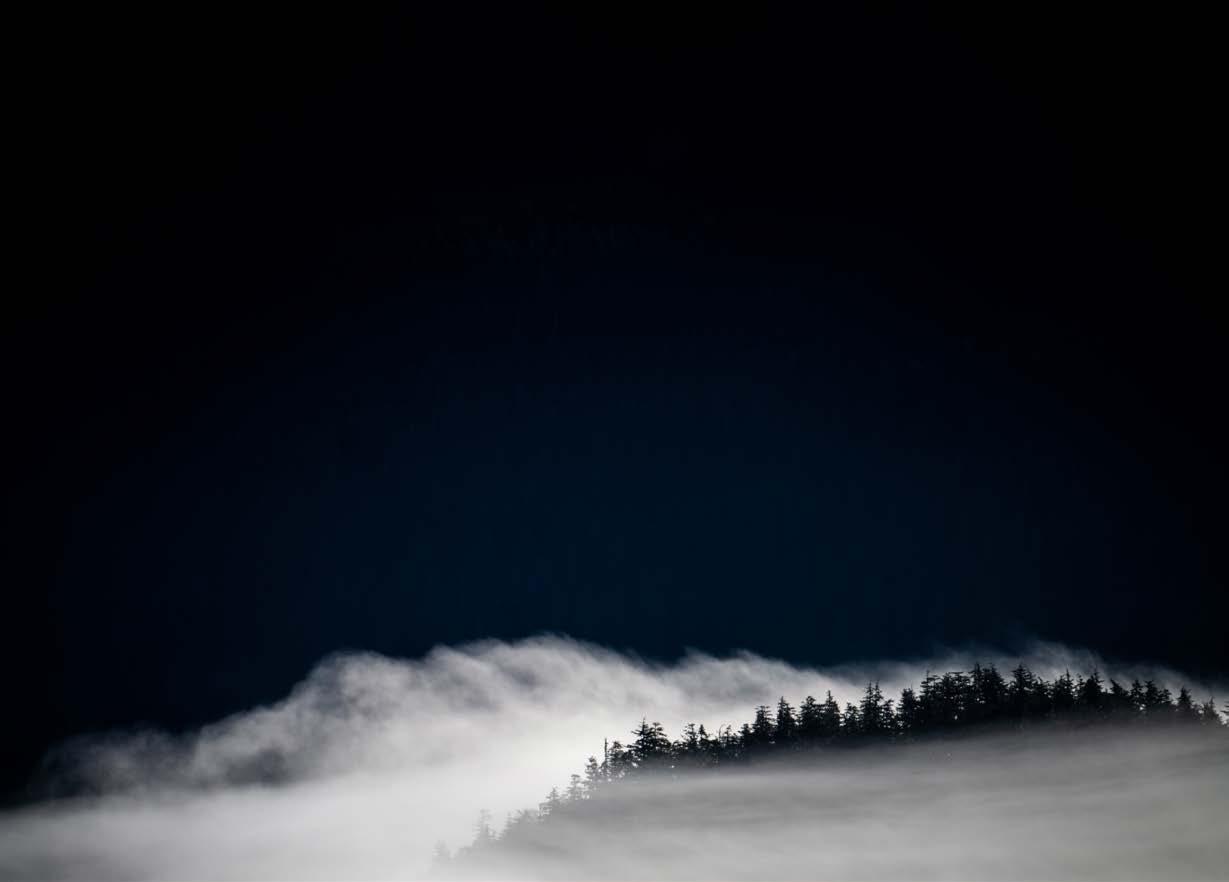
Guiding Principles
Respect community voices and uphold Indigenous governance and leadership
Envision the next 100 years by planning with the next generation
Balance economic, social, and environmental well-being
Collaborate with empathy, generosity, and purpose
Value the integrity of all knowledge systems, including those anchored in 10,000-plus years of Indigenous history, traditions, and stewardship
With Gratitude to Our Investors & Partners
The Seacoast Trust began with a challenge from Sealaska, the regional Alaska Native corporation, to conservation funders to match a pledge of $10M. The Nature Conservancy stepped up with $8M. Since this historical collaboration, additional partners and individuals have pledged their support, including Rasmuson Foundation ($1M), Edgerton Foundation ($1M), William and Flora Hewlett Foundation ($700K), Wilburforce Foundation ($250K), and Chorus Foundation ($100K). Gunalchéesh (thank you), to our partners. We are excited to announce that Seacoast Trust has received $1M from an Indigenous stewardship fund that is launching later this year.

Scan to learn more, or visit seacoasttrust.org
60 SUSTAINABLE SOUTHEAST PARTNERSHIP
$100M Long-term goal
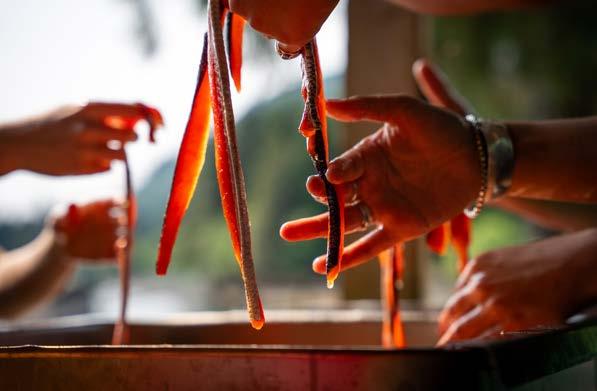
As of January 22, 2024, the Seacoast Trust’s market value was $23.1M. We are now working toward our next goal of $65M to fund the estimated $3.2M SSP annual budget in 2025. Our long-term goal is to reach a fully-funded Seacoast Trust of $100M.
A fully-funded Seacoast Trust would mean:
• Community Forest Partnerships in every community that bring landowners together to create whole-system management plans and restoration projects that elevate Indigenous knowledge
• Healthy salmon habitat region wide to support food sovereignty, traditional lifeways, and robust economies
• Indigenous Guardians programs with every Tribe that center Indigenous stewardship values and provide valuable local employment
• Youth leadership opportunities to empower future generations
• Food sovereignty initiatives that help communities grow, harvest, fish, hunt, share, and sell more local foods
• Strong, local, regenerative economies through workforce development, sustainable jobs, support for small businesses, and access to capital
• Reduced energy prices and lower carbon footprints through renewable energy initiatives
• Maximum climate mitigation potential of the temperate rainforest
• Decreased conflict among stakeholders and a model for other regions locked in disputes over conservation versus economic development
• A framework for healing and reconciliation
• Demonstrating what’s possible when local communities are empowered to pursue their own well-being
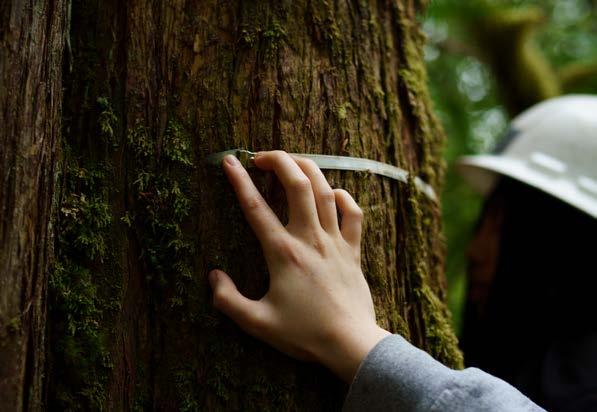
“In one hundred years, we will know we’ve succeeded when our forests are intact, Indigenous communities and cultures continue to thrive, and Indigenous peoples around the world are leading stewardship of their homelands as they have since time immemorial. Ch' u tleix áwé kugaagastee (it will be so, forever).”
— Crystal Yankawgé Nelson Equitable Conservation Project Manager, The Nature Conservancy, SSP Steering Committee
WOVEN 61
$65M
$23.1M Current value
2025 goal Our Funding Goal
In gratitude to the following SSP Catalysts and their partner organizations:
Marina Anderson
SSP Program Director Spruce Root
Shannon Stevens
SSP Deputy Director Spruce Root
Wooshkeeká Brooke Leslie
Regional Rural Economic Development Catalyst Spruce Root
Michael Mausbach
Regional Workforce Development Catalyst Spruce Root
S eiltín Kaylah Duncan
Regional Communications Catalyst Spruce Root
Annika Ord
Regional Climate Adaptation Catalyst University of Alaska Fairbanks
Clay Good
Regional Energy Catalyst
Renewable Energy Alaska Project
Jennifer Nu
Regional Food Sustainability Catalyst Ecotrust
Heather Douville
Regional Seacoast Indigenous Guardians Network Catalyst Tlingit & Haida
Jamiann S´eiltín Hasselquist
Regional Healing Catalyst
Haa Tóoch Lichéesh Coalition
Keolani Booth
Regional Mariculture Catalyst Ecotrust
Bob Christensen
Regional Community Forestry Catalyst
The Nature Conservancy
Bethany Goodrich
Regional Storytelling Catalyst Sitka Conservation Society
Gabrielle Sjoberg
Regional Youth Stewardship Catalyst Tlingit & Haida
Carmen Davis
Angoon Community Catalyst Kootznoowoo Inc.
Katrina Hotch
Chilkat Valley Community Catalyst
Jilkaat Kwaan Heritage Center
Quinn Aboudara
Craig Community Catalyst Shaan Seet Inc.
Ian Johnson
Hoonah Community Catalyst Hoonah Indian Association
Hank Copsey
Kake Community Catalyst
Organized Village of Kake
Chandler O'Connell
Sitka Community Catalyst Sitka Conservation Society
Jake Watson
Skagway Community Catalyst Skagway Development Corporation
We'd also like to thank and acknowledge the contributions of the following catalysts who transitioned out of their positions in the past year: Garrett Jack (Angoon), Eliza Russell (Skagway), Dr. Tiff Stephens (Mariculture), Crystal Nelson (Healing), and Góos'k' Ralph Wolfe (Seacoast Indigenous Guardians Network).
Learn more about our Catalysts!
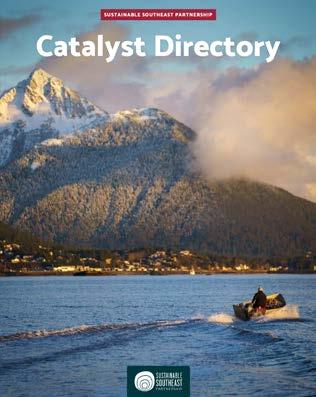
Visit: sustainablesoutheast.net/catalysts
62 SUSTAINABLE SOUTHEAST PARTNERSHIP
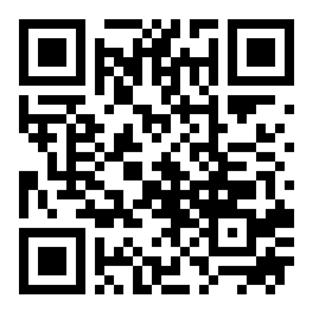
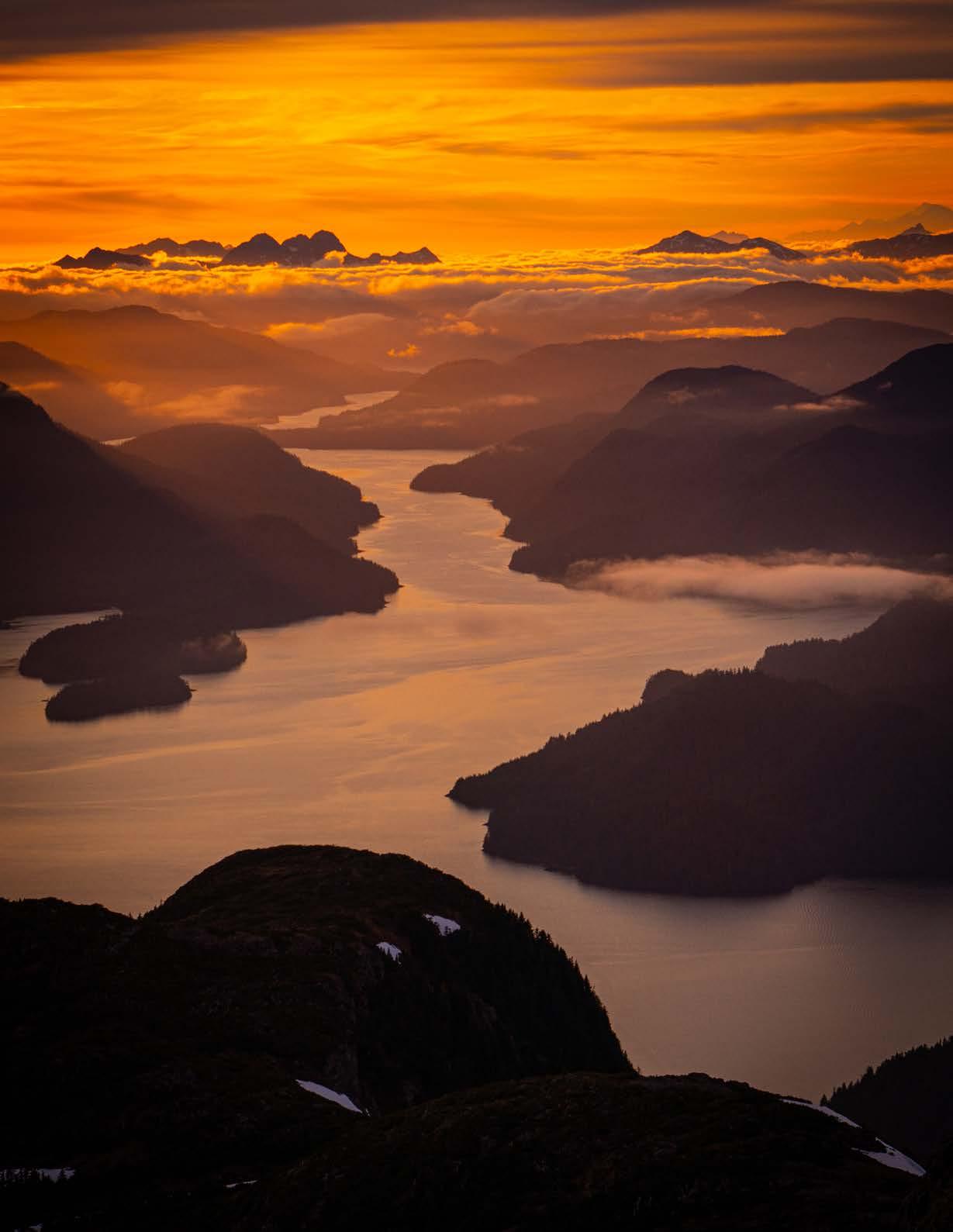
Contribute to the impact of the Sustainable Southeast Partnership by making a donation to the Seacoast Trust at seacoasttrust.org. Your support empowers us to ensure that each generation thrives on healthy lands and waters.
ENGAGE
WITH US Visit our website to stay up-to-date with announcements and opportunities happening across the region, our monthly stories, and information about our virtual hangouts.
Visit our site sustainablesoutheast.net Follow us on Instagram, Facebook & LinkedIn @sustainablesoutheast
Looking Forward
2024 is the year when many of our dreams of being a model of leading change through Indigenous world views will come to fruition.
This year, we are welcoming new Catalyst positions that are more integrated into our framework than ever. New positions are created by agreements between local community partners. The Catalysts are starting with a more established direction of work because we are at a point where our communities’ knowledge of what is needed and what needs to be done, is uplifted by the relationships and support offered through the myriad of network partners of the SSP.
This is a critical time in Alaska for Mariculture — kelp, seaweed, and shellfish cultivation. Our new Mariculture Catalyst will be a liaison for the region to engage with a growing statewide industry. It’s early and the toughest and most exciting time to be involved because it’s the first movers, researchers, and innovators trying to solve the toughest problems. It’s an uncomfortable time with substantial money being invested and yet so many unanswered questions of how this will impact our villages and environment. This creates tension between those concerns and exciting potential for growth. We cannot let this industry take off without it being built in a way that’s best for our communities, our culture, and our unique way of life. And yet, we believe there is a good way it can be done to both capitalize on the opportunity but not at the expense of our collective well-being. Our partners will push to ensure resources are being distributed equitably and that information is accessible all along the way to those who are interested in supporting, or cautious of, mariculture.
Everything we do as a Partnership touches climate change- whether it’s food security, renewable energy, or economic development. However, we have not had one central strategy around climate change, adaptation, and mitigation. By bringing on a dedicated Catalyst hosted with the University of Alaska, who wakes up thinking about climate work every single day, we know it will lead to new projects, new strategies, and new approaches that we haven’t been thinking of.
We are working with Central Council of the Tlingit and Haida Indian Tribes of Alaska (Tlingit & Haida) to host a Fisheries Catalyst to not only address concerns over the health of populations but also support the return of permits to rural and Indigenous hands while helping influence and direct policies that impact the health of regional fisheries. This position pulls in the resources and expertise of so many great partners doing work in this area.
The Seacoast Indigenous Guardians Network which has involved the labor and love of so many partners within the SSP, is really picking up speed with Tlingit & Haida’s direction and leadership. Five communities have signed on as partners, with more on the way!
More than 40 individuals from across the region representing different disciplines, economic sectors, organizations, ages and perspectives, are participating in a Transformative Scenarios process to identify likely futures for our region. The process and results will help every interested Southeast Alaskan, municipality, or organization better reflect not on what someone wants or hopes to have happen, but what are likely scenarios and where are the points of intervention we can concentrate efforts in advance to improve outcomes for our communities. The Scenarios workshops not only create a useful planning tool but the process itself builds relationships and understanding while bringing all these different people together, pulling them out of a reactive, defensive mode, and shifting the conversation toward an analytic, logic-model process, with creative ideation, to develop proactive strategies. This approach, developed by the REOS group, has been applied successfully across the globe in all sorts of powerful ways including healing from apartheid in South Africa and addressing bushfires in Australia. We are excited to launch it here.
Finally, since the inception of the Sustainable Southeast Partnership, Partners knew that influencing how the USDA Forest Service manages the 17 million acres that surround all of our communities would be critical to our work. The Tongass is not only our physical home, but the lands and waters that sustain our economies, feed our families, captivate our curiosity, provide wood that heats our home or that is the foundation of our canoes and totem poles. They are the homelands of the Lingít, Haida, and Tsimshian people. The forests capture carbon and nourish salmon populations. How the Tongass

64 SUSTAINABLE SOUTHEAST PARTNERSHIP
...
is managed absolutely matters to all Southeast Alaskans and touches every element of our work. To this end, Partners have worked for decades to shift the way the federal government works here to better reflect the unique needs and priorities of Southeast Alaskans. We’ve done this through modeling what collaborative land management can look like in our Community Forest Partnerships. We’ve developed community-centered workforce development strategies through the Alaska Youth Stewards program. Our Partners have not only been recipients of many of the 25 million dollar Southeast Sustainability Strategy investments, but have also helped realize those initiatives by acting as Regional Strengthening Partners disseminating funds and supporting the work on the ground.
In 2024, Spruce Root was invited by the USDA Forest Service to help roll out the Tongass National Forest Plan Revision process. This plan matters. It influences the trajectory and priorities of this federal agency whose decisions affect us all. We are working through SSP to make the process of gathering meaningful public and tribal input more accessible and just than ever. Because, what’s traditionally lacking between the federal government and specifically rural America and Indigenous communities is trust. No one knows exactly how to solve that and what we're doing isn't necessarily going to fix that mistrust, but we're not veering away from that tension, we’re facing it. Building relationships one by one between the USDA and our region means there might not be trust between all the powers, but you can actually start to achieve positive outcomes together.
Underpinning all of this growth are Indigenous values and Indigenous leadership. Every partner and resident of this region is not Indigenous to Southeast Alaska. But every person can empower and embody values that come from the people who've been
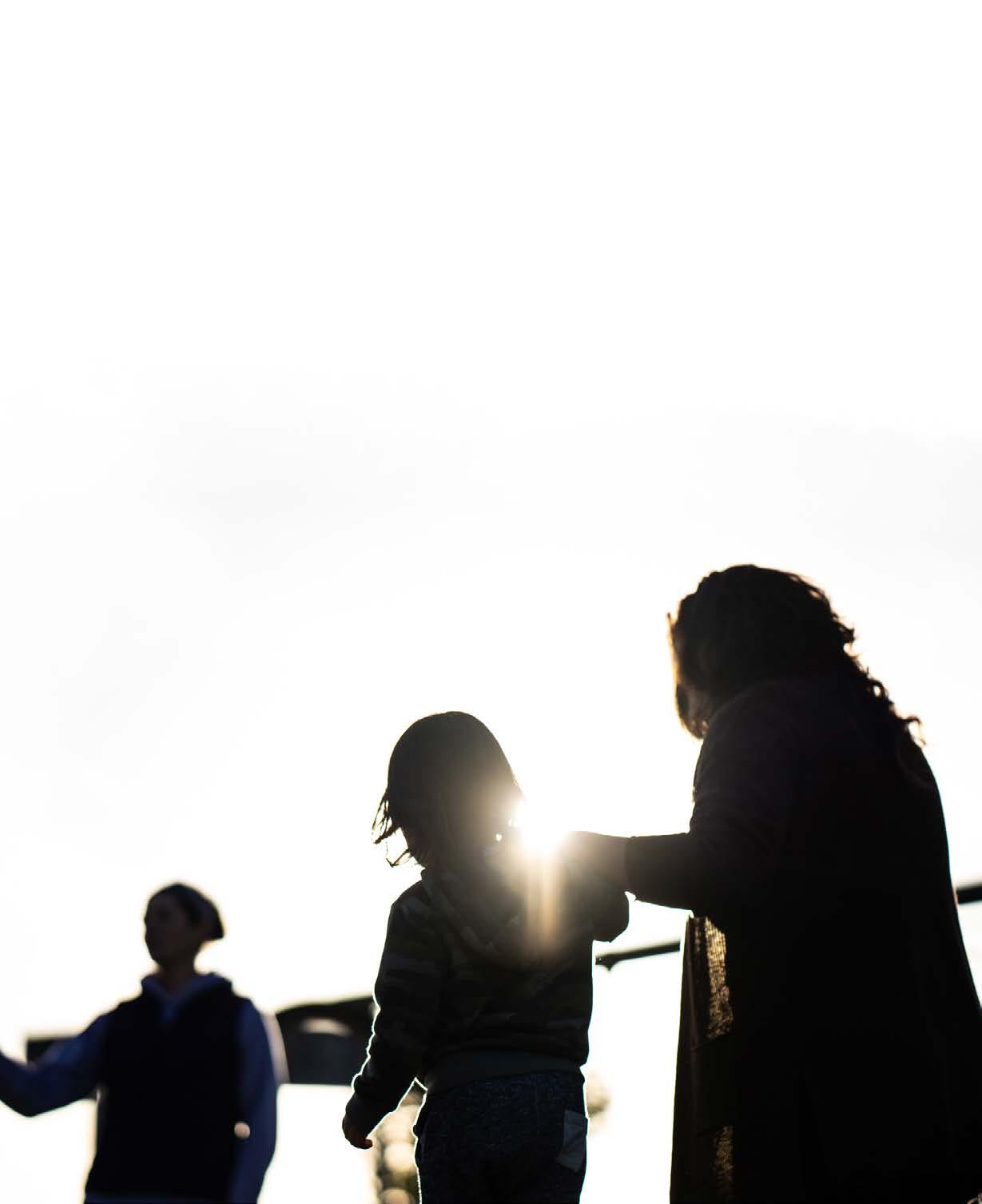
here for over ten thousand years. Everyone can do that. This is a diverse place, and we all have trauma to overcome, we all have so much to offer, and we all deserve to be here together — to live in, and build a future together. We just have to choose collaboration.
The work we have ahead is hard, sure. We have been preparing for over a decade together and I know we are up for the challenge. If you are already connected to the Sustainable Southeast Partnership, thank you! If you’re interested, please get involved. There are open positions across our region, internships, events, opportunities to lend your voice, and resources for all types of Southeast Alaskans. We’re always stronger together.
Gunalchéesh (without you this would not be possible), Háw'aa, Thank you,
Gah Kith Tin Alana Peterson Executive Director, Spruce Root Steering Committee, Sustainable Southeast Partnership
WOVEN
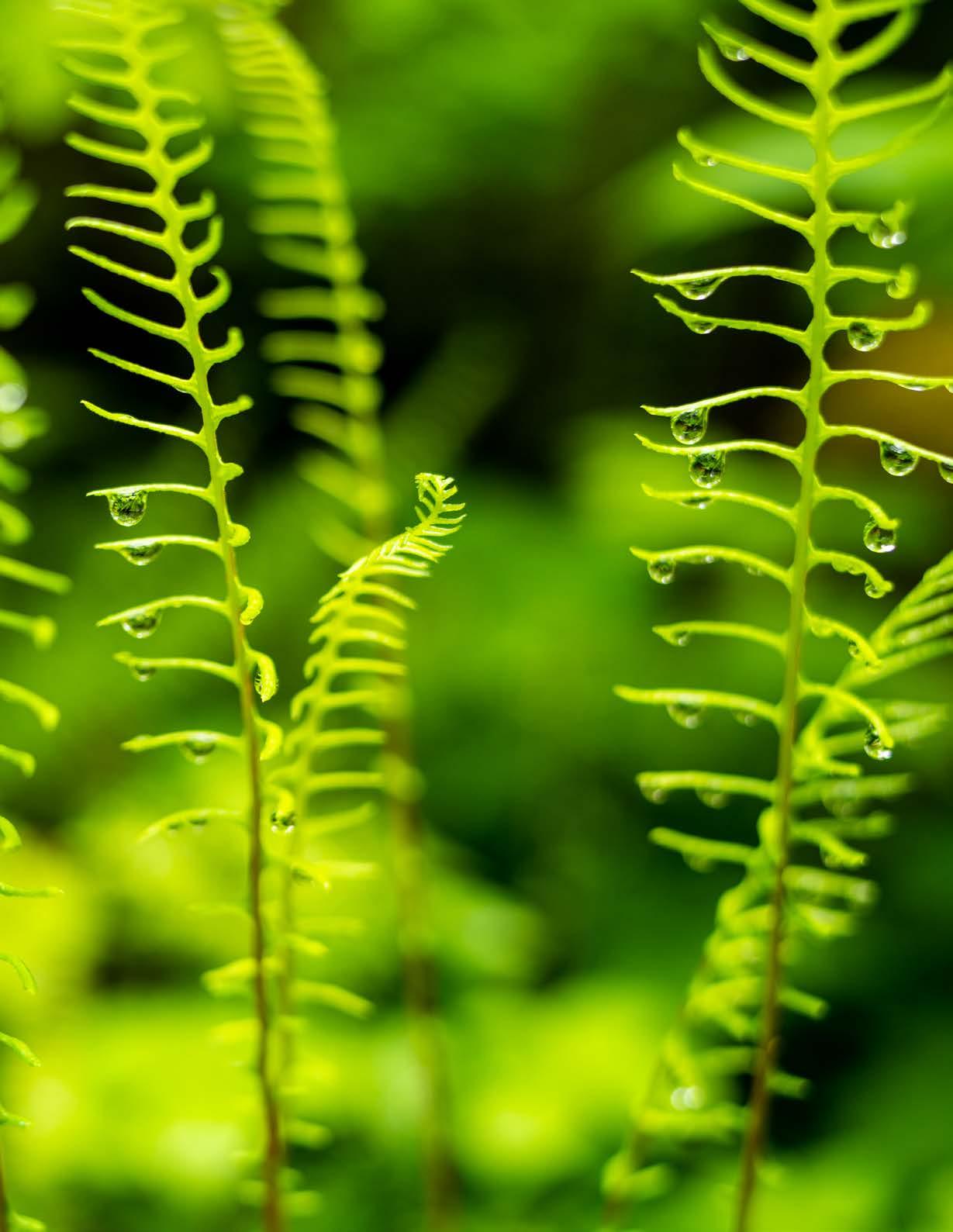






































 WRITTEN BY LEE HOUSE
WRITTEN BY LEE HOUSE

























































 WRITTEN
WRITTEN


















 DEMMERT Angoon School Principal Chatham School District
DEMMERT Angoon School Principal Chatham School District





 Photo: Lee House
Photo: Lee House




















